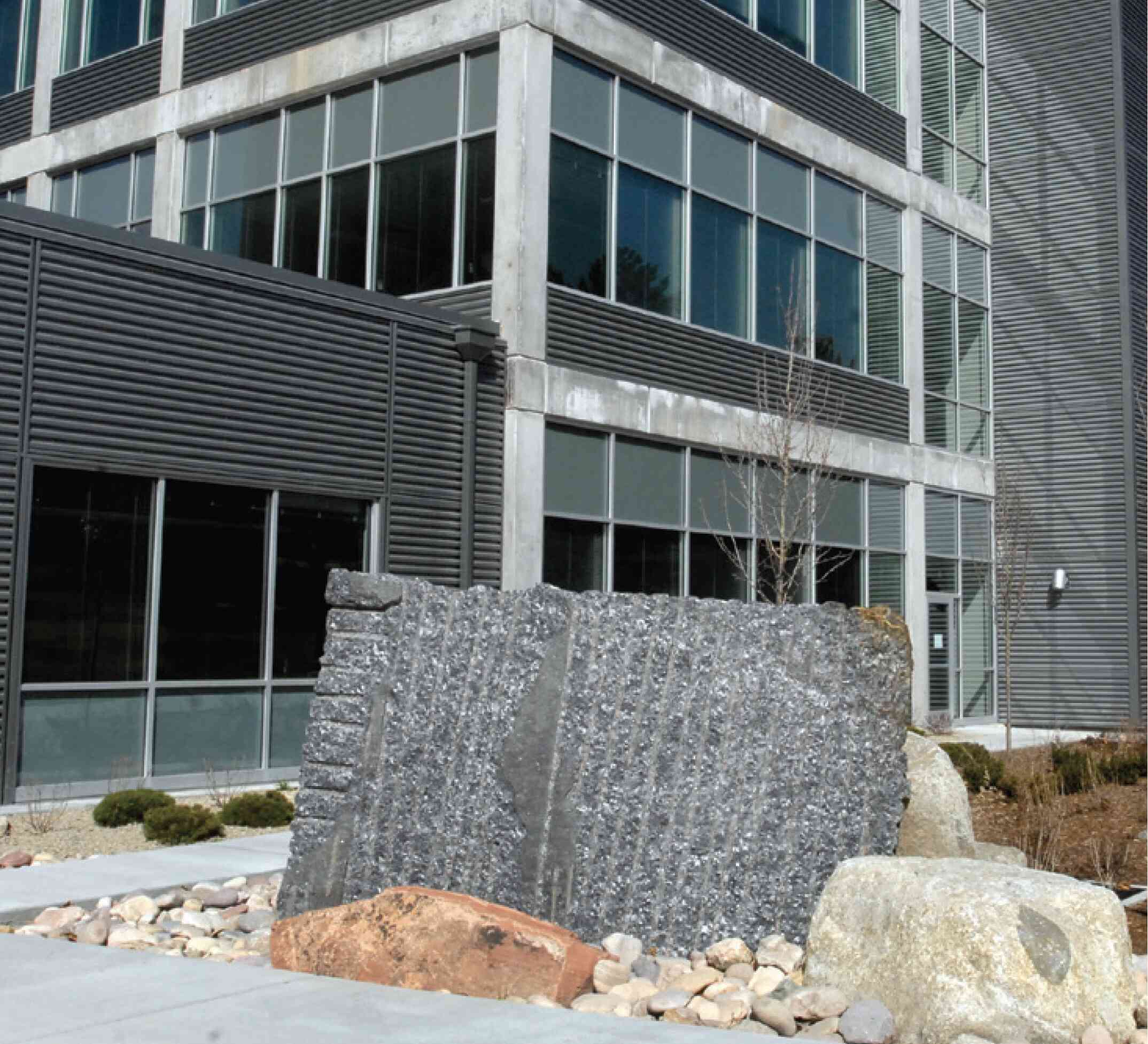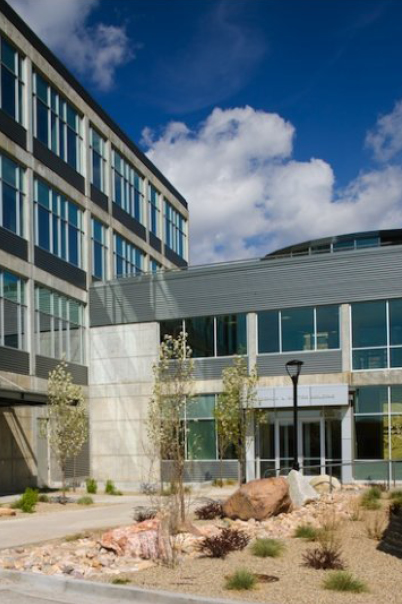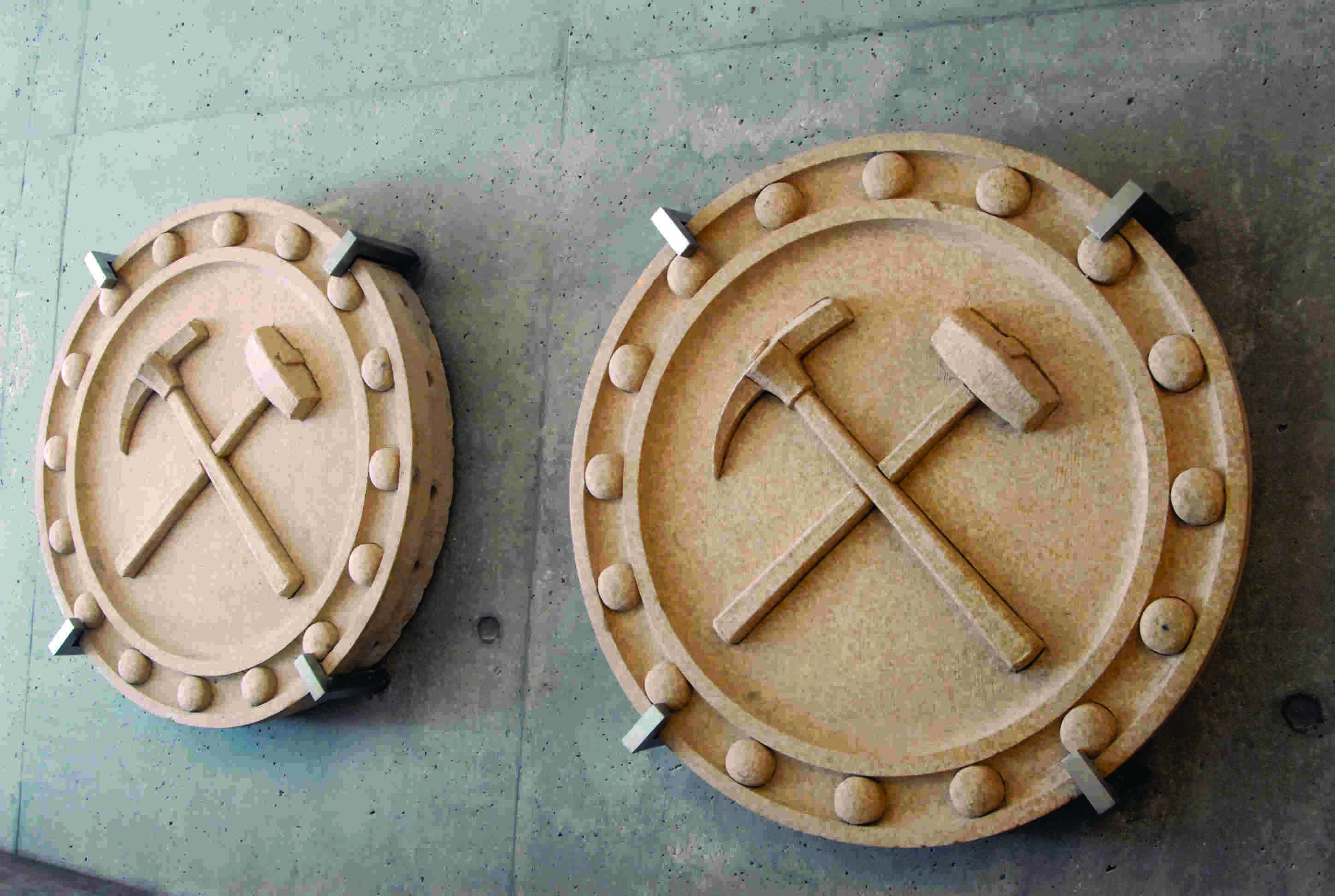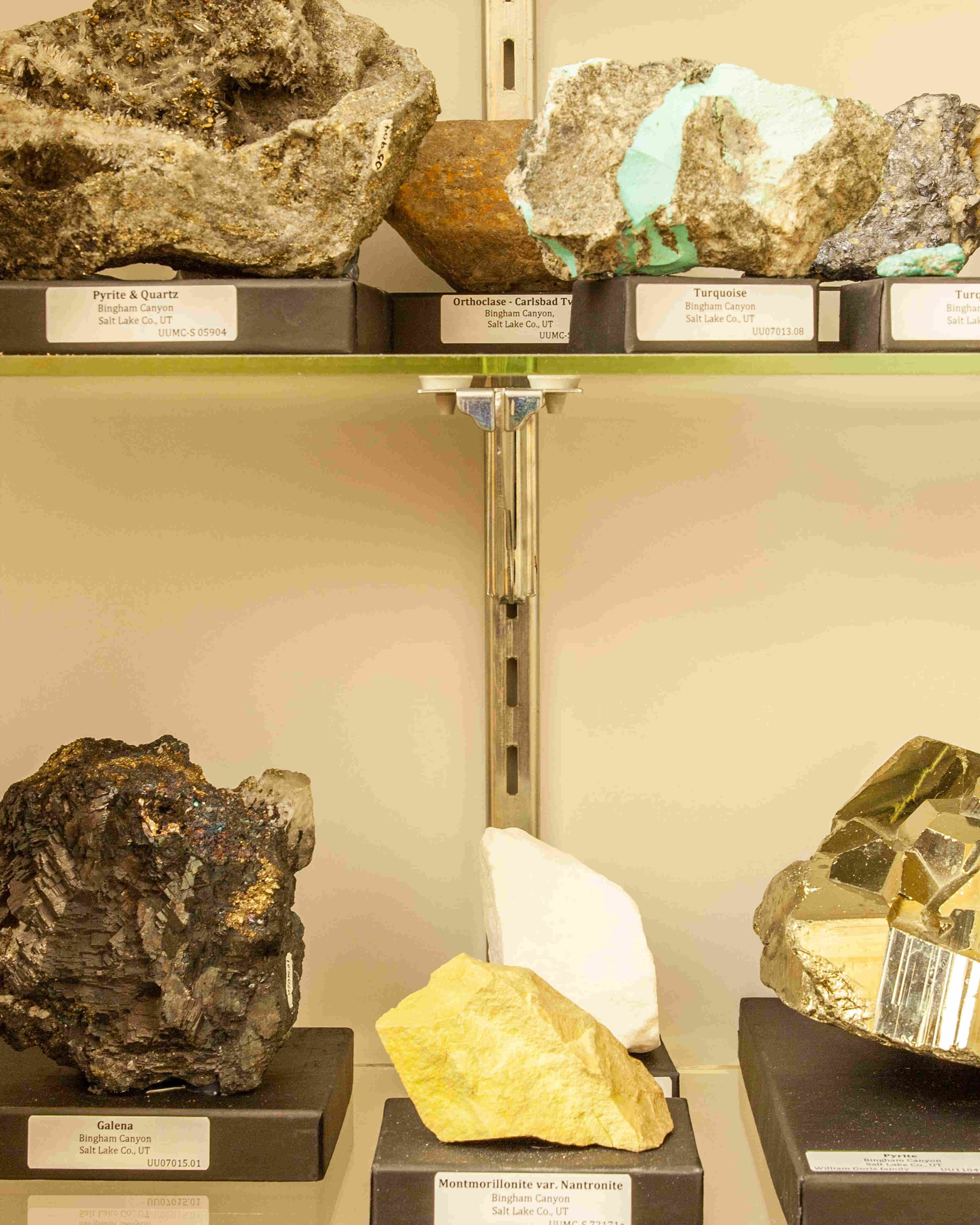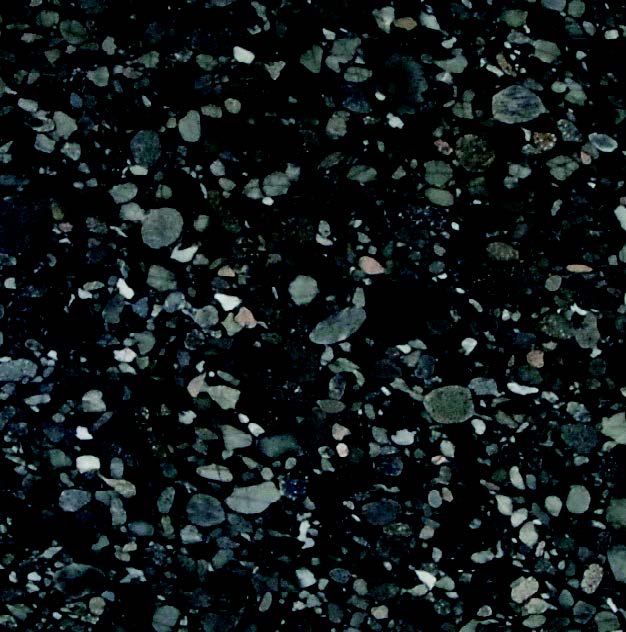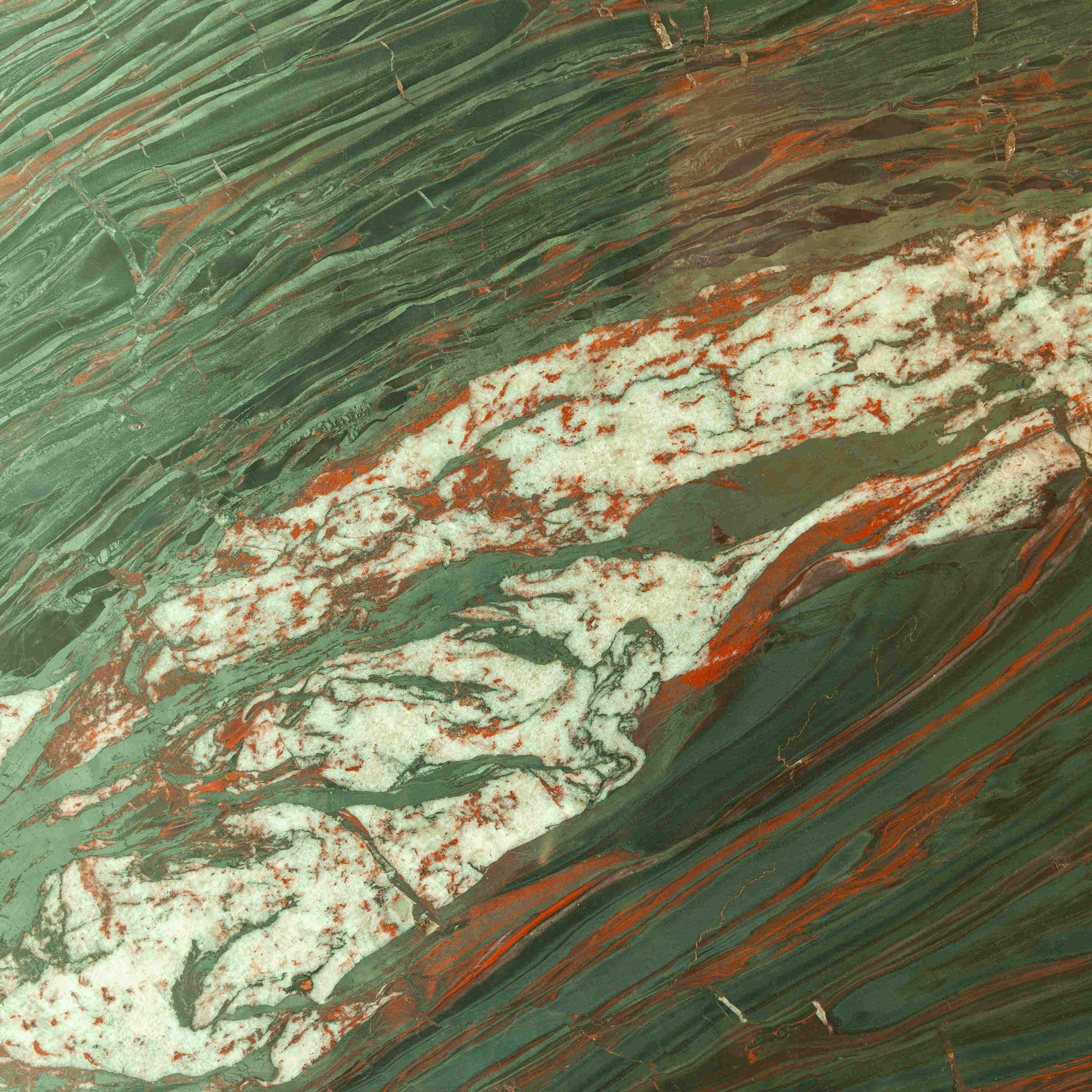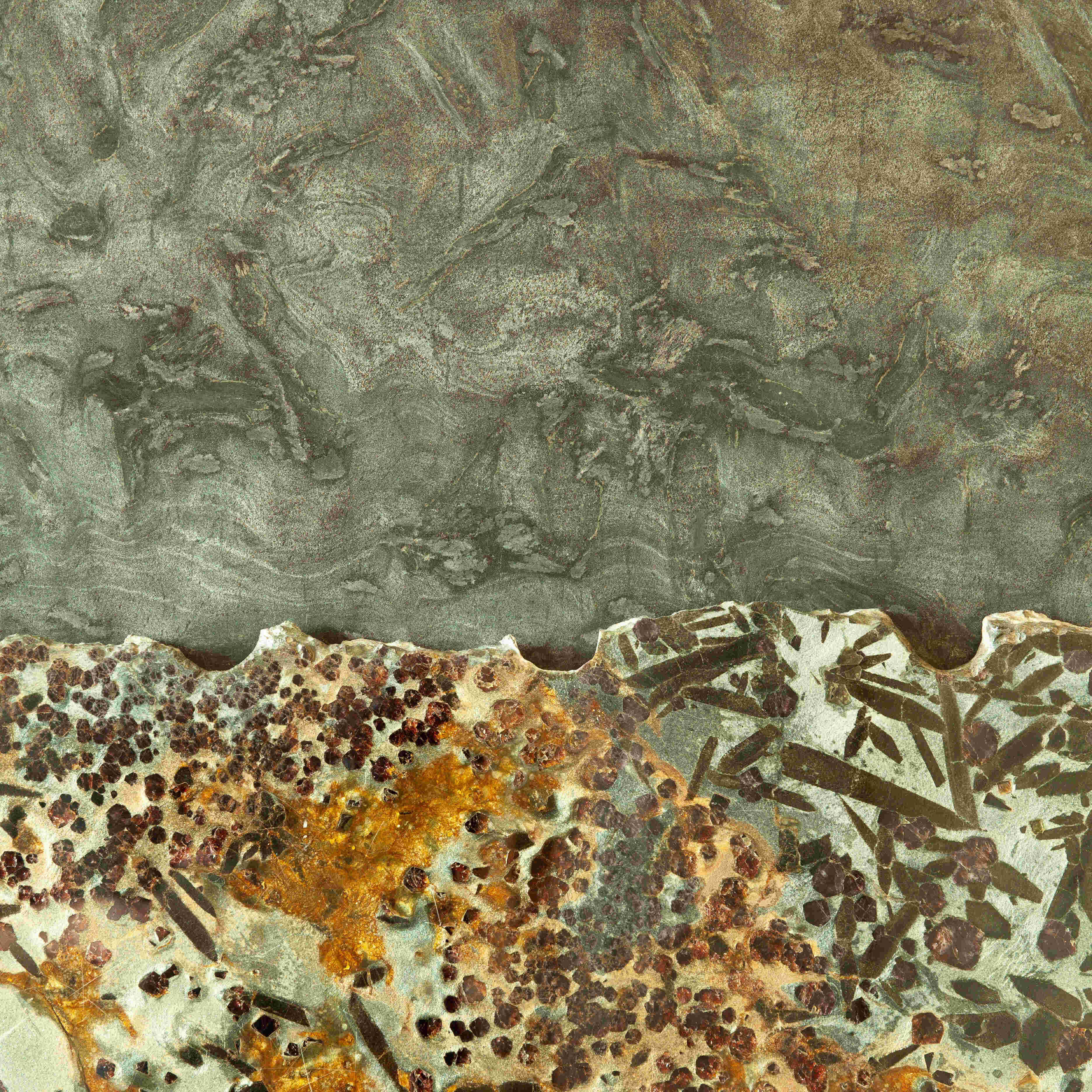Explore the Frederick Albert Sutton Building
THE FREDERICK ALBERT SUTTON BUILDING
The Frederick Albert Sutton Building (FASB), dedicated 17 April, 2009, is the home of the Department of Geology and Geophysics at the University of Utah. FASB replaced the 1927 Mines Building; it was made possible through generous philanthropic support of many individuals and organizations.
The four-story, 91,000 square foot building features classrooms, laboratories, and offices that foster collaboration and innovative research. The building is distinctive in that its architectural design and educational display areas provide an interactive teaching environment and a magnificent showcase for discoveries in the fields of geology and geophysics.
Reverend Marta Sutton Weeks-Wulf provided the lead gift for the project in honor of her father, Frederick Albert Sutton.
Many gifts to the department not currently on display may rotate at different times to showcase the breadth of our collections.

General Overview of the Frederick Albert Sutton Building
Tour of the Frederick Albert Sutton Building
REVEREND MARTA SUTTON WEEKS-WULF
& FREDERICK ALBERT SUTTON
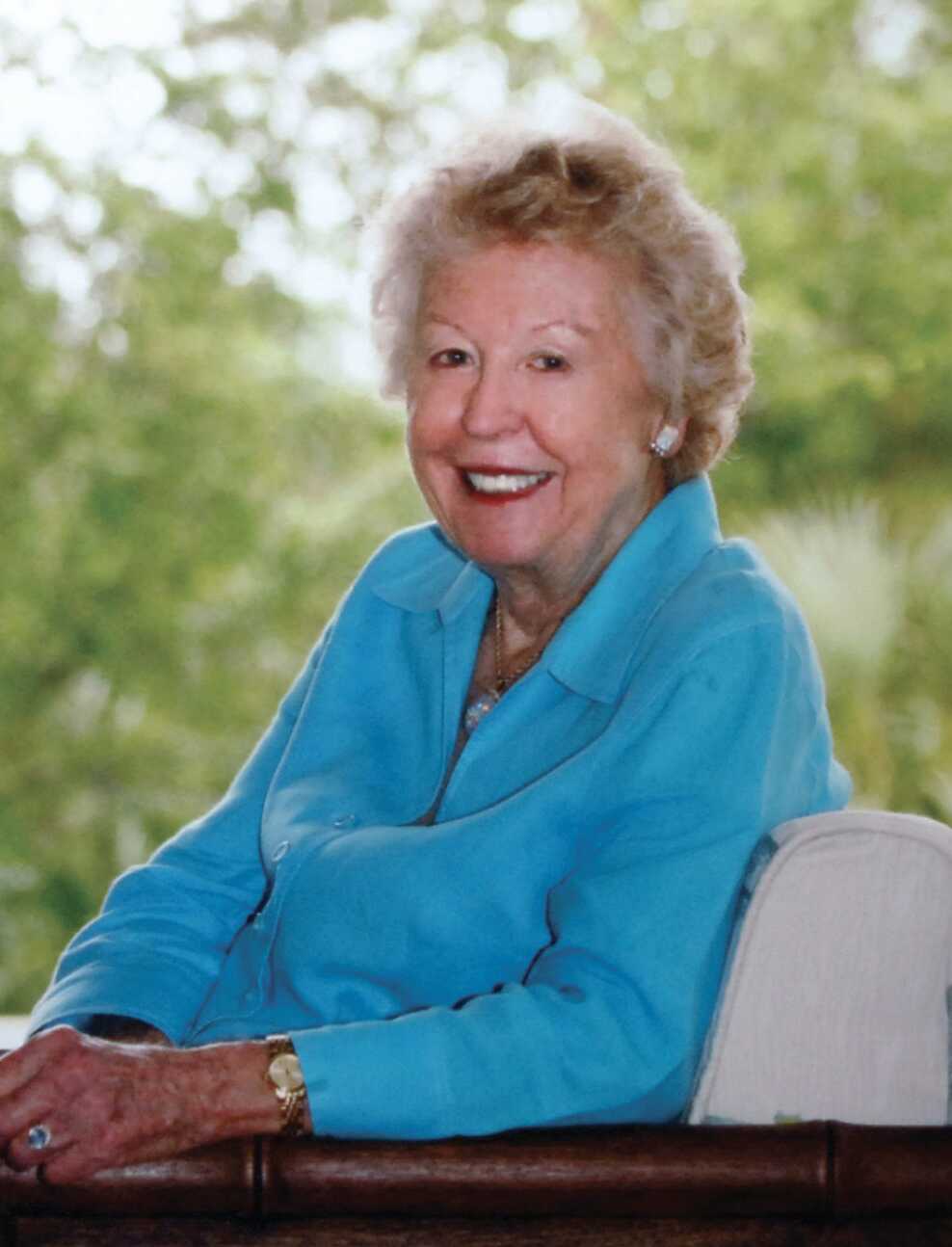

“Although my father’s name is on the building, to me, it stands for all field geologists, everywhere, who have had to work in and under very difficult circumstances. It is my hope that it will continue to enable groundbreaking educational and research opportunities for generations to come.”
- Rev. Marta Sutton Weeks-Wulf
PERSPECTIVE
Upon its completion in 2009, FASB was one of the first Earth science LEED-certified green buildings in the country. With museum-like geologic art displays, many friends and alumni hailed it as the most spectacular geology building in the country. This may sound rather unbelievable, but many who have seen it in person concur. Our own faculty, who have likely visited every major Earth science department in the world, agree that we have created a unique space to showcase our geologic art to inspire and excite students. This serves as an example of what can be done to further infuse Earth science into the community.
As an outreach and recruiting tool, FASB can help attract the very best and brightest to venture into the field. It has also opened many opportunities for the Department to develop community partnerships that were not so easily available before. The building is routinely visited by campus and off-campus groups, University orientation tours, and more. Faculty and architect teams from other institutions come to visit and learn how they can incorporate similar successful elements into their own new or existing buildings. As a “beacon of excellence”, FASB is a prime example of what many other campus buildings want to emulate.
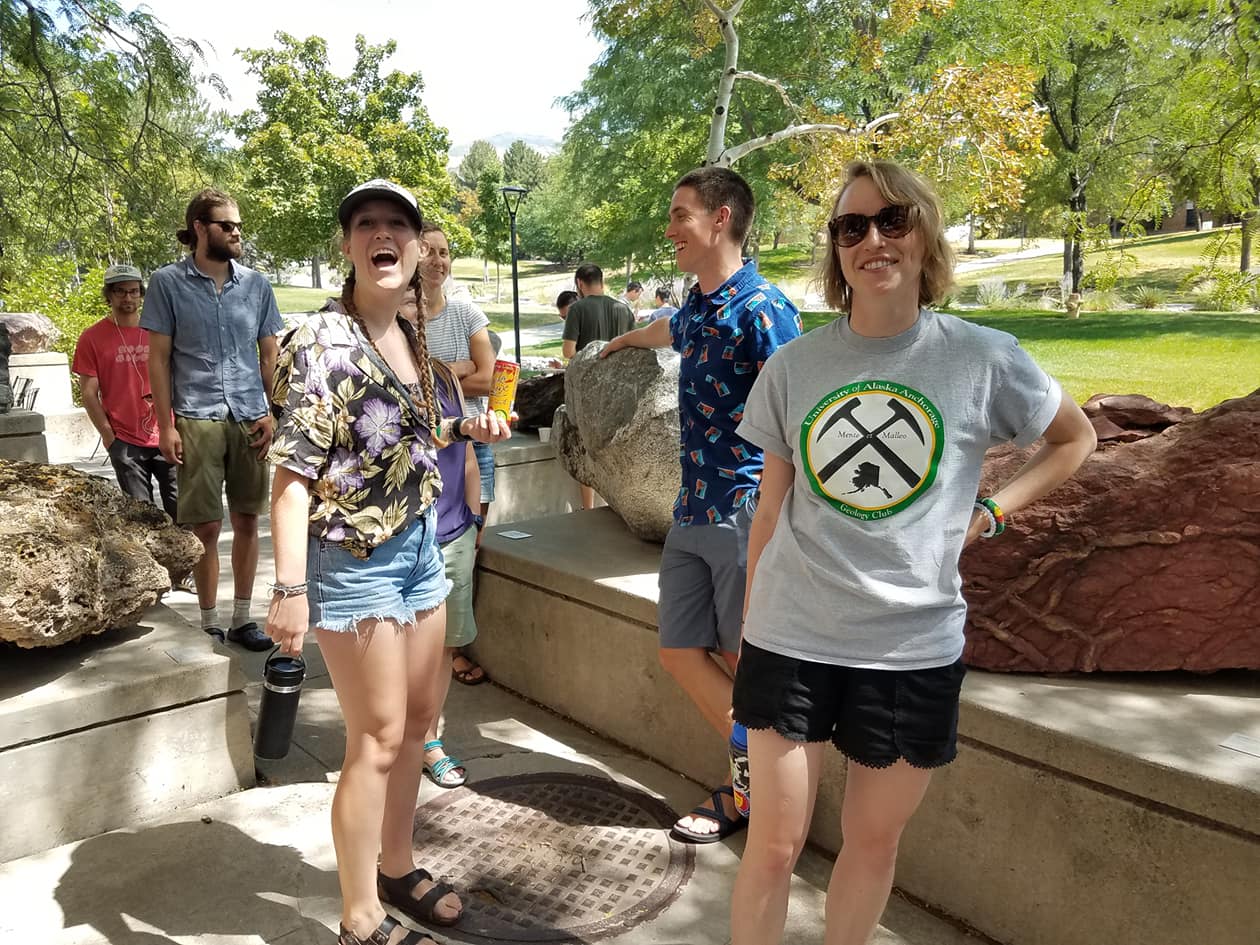

STUDENT TESTIMONIALS
“I came to be in the Geology building because my mom had recommended the coffee shop to me and that I should check out the new building. I had no idea at the time that it would become the building where I would meet the most inspirational faculty and create lifelong friends, but I certainly felt something when I entered the door that day. I indulged in my desire to stare in wonder at the metaconglomerate slabs and the early hominids. I thought to myself, I should take a Geology class.”
“I walked into the lobby of the Sutton Building and was blown away. Every university I had toured prior gave me the same talk about how their geology program was so well funded and supported, but the Sutton Building showed me that what I had been hearing from the U was more than just a sales pitch. I remember walking around the building with my mom and saying “Look! They have ichnites just hanging on the walls! I love ichnites!” The slabs of orthoceras, the Allosaurus skull, the wall of Green River fish, it was all stunning!”
“I was walking the halls of the Sutton building one night at work, making sure all the doors were secure as part of my job as campus security. I walked around the third floor and the displays inspired me in a way that only art can. I came to the conclusion that a career in the earth sciences would allow me to pursue my passions and to have a positive effect on the world. Life works in mysterious ways and though my academic journey has been longer than most, I can truly say that I’ve never been happier and more excited about my future. FASB, its architectural wonders, and amazing geological art pieces were instrumental in helping me reconnect with my inner self and discover the joy it is to be an Earth scientist.“
BUILDING AWARDS
| 2017 - University of Utah – Beacon of Excellence Award for Transformative Undergraduate Experiences; the first building to receive this award as normally it is given to an individual |
| 2011 - Design Utah – Environmental Design Award |
| 2010 - LEED certification (Gold level, Leadership in Energy and Environmental Design), U.S. Building Green Council |
| 2009 - People's Choice – Utah American Insitute of Architects, which the Salt lake Tribune newspaper; a field of 50 entries |
| 2009 - ACI (American Concrete Institute) Intermountain Chapter Excellence in Concrete Award |
| 2008 - Utah Association of General Contractors Building of the Year Award (Category: Higher Education 0-$25 million) |
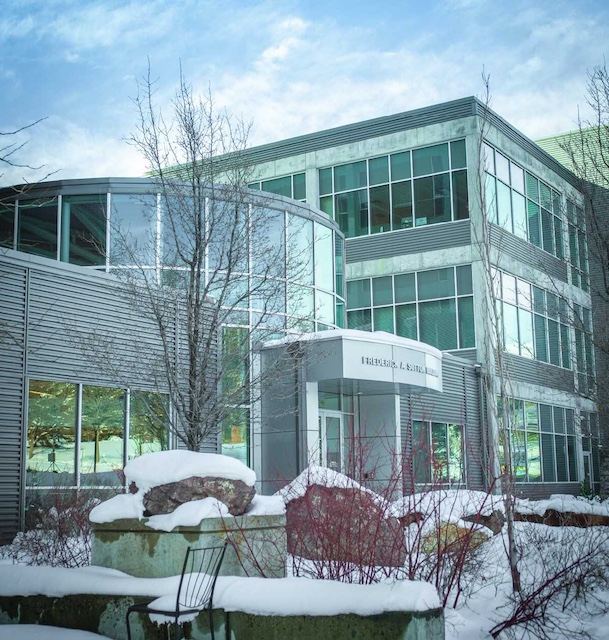
LEED-CERTIFIED BUILDING
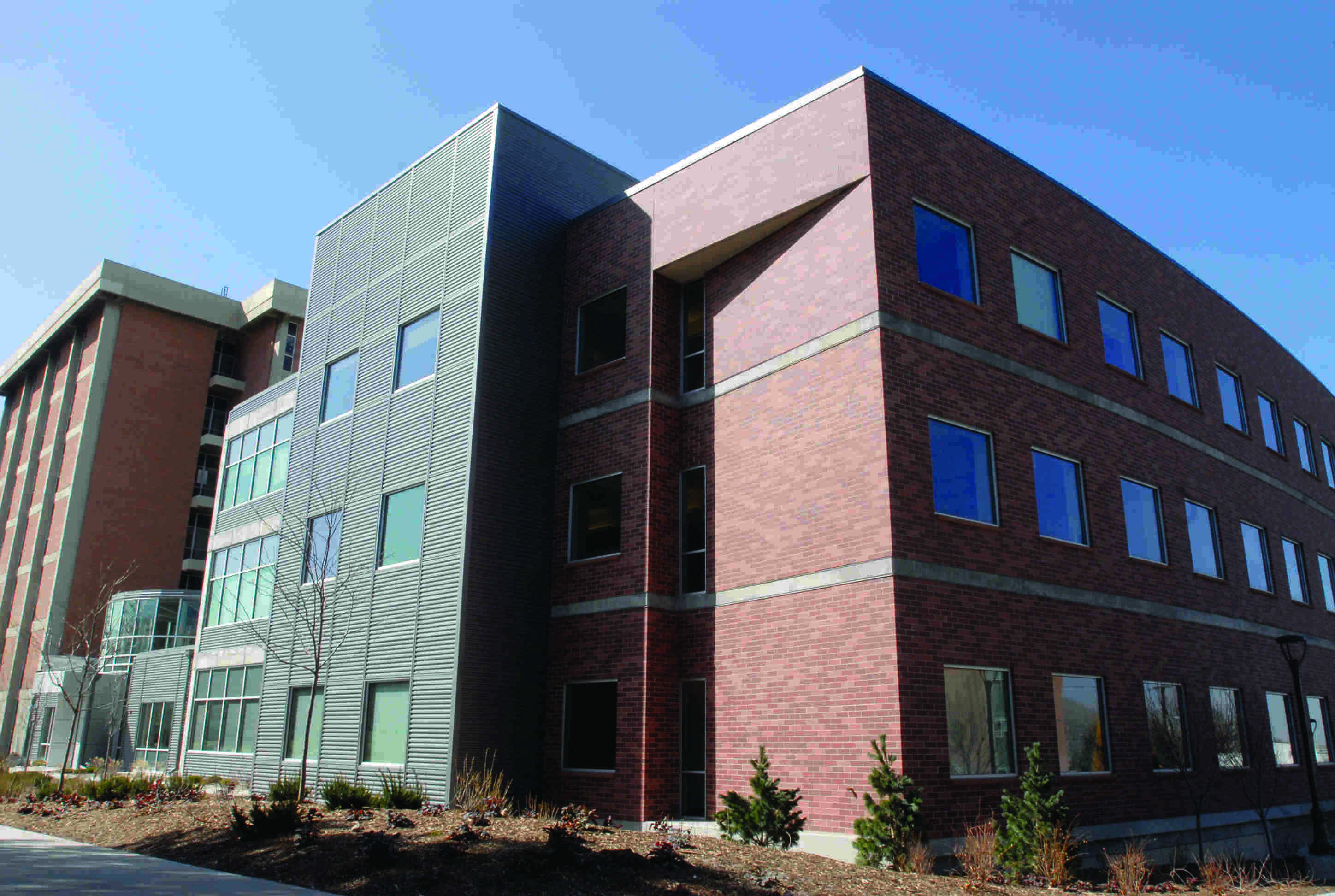
A course in sustainability had students propose eco-friendly projects that were then incorporated into FASB’s construction. FASB became the first LEED-certified building on the U’s main campus and has influenced the design of other U campus projects, along with Earth Science buildings at several other universities. LEED (Leadership in Energy and Environmental Design) is the nationally accepted benchmark for the design, construction, and operation of high performance sustainable buildings. The building has reinforced concrete in the foundation and walls that minimizes vibrations, allowing researchers to make more accurate analytical measurements. Exposed concrete walls in the interior provide structural support against seismic ground motions. Stylized sedimentary “cross bedding” features formed in the concrete of the north and west exterior walls of the building herald a geological theme that continues throughout. Watch a Virtual Tour of Leed Certification.
- General Contractor: Gramoll Construction
- Building Architecture: Myron Richardson of Brixen-Christopher, with engineering by Cooper-Roberts-Simonsen and Associates
- Decorative and Educational Displays: John and Lee Diamond of Diamond Phillips
Scoring levels for the rating of LEED-certified buildings include evaluation in 6 categories:
- Sustainable sites
- Water efficiency
- Energy and atmosphere
- Materials and resources
- Indoor environmental quality
- Innovation and design process
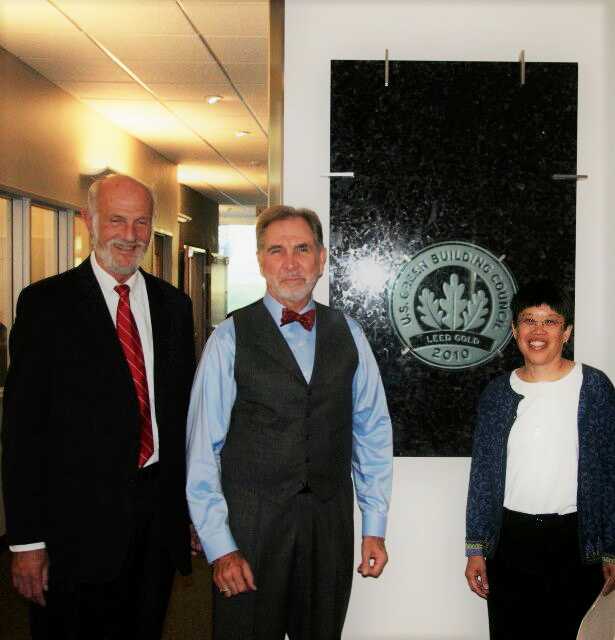
LEED certification plaque with Dean Frank Brown, U of U President Michael Young, and Department Chair Dr. Marjorie Chan (2009).
EVENTS AT FASB
FASB is often brimming with activity, including a weekly Distinguished Lecture Series, a weekly refreshment hour, public building tours, K-12 fieldtrips, Geofest (a bi-annual event for students to learn more about the department), and so much more!
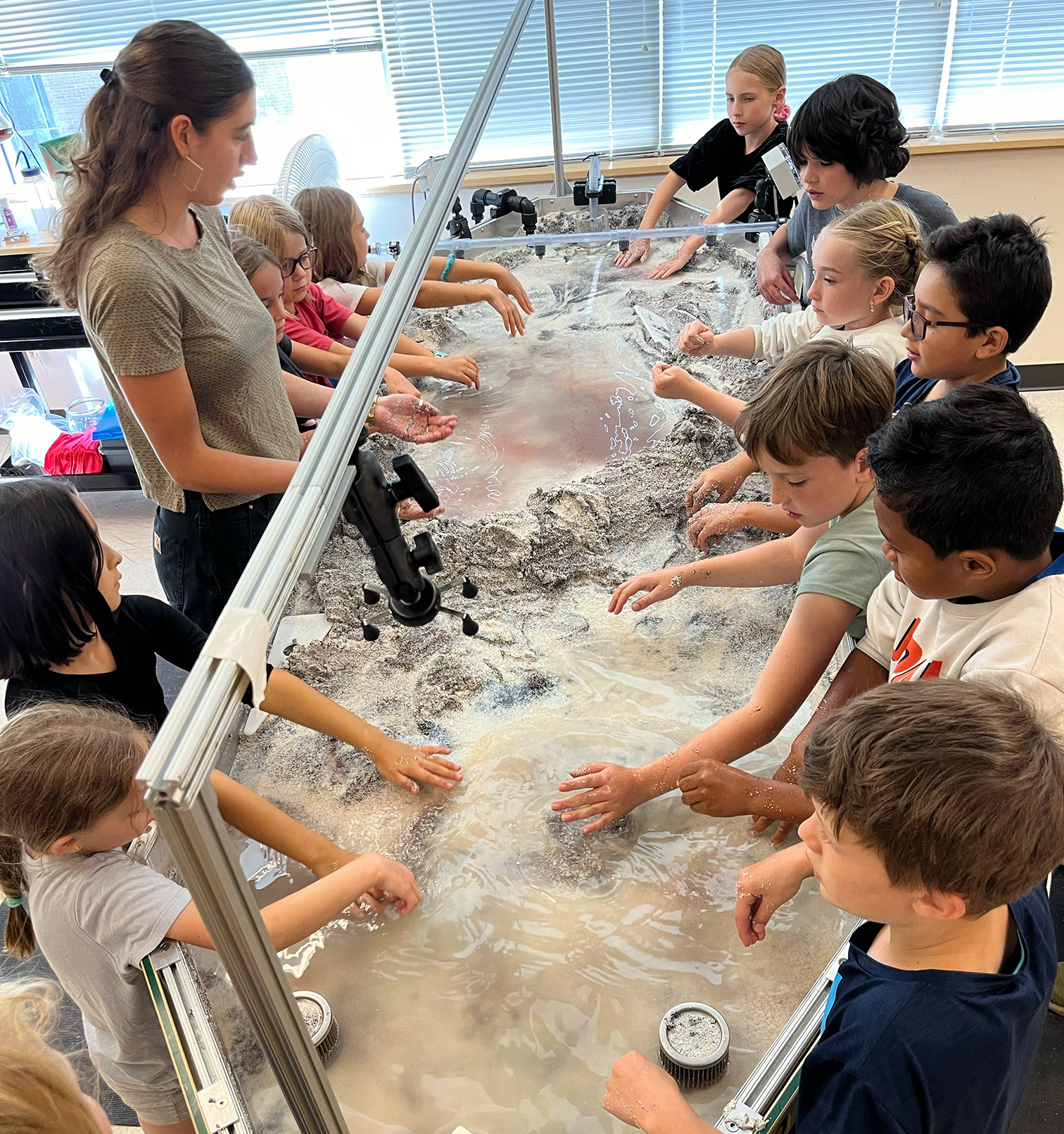
EXPLORING OUR FLOORS
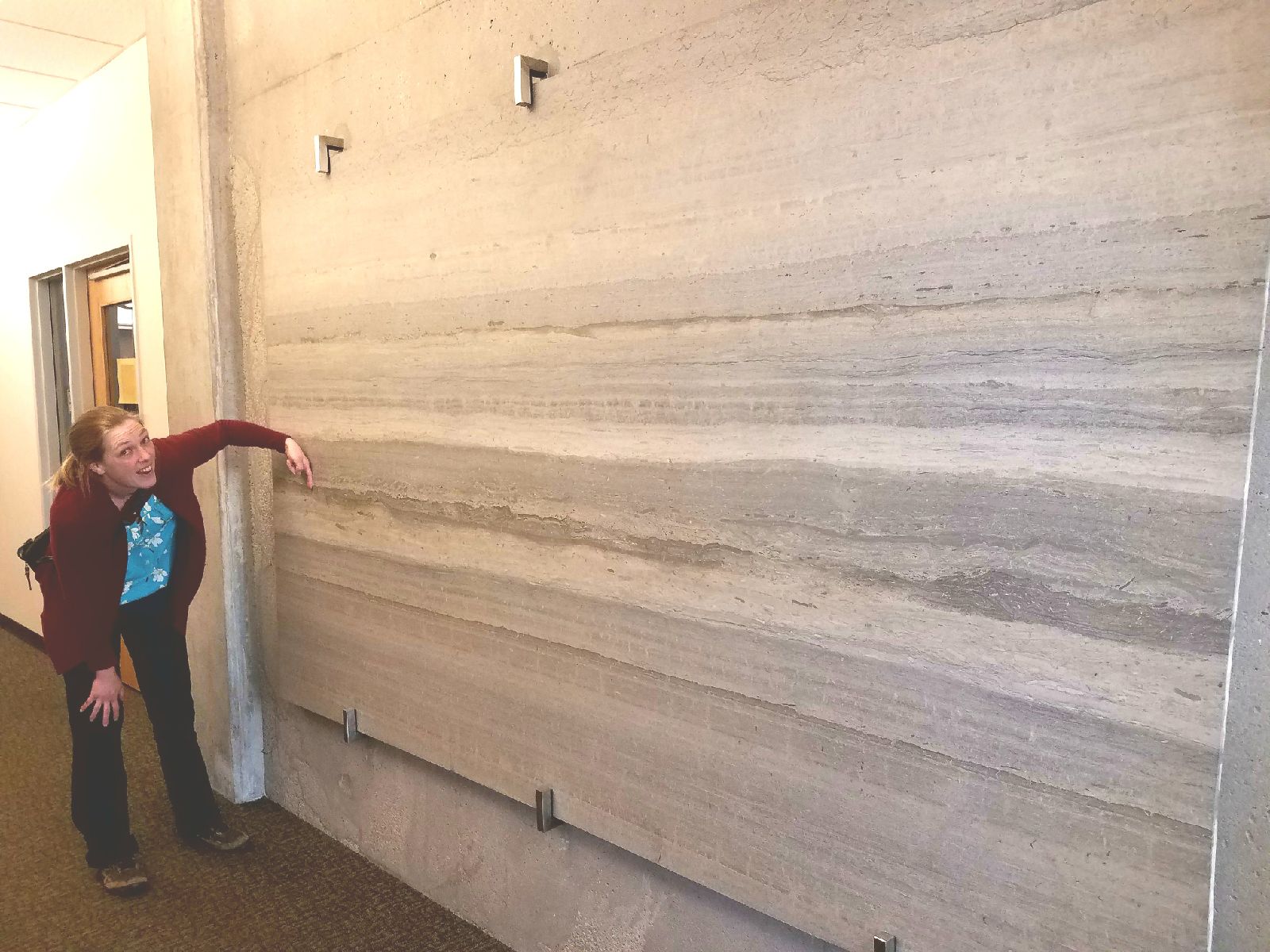
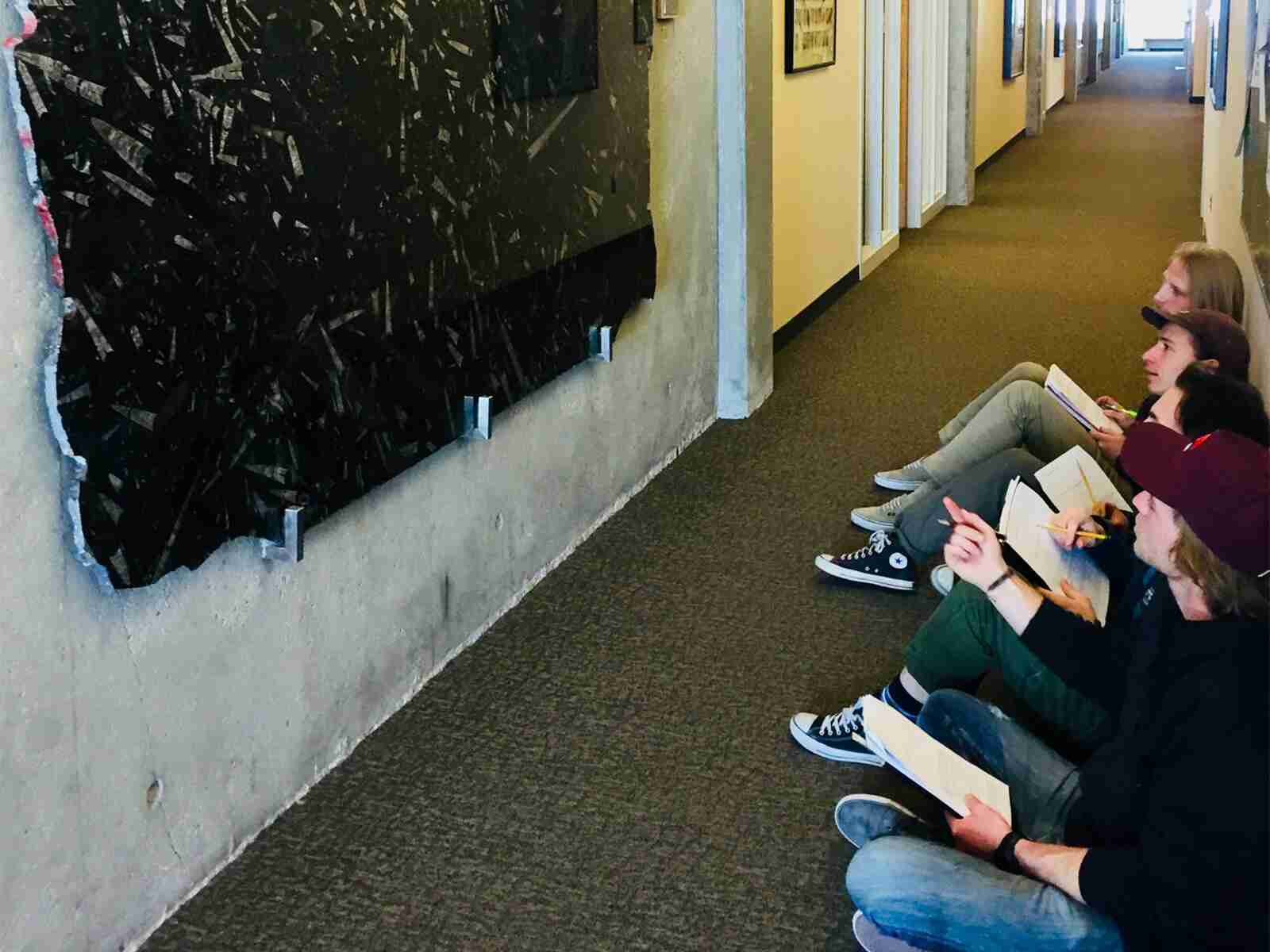
One of the unique aspects of FASB is that it blurs the traditional boundaries between bricks and mortar and educational programs. There has never been a more important time to understand the planet Earth and the role of our science in society.
Spectacular rock slabs displayed on all four floors tell about various Earth processes and come from around the world. All of FASB’s displays are carefully selected to teach specific geologic concepts. The building is “stratified” with its faculty in the subdisciplines of solid Earth (second floor), Earth history (third floor), and Earth’s surface (fourth floor). Many of the rock slabs were given by or acquired from Arizona Tile, Contempo Ceramic Tile, Daltile & Stone, European Marble & Granite, North Salt Lake Marble & Granite, Western Hills, The Stone Collection, Bedrosians, and State Stone. In addition, polished stone accent table tops, gifted by North Salt Lake Marble & Granite, are scattered throughout the building and tell additional geologic stories.

Countertop Geology: A new class, Countertop Geology, was designed to enchance our knowledge of the rock slabs commonly used for kitchen countertops. Student in the class study the slabs with petrographic microscopes and department analytical instrumentation.
Digital Database: A new digital database is being compiled to develop and aggregate teaching resources based on FASB’s displays. This is another innovation that will be a valuable resource to others who similarly want to use rock slabs as teaching tools.
BUILDING MAP

EAST ENTRANCE/SECOND FLOOR
Landscaping at FASB’s east entrance is designed to merge with the Rock Garden in front of the adjoining William Browning Building. A dry-river cobble bed outside the east entrance, facing the Wasatch Mountain, extends inside the building as a sinuous stream of pebble tile. Encased in epoxy, the pebble stream moves westward toward the stairway where it, like the stairway, drops to the first floor. The pebble stream continues flowing westward toward the first floor entrance where, outside the building, it once again becomes a dry-river cobble bed and continues toward the Salt Lake Valley.
|
|
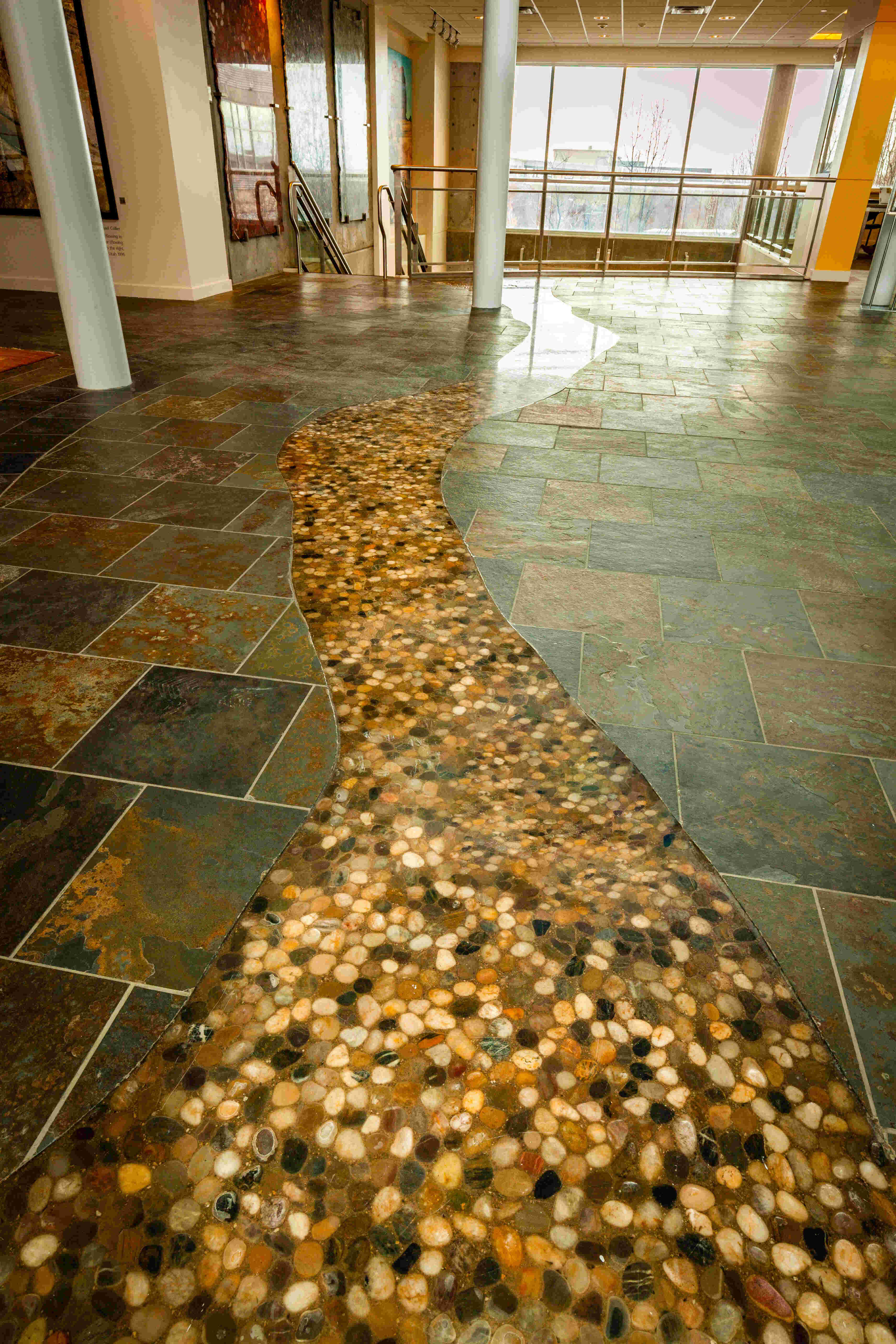 The multicolored slate tiles are Precambrian (Neoproterzoic) from the Serra da Santa Helena Formation, Bambuí Group of the São Francisco Supergroup, Minas Gerais State, Brazil and are gifts from Daltile & Stone and Green Slate Mining. The river pebbles are from China, donated by Solistone, Inc. |
|
The angled rock slab just outside the east entrance is |
SECOND FLOOR DISPLAYS & SLABS
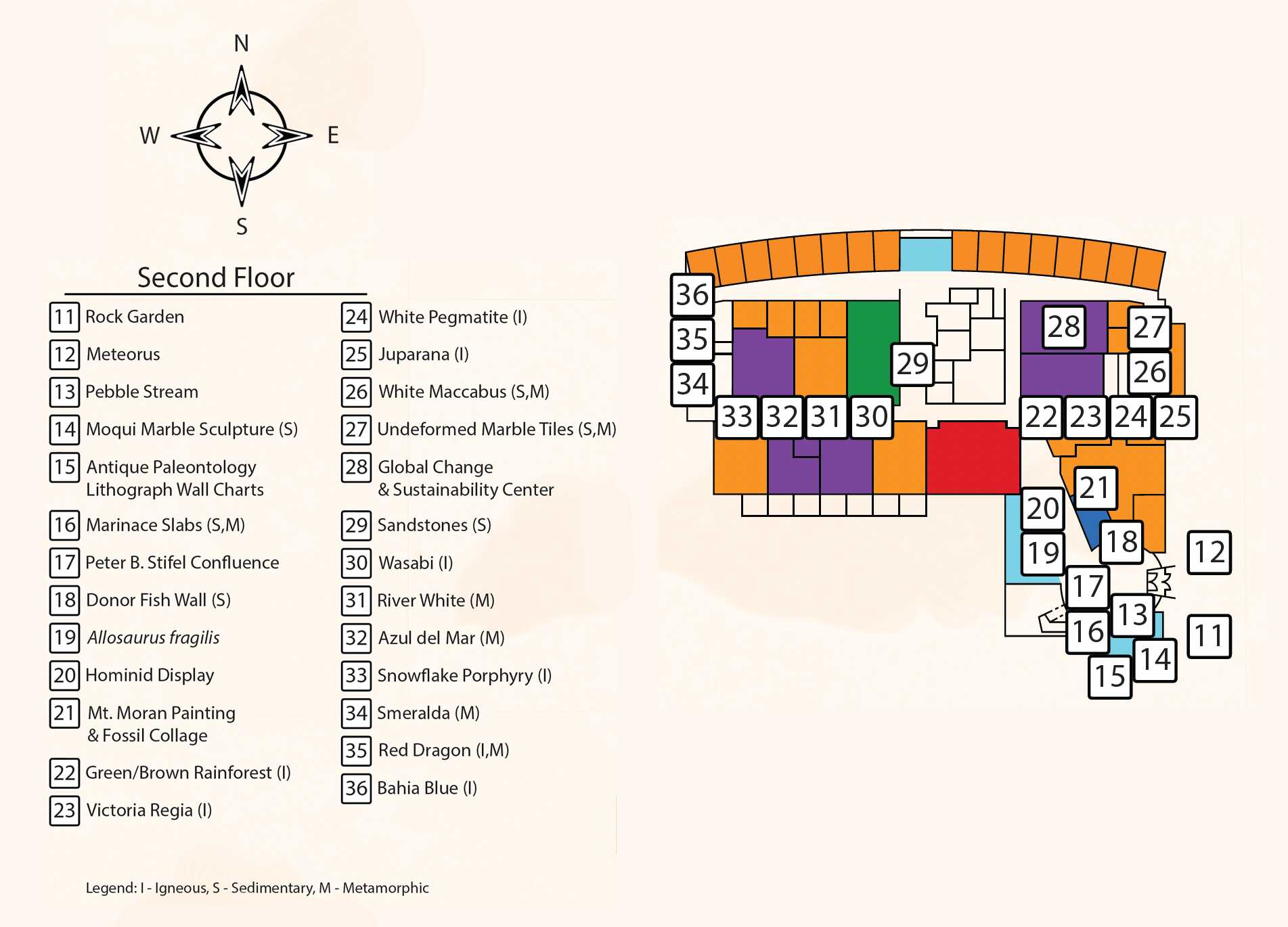
PETER B. STIFEL CONFLUENCE
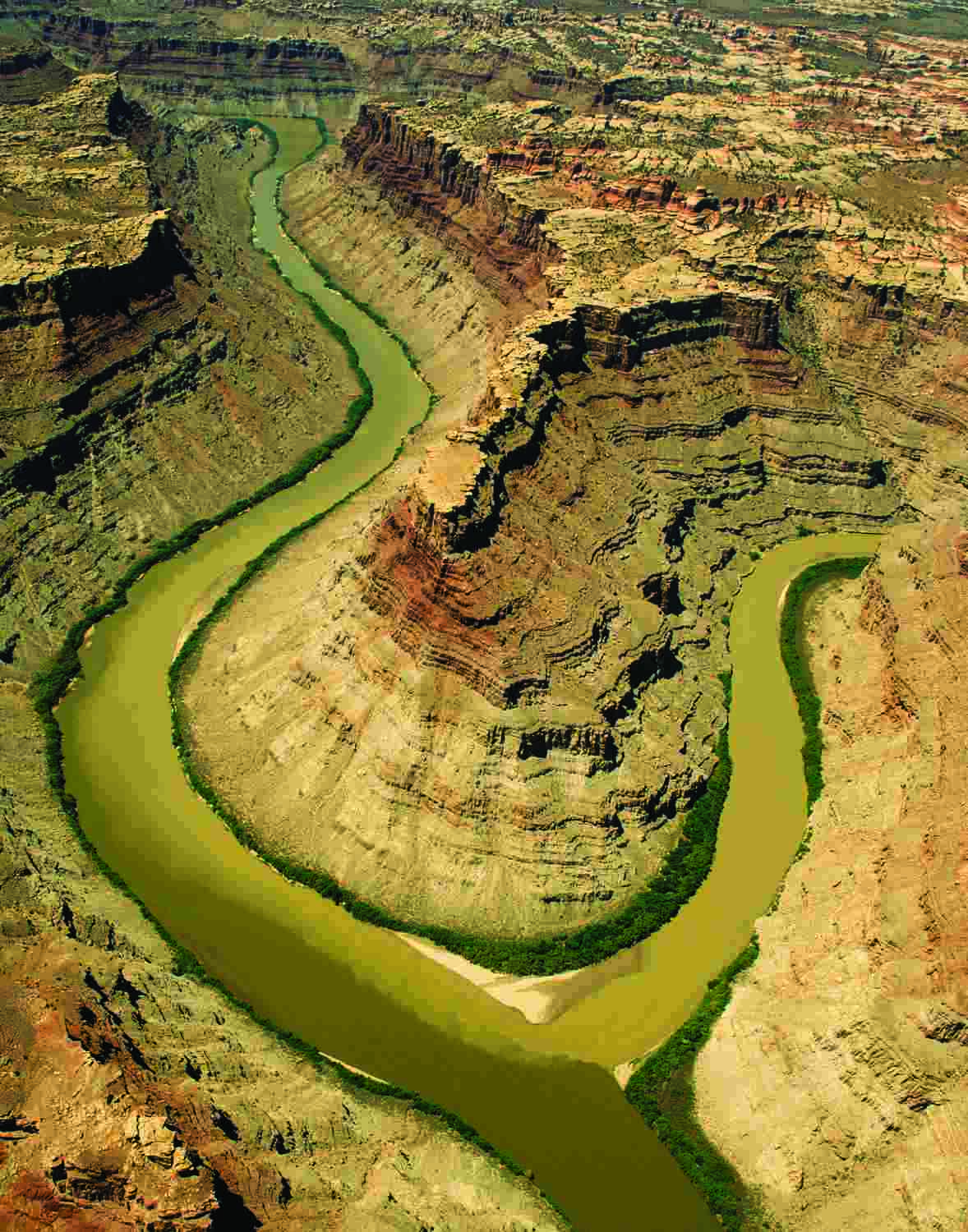
In keeping with the river theme, the second-story rotunda at the east entrance is
named The Peter Stifel Confluence, in honor of the 1964 Ph.D. geology alumnus of the University of Utah. This confluence
is where FASB joins the William Browning Building, home of the Departments of Metallurgical
Engineering, Mining Engineering, and Atmospheric Sciences.
A majestic aerial photograph of the confluence of the Green and Colorado Rivers in southern Utah, accompanied by a quote from the famed early explorer of the western U.S., John Wesley Powell, hangs near the stairway in The Peter Stifel Confluence. The photo was taken by geologist and professional photographer Michael Collier.
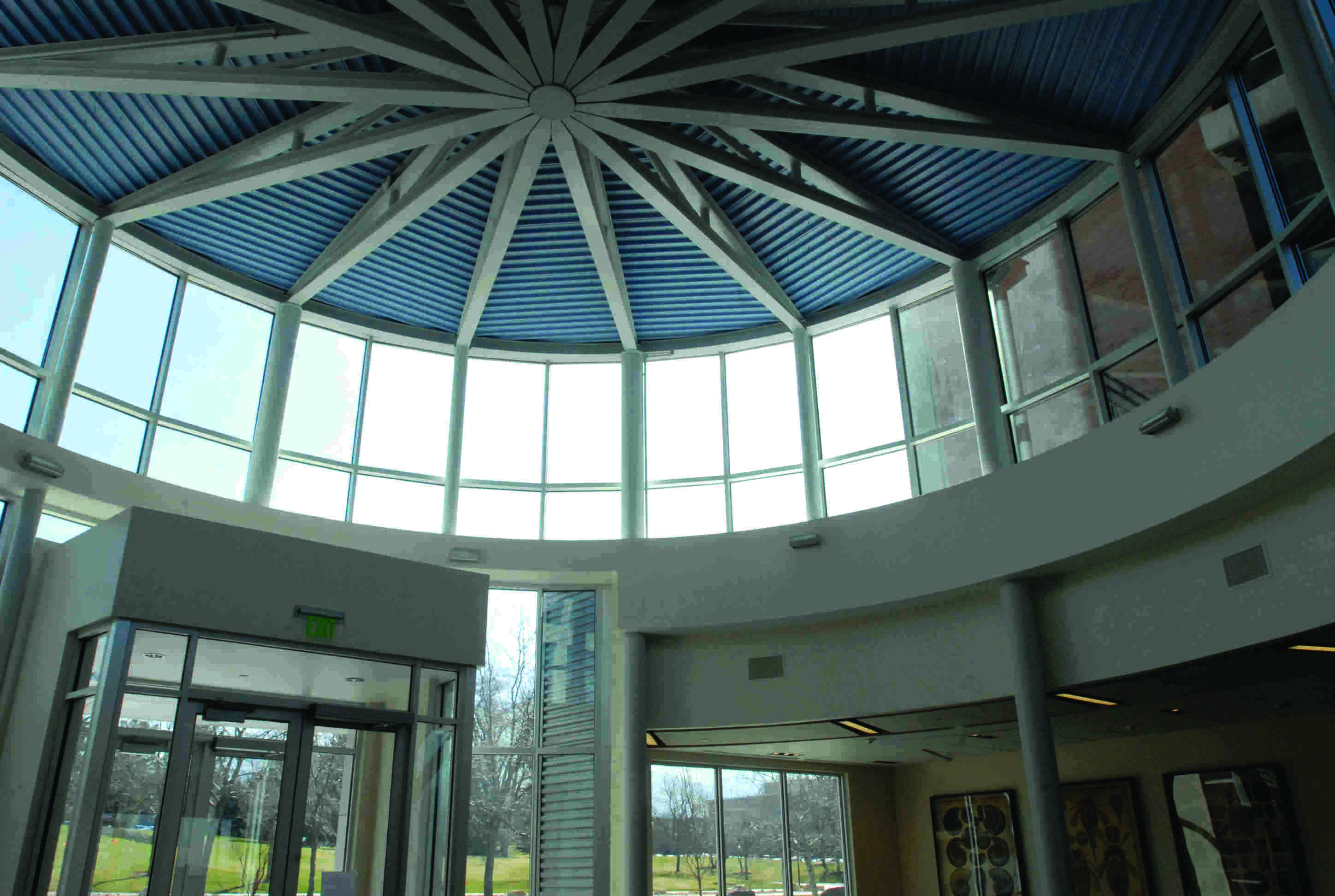
AN IRON CONCRETIONS JOURNEY SCULPTURE

This sculpture features iron concretions of the Jurassic Navajo Sandstone from the
Grand Staircase Escalante National Monument that are embedded into Triassic Chinle
Formation sandstone, known by the trade name “Kanab Goldenstone”. This rock highlights
a few of the many sedimentary and fluid flow processes that are visible in southern
Utah’s iconic landscape. The concretions were recovered by the Federal Bureau of Land
Management (BLM) during an investigation into illegal collection of these protected
resources. BLM then released some concretions to the Department of Geology and Geophysics
for educational use. The Goldenstone was acquired through collaboration with Ken Brown
and Western Hills Rocks & Gems Inc., and the stone relief concretions were creatively
embedded by Susan Judy of Stone Quilt Design.
DONOR FISH WALL
The Peter B. Stifel Confluence is also home to a spectacular display of 104 Eocene age Green River fish fossils— some 50 million years old—from Fossil Lake near Kemmerer, Wyoming. The fish, including Knightia, Priscacara, Diplomystus, and Mioplosus, are arranged in a school. The edges of the display are framed in polished Green River “marlstone”, made of lime-stone and dolomite, which has been set on its edge to show laminations. Fine, organic-rich oil shale laminations provide the dark-colored stripes in the frame.
The donor listing at center of the fish wall pays lasting tribute to the individuals and organizations whose generous gifts made the construction of FASB possible.
Virtual Tour of Donor Fish Wall
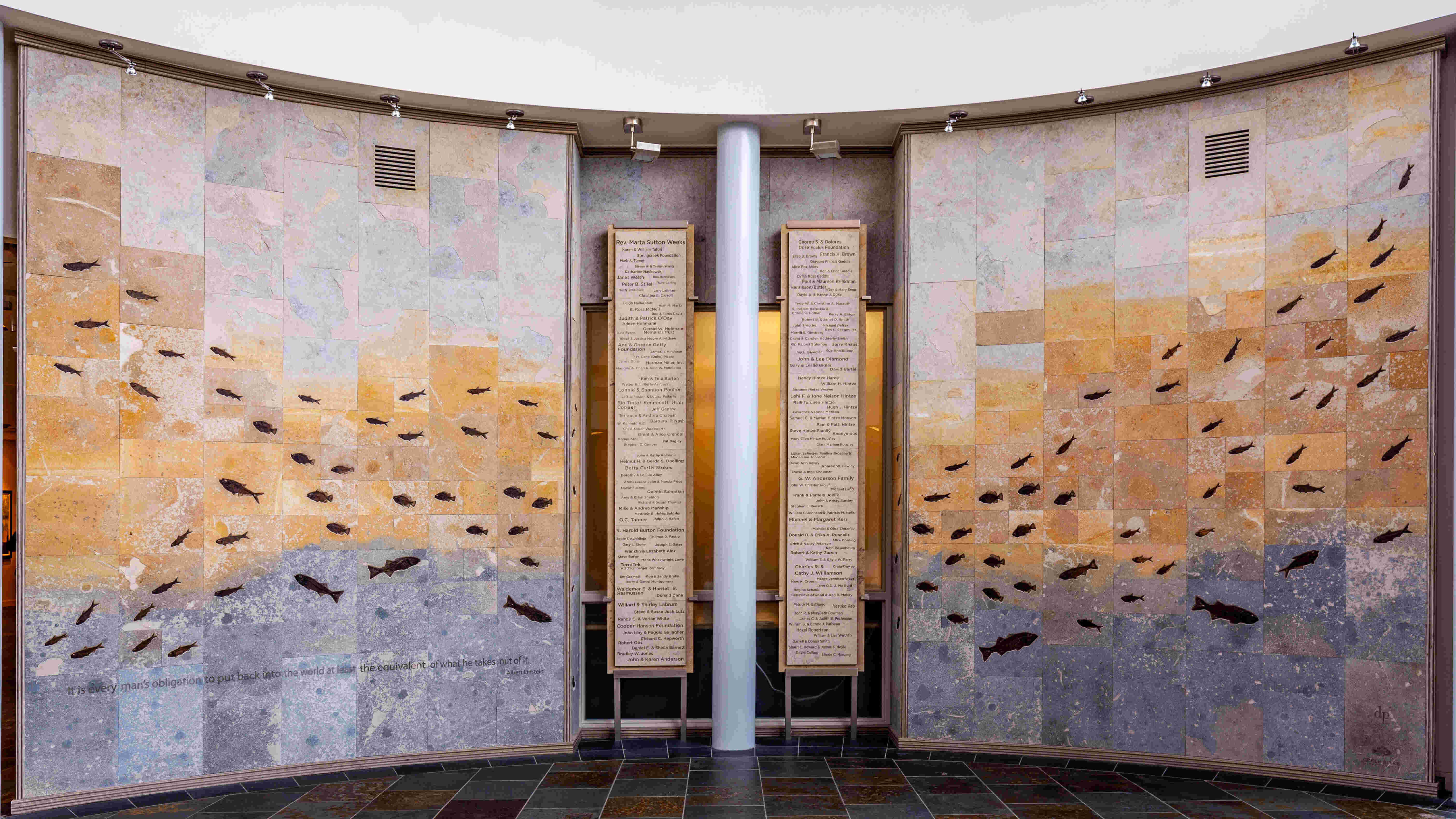
Architect John Diamond of Diamond Phillips designed the donor wall, fish display,
and variation in stone colors.
The fish fossils, stone pieces, and edge frame treatments are from Green River Stone
Company.

ANTIQUE PALEONTOLOGY LITHOGRAPH WALL CHARTS
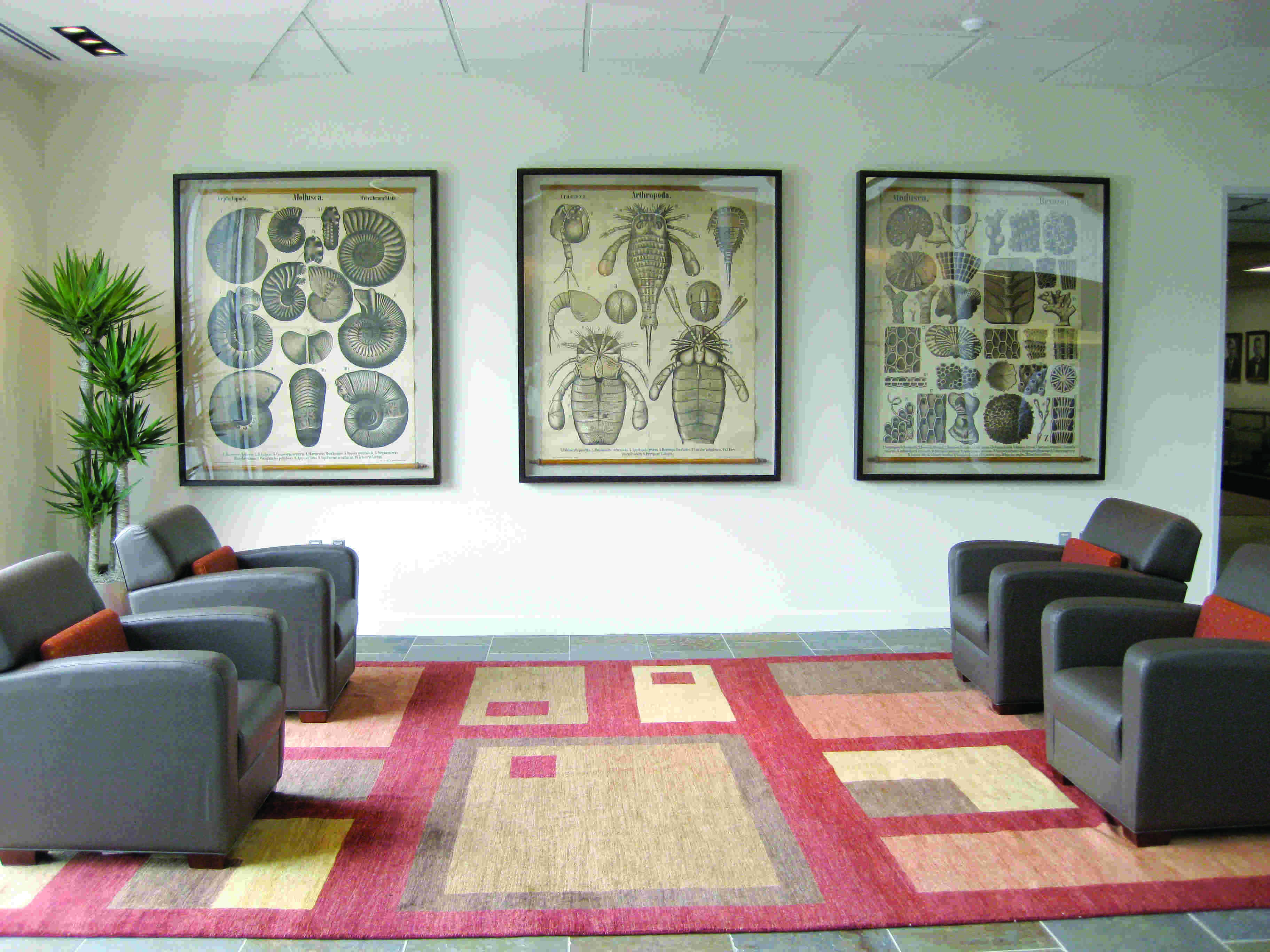
The large, framed teaching charts hanging throughout the second and third floors were produced by Karl Alfred Zittel (1839-1904) in the German volume “Palaeontologische Wandtafeln,” Druck und Verlag Theodor Fischer, Cassel (Printing and publisher Theodor Fischer, Cassel, 1879-1891).
Virtual Tour of Antique Lithographs
A large, handmade, Pakistan wool rug gifted by Adib’s Rug Gallery, and plants acquired from Cactus & Tropicals, add warmth to the Confluence area. Furniture from Henriksen-Butler.
PLANT WALL
Just around the corner from the Confluence is an equally spectacular display of carbonized leaf fossils, also from the Green River Formation and ancient Fossil Lake. Because plant fossils—particularly ones that are well-preserved enough for use in scientific research—are generally quite rare, the Plant Wall is one of the best displays in the country.
This remarkable collection of plant fossils come from the Ulrich fossil quarries near Kemmerer, Wyoming. Dr. Lonnie and Shannon Paulos generously donated this collection to the University of Utah. Other portions of his collection are housed within the Department of Geology and Geophysics and the Natural History Museum of Utah at the University of Utah.
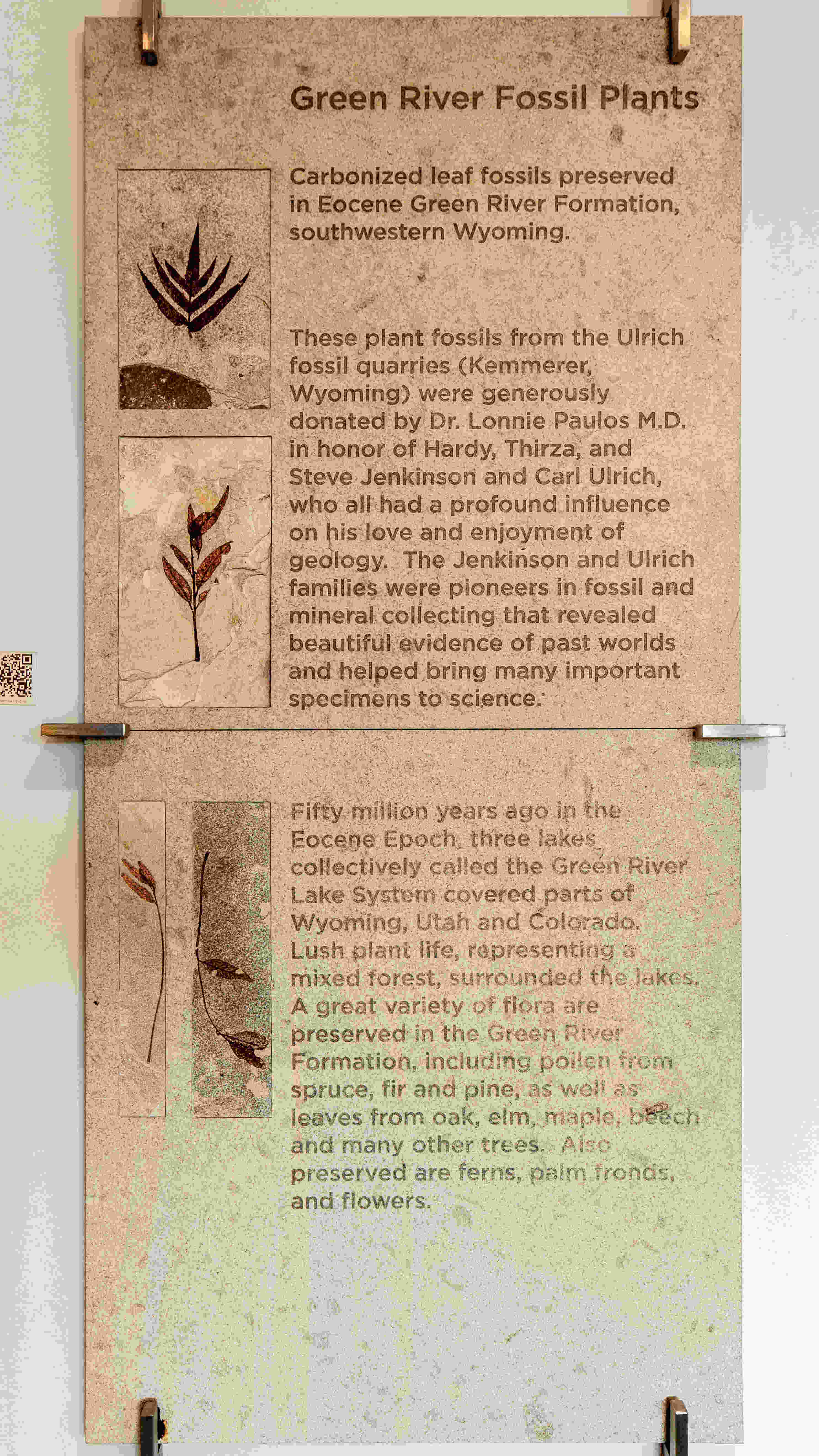
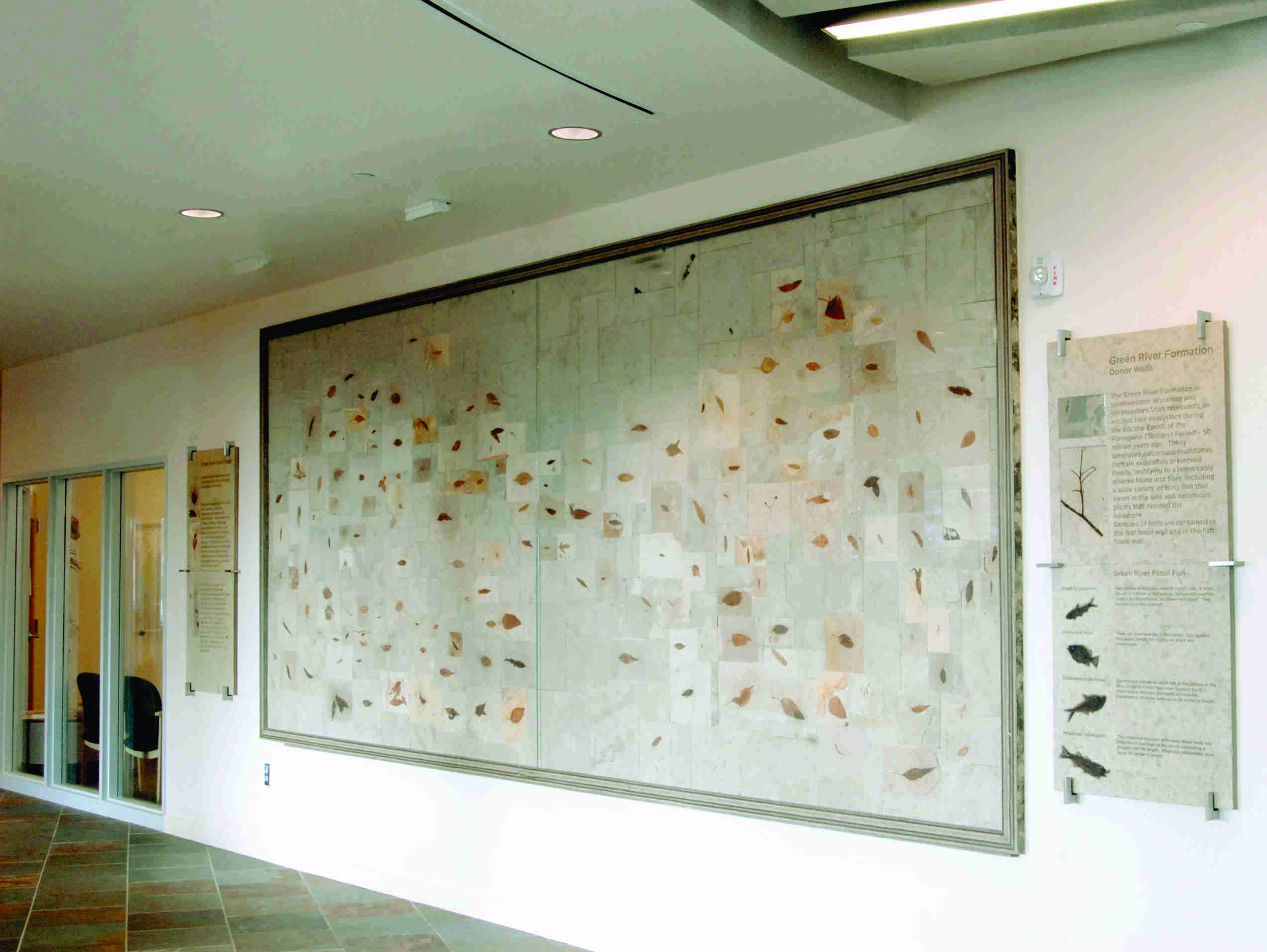
OPEN DISPLAYS

Life-size cast of an Allosaurus skull in aircraft stainless steel; a gift of Jeff
Gentry with the assistance of Jim Madsen,
who provided the original plaster cast.
Allosaurus fragilis (above) is the Utah State Fossil and is a meat-eating dinosaur from the Upper Jurassic Morrison Formation (ca. 150 million years ago). This specimen is from the Cleveland-Lloyd Quarry, in the newly designated Jurassic National Monument in Emery County, Utah. The quarry is an exceptional site for fossilized adult and juvenile samples.
The Hominid Display highlights geochronology (age dating) of sedimentary deposits that has been important in establishing the evolutionary history of early man. This display reflects the research efforts of Dr. Francis H. Brown with students and collaborations in the Omo-Turkana Basin of Kenya and Ethiopia.
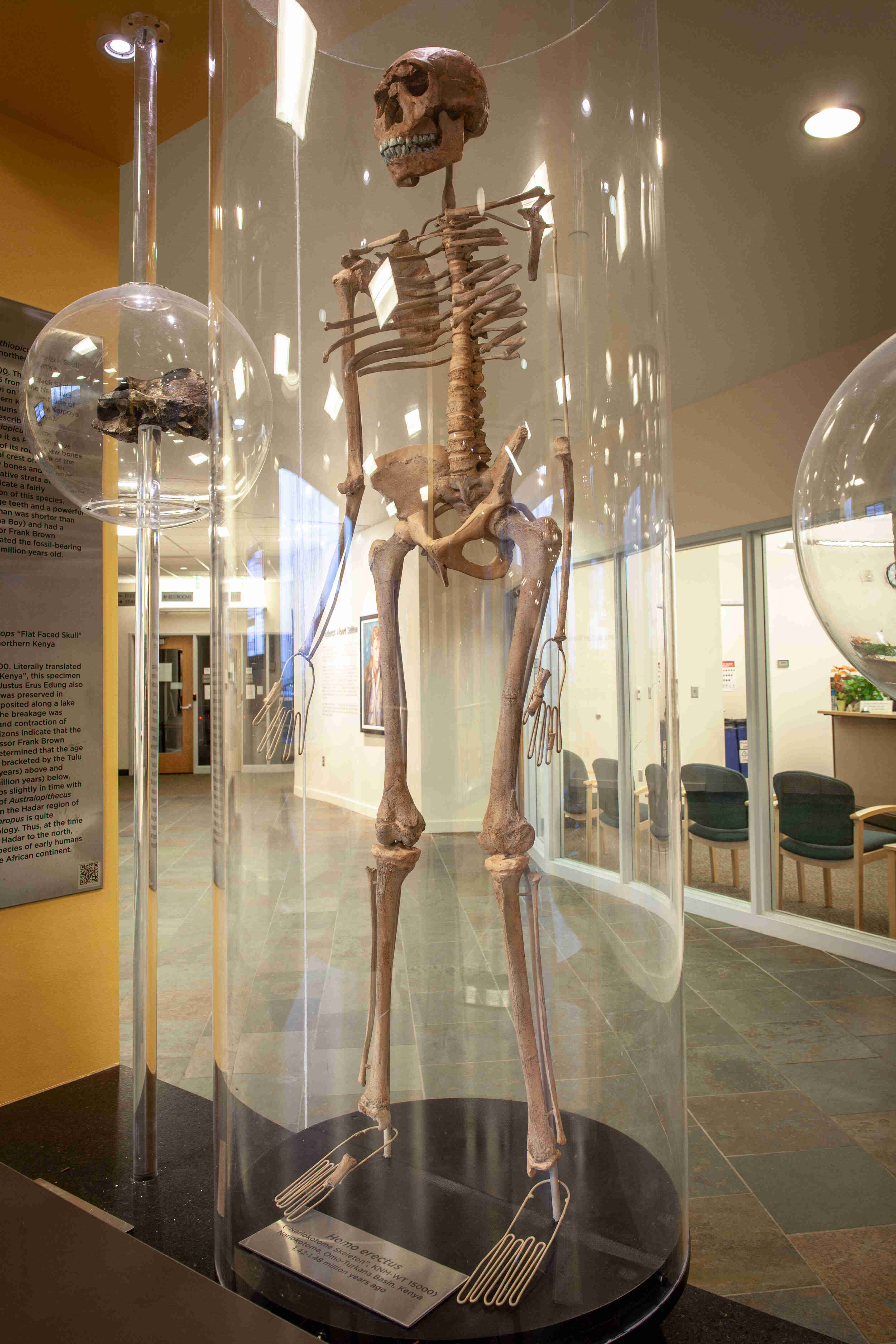
CANYONLANDS PAINTING
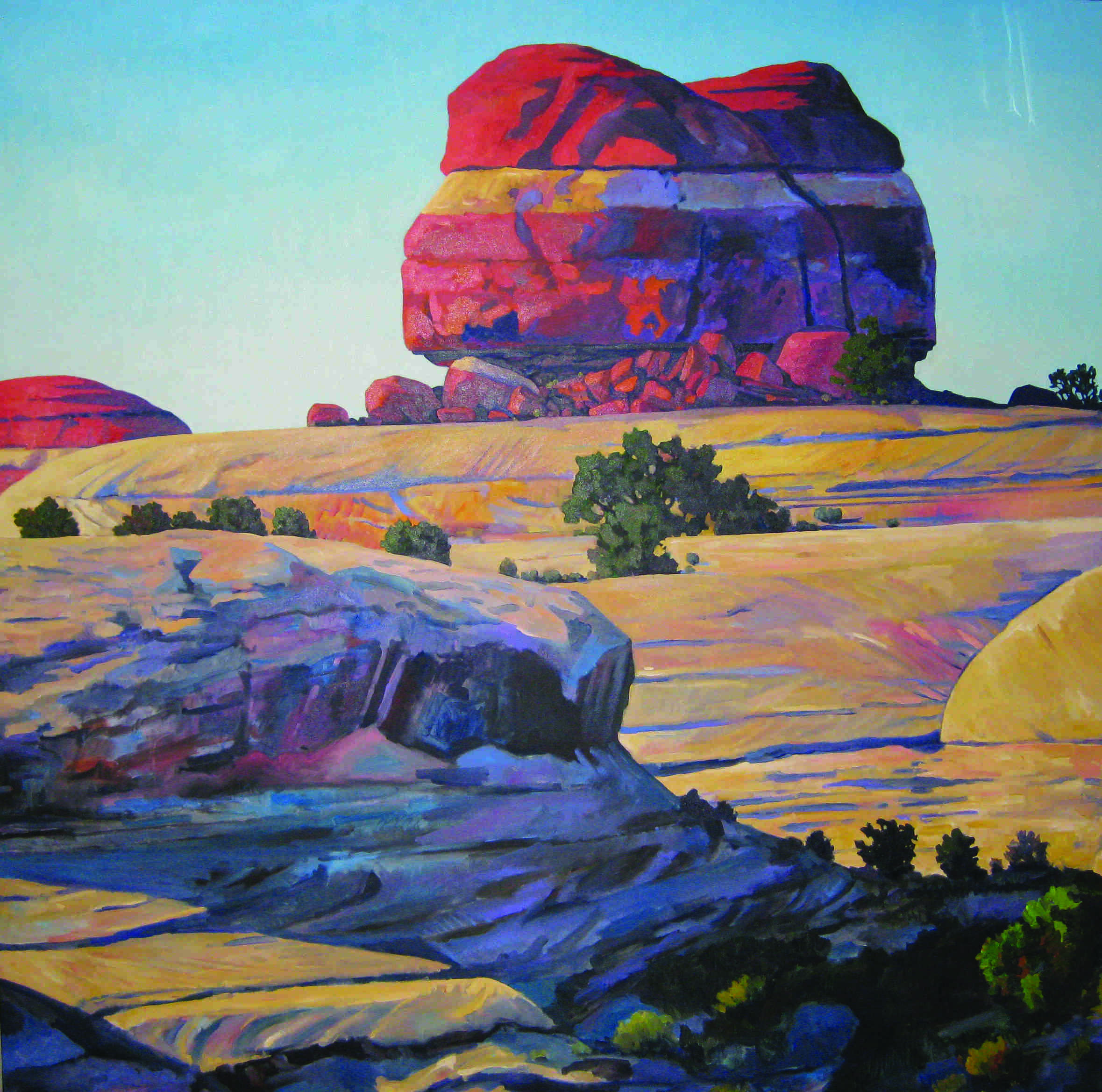
Hanging above the stairway, on the south wall, is “Confluence Sentinel,” a large oil
painting commissioned from Utah artist John Collins (1987, B.F.A. U of U). His appreciation
for the natural beauty of Utah is evident in the expressive palette he chose.
FIRST FLOOR
Outside on the west side, a braided river sidewalk separates FASB and the parking structure with a façade of the Basin and Range province. The building concrete foundation echoes the river theme with its cross-bedded pattern low on the external walls on the north and west sides.
Many vital functions take place on the first floor with its sample preparation laboratories, field equipment storage, computing facilities, and department collections.
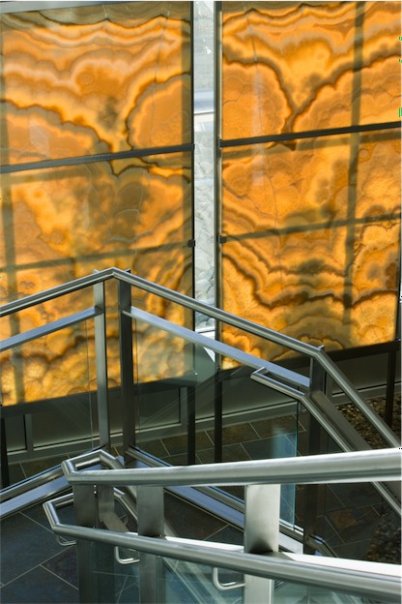
A window display of matched “bookends” of translucent
honey-banded travertine transmits the western light.
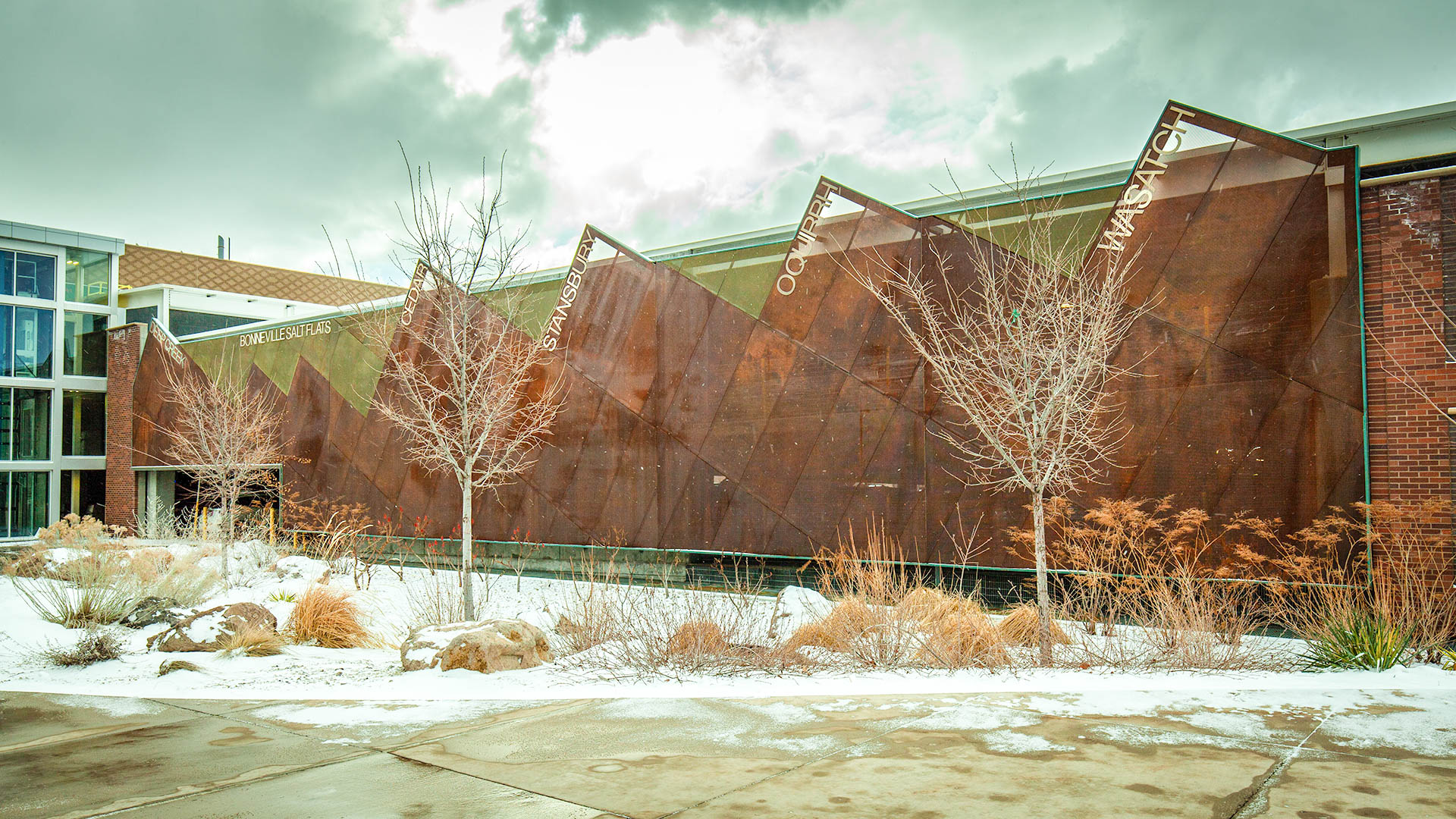
The parking structure façade of the Basin and Range design.
FIRST FLOOR DISPLAYS & SLABS
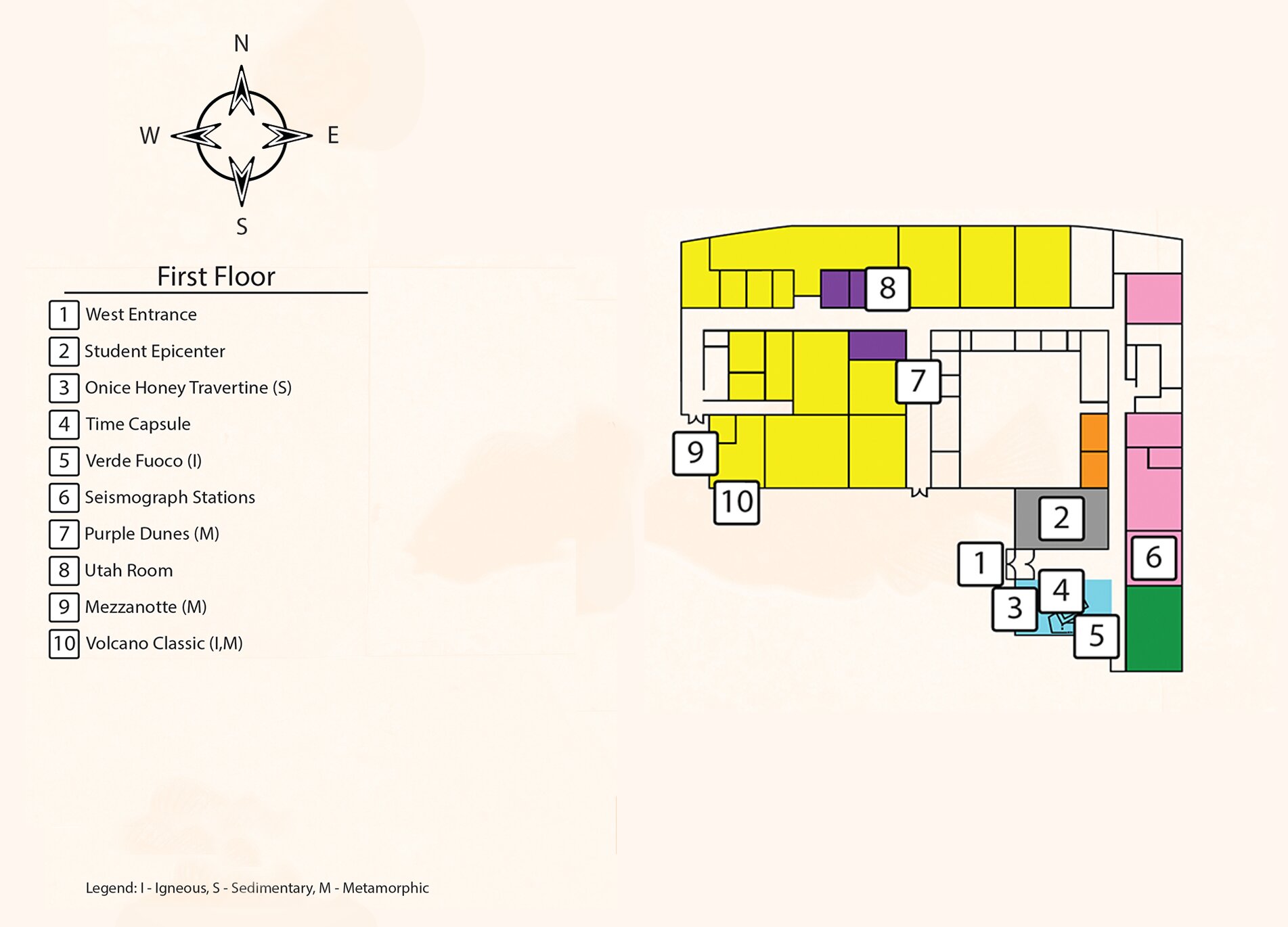
TIME CAPSULE BENCH
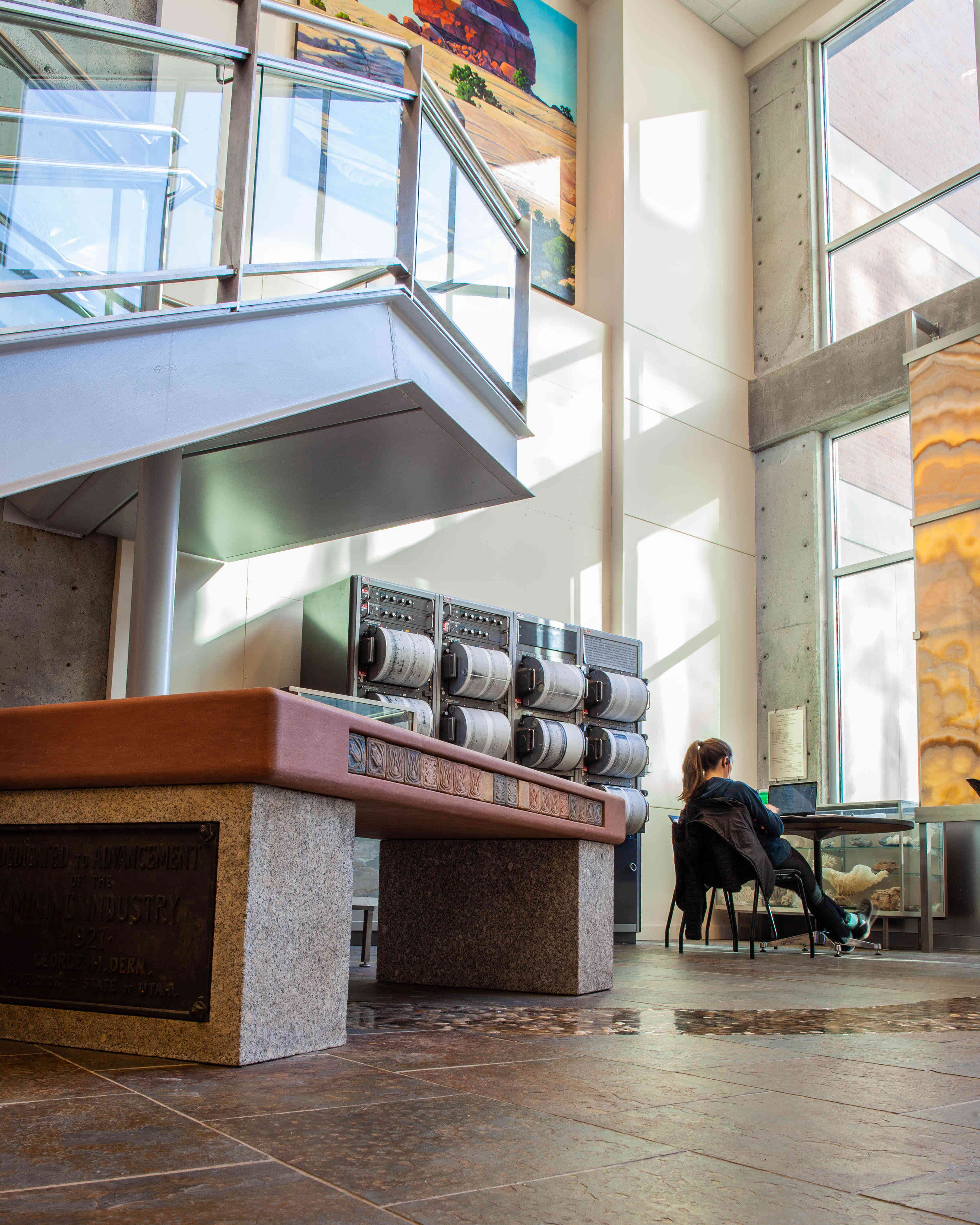
During demolition of the old Mines Building, historic portions were saved and are now displayed on the first floor. Items include three large terracotta “pick and hammer” medallions that graced the exterior of the Mines Building, a time capsule sandstone bench that incorporates Batchelder arts and crafts tiles from the interior of the Mines Building and its original cornerstone that contains photographs and mining-related memorabilia. In 2009 an additional time capsule incorporated into the sandstone bench in the first floor lobby.
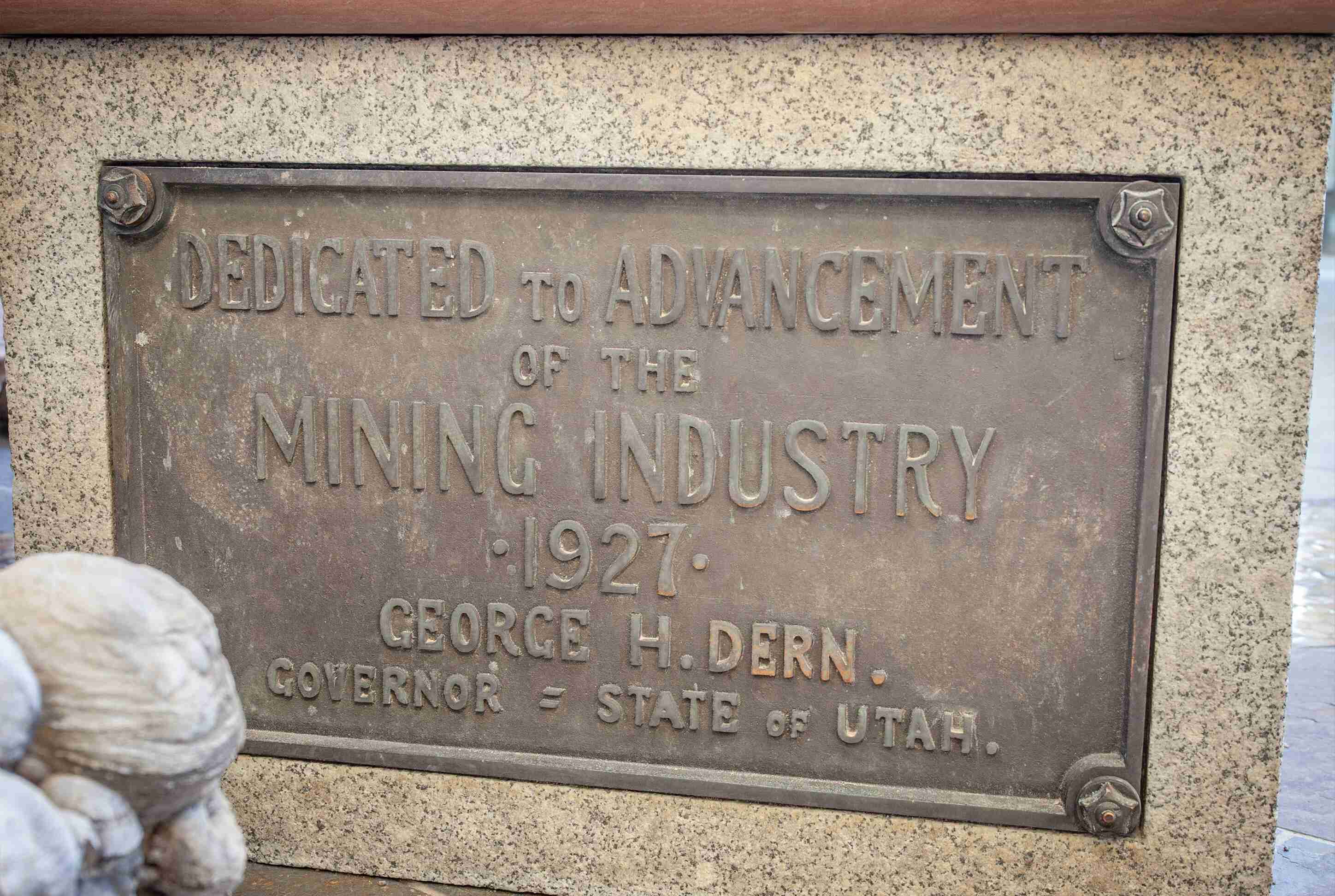
Mines Building cornerstone in new time capsule sandstone bench donated by State Stone.
RIO TINTO EARTHQUAKE INFORMATION CENTER
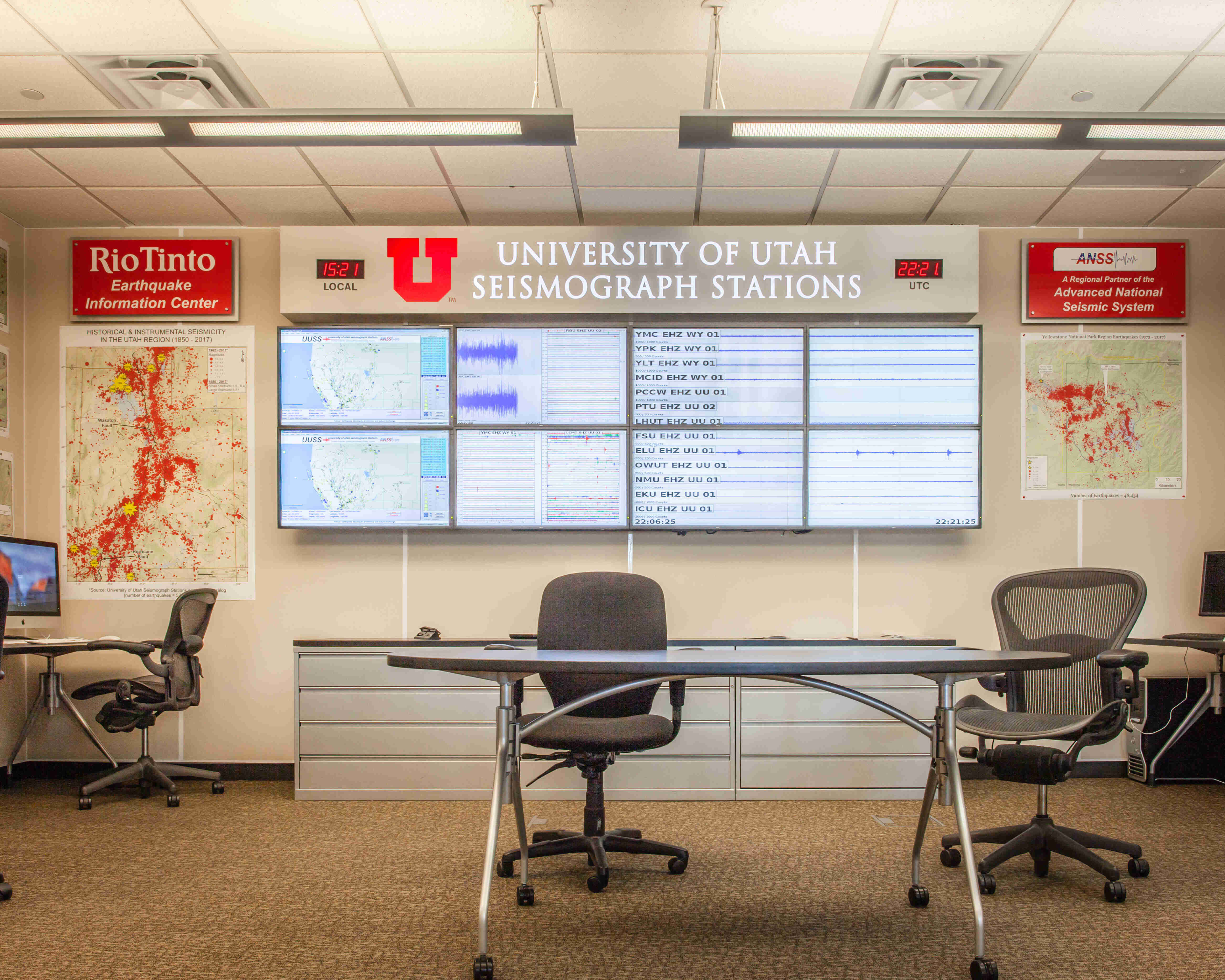
The Rio Tinto Earthquake Information Center, made possible by a generous gift from Utah Kennecott Copper, a subsidiary of Rio Tinto, is the state-of-the-art home of University of Utah’s Seismograph Stations (UUSS)—now located in an earthquake-resistant facility with backup power. Earthquakes have been recorded at the University of Utah for more than 100 years. UUSS, formally established in 1966, is a group of faculty, staff, and students involved in seismic monitoring of the Utah region and the Yellowstone National Park region (quake.utah.edu). Data from more than 300 regional and urban seismic stations are continuously transmitted to the UUSS network center where they are automatically processed as part of a real-time earthquake information system, operating since 2002 as part of the Advanced National Seismic System. The Center advances earthquake science, awareness, and public safety. It provides visualization tools and electronic displays that help the public service and educational missions of the Center and UUSS in interactions with public school students, news media, and the general public. Virtual Tour of Rio Tinto Earthquake Center
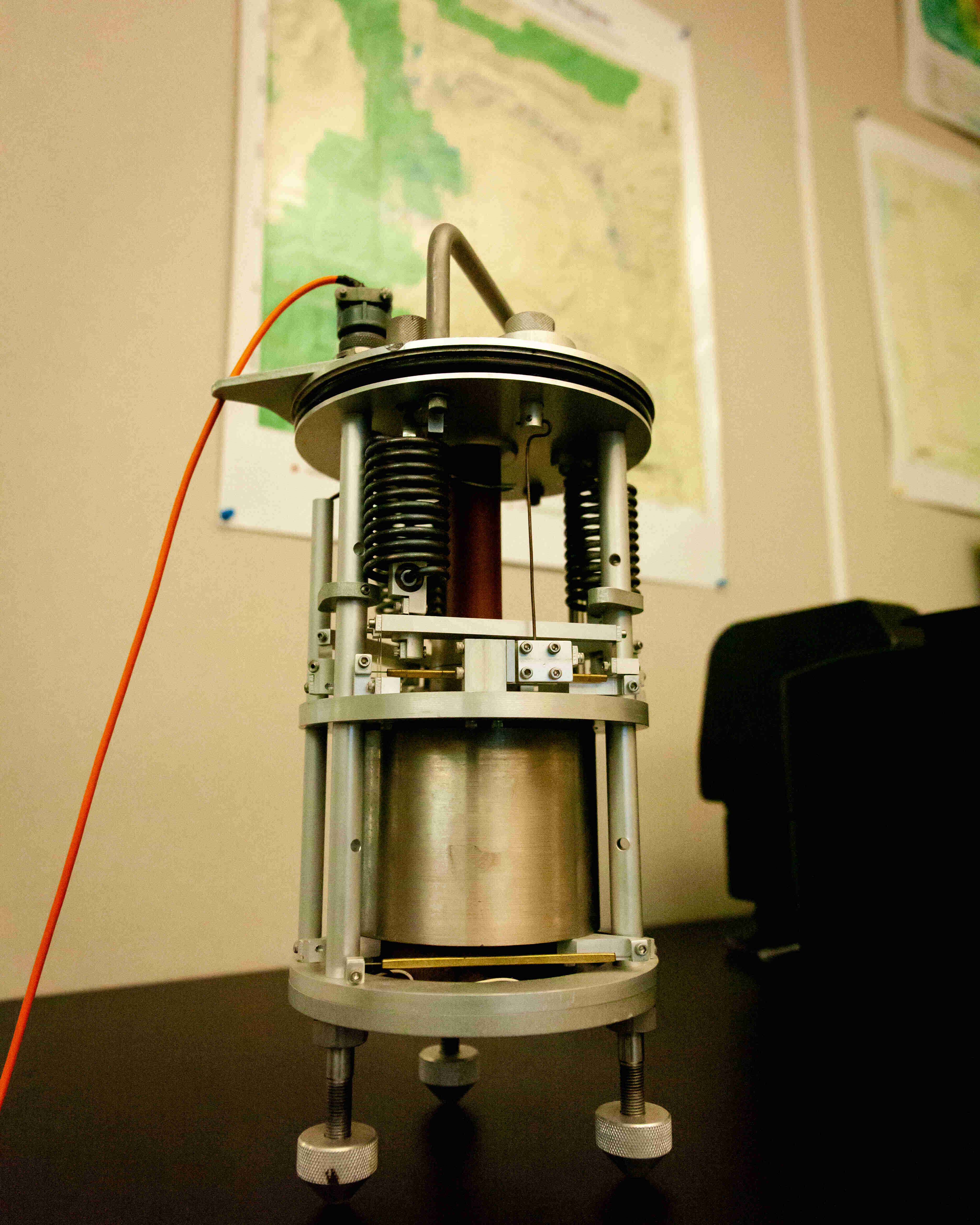
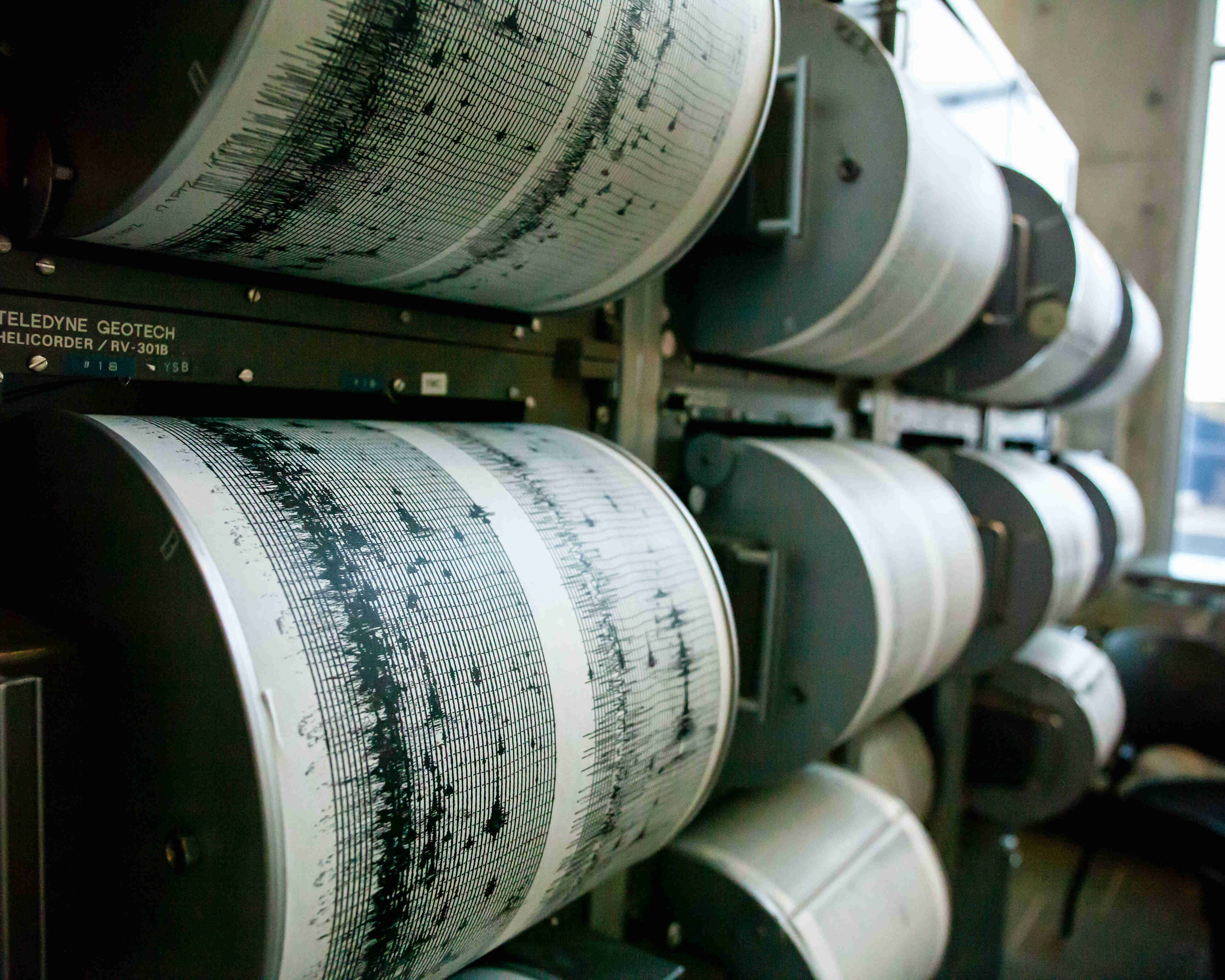
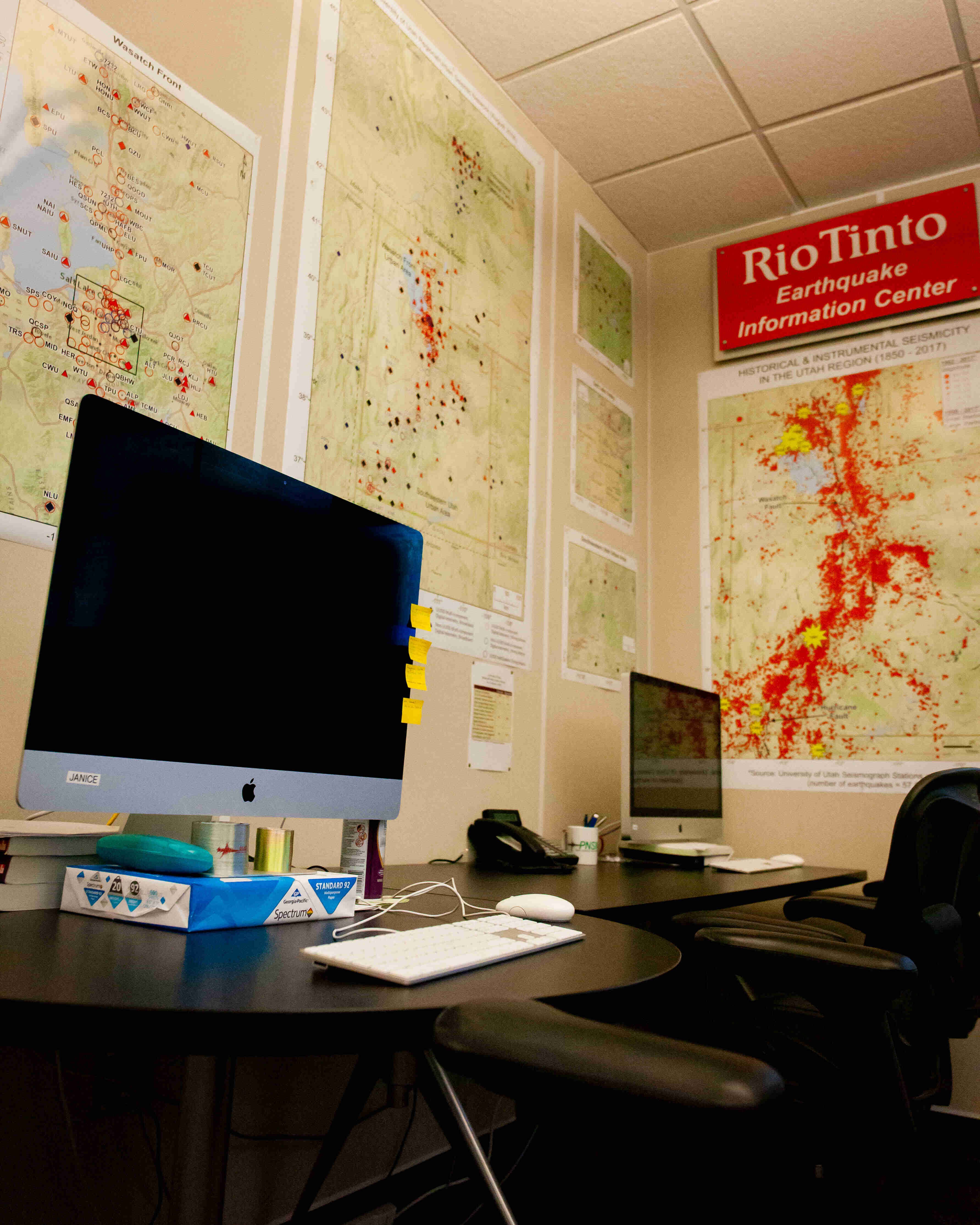
STUDENT EPICENTER
The Student Epicenter, the College of Mines and Earth Science’s (CMES) opened in 2018 and is accessible from the first floor lobby and FASB west entrance. As of October 2025, the space will open to undergrad and graduate students (who are in the departments of Geology and Mining) to meet, study, and relax. It will be used for occasional student-facing events like refreshment hour and CV workshops. In addition to its role as an informal meeting space, the three private offices at the back of the Epicenter will be available for check-out as meeting rooms for TAs who need a location to hold office hours or small groups who need private space for meetings.
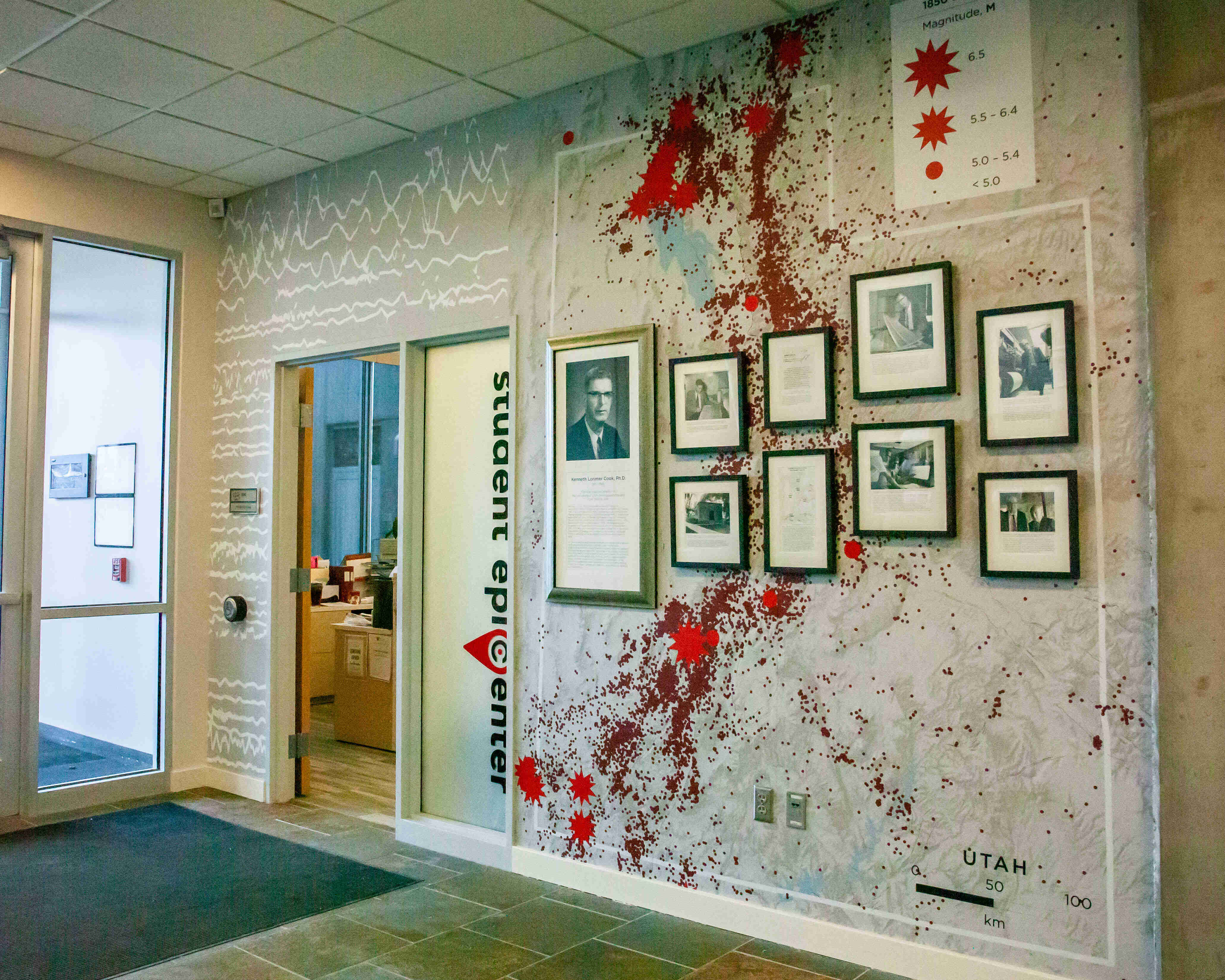
DEPARTMENT CURATION & COLLECTIONS FACILITY
Several rooms, including the Quintin Sahratian Sample Preparation Laboratory, contain the Department’s extensive collections and equipment for preparing rocks and minerals for scientific analysis. Display cases line the hallway, showcasing many of the Department’s rare specimens.
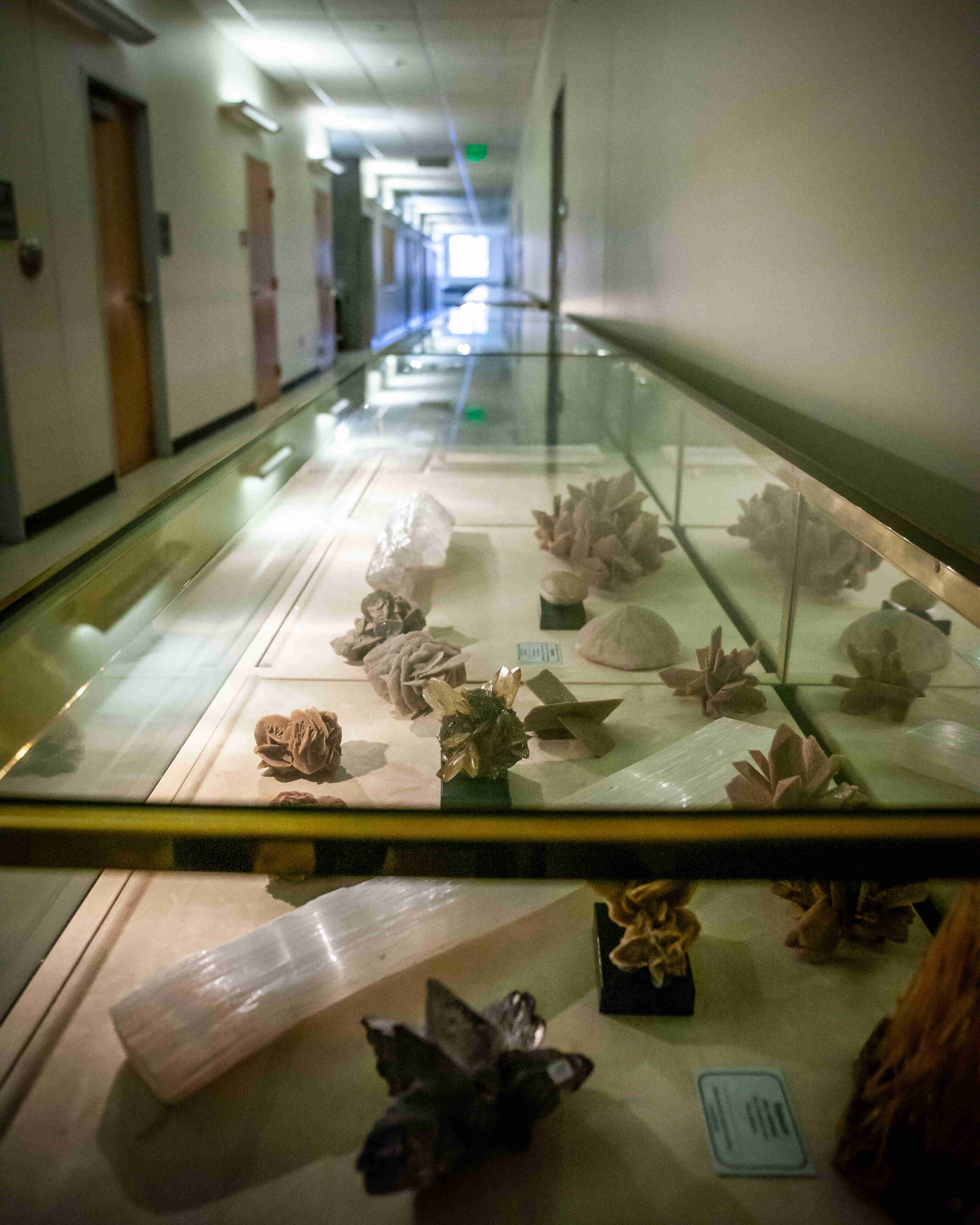
Other first floor spaces include:
- SPATIAL Laboratory: Conducts Hydrogen and Oxygen isotopic analysis using Cavity Ringdown spectroscopy.
- GeoHazards Laboratory: Concept testing and calibration of instrumentation used to asses geologic hazards such as landslides and arch stability
- Thinsection Laboratory: Preparation and polishing of geologic samples used in petrographic and chemical studies.
FIRST FLOOR ROCK SLABS
The following slabs are located on the first floor (including two that are on the south and west exterior walls); refer to first floor displays & slabs.
Virtual Tour of Under the Stairs Display

#3: Onice Honey Travertine: Creamed Colored Travertine Stone Curtains, Banded Limestone, Terrestrial Sedimentary; Iran
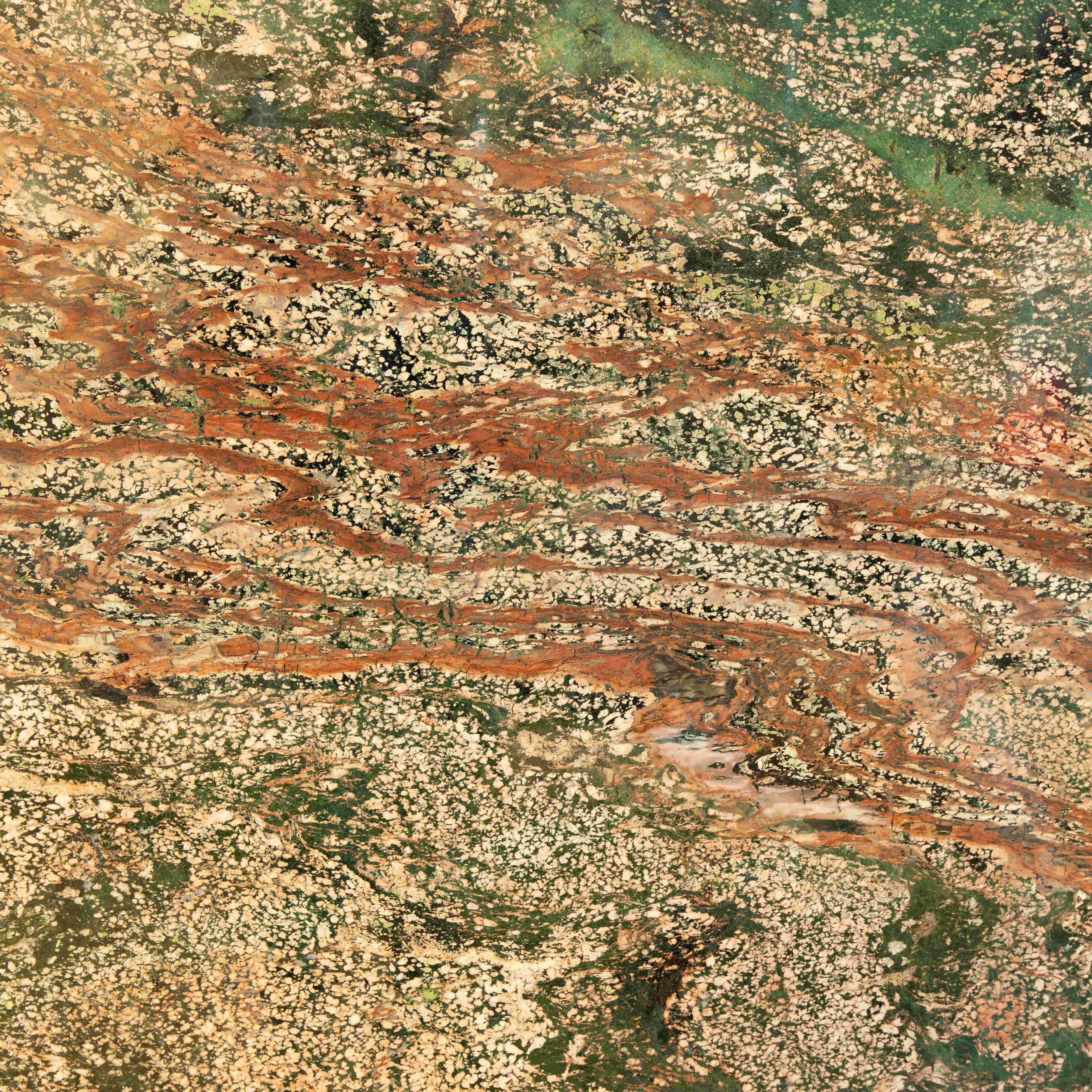
#5: Verde Fuoco: Multi-Colored, Fluid-Altered Igneous Intrusion and Migmatite; Wallaroo, Australia

#7: Purple Dunes: Garnet Biotite Gneiss, Metamorphic; Brazil
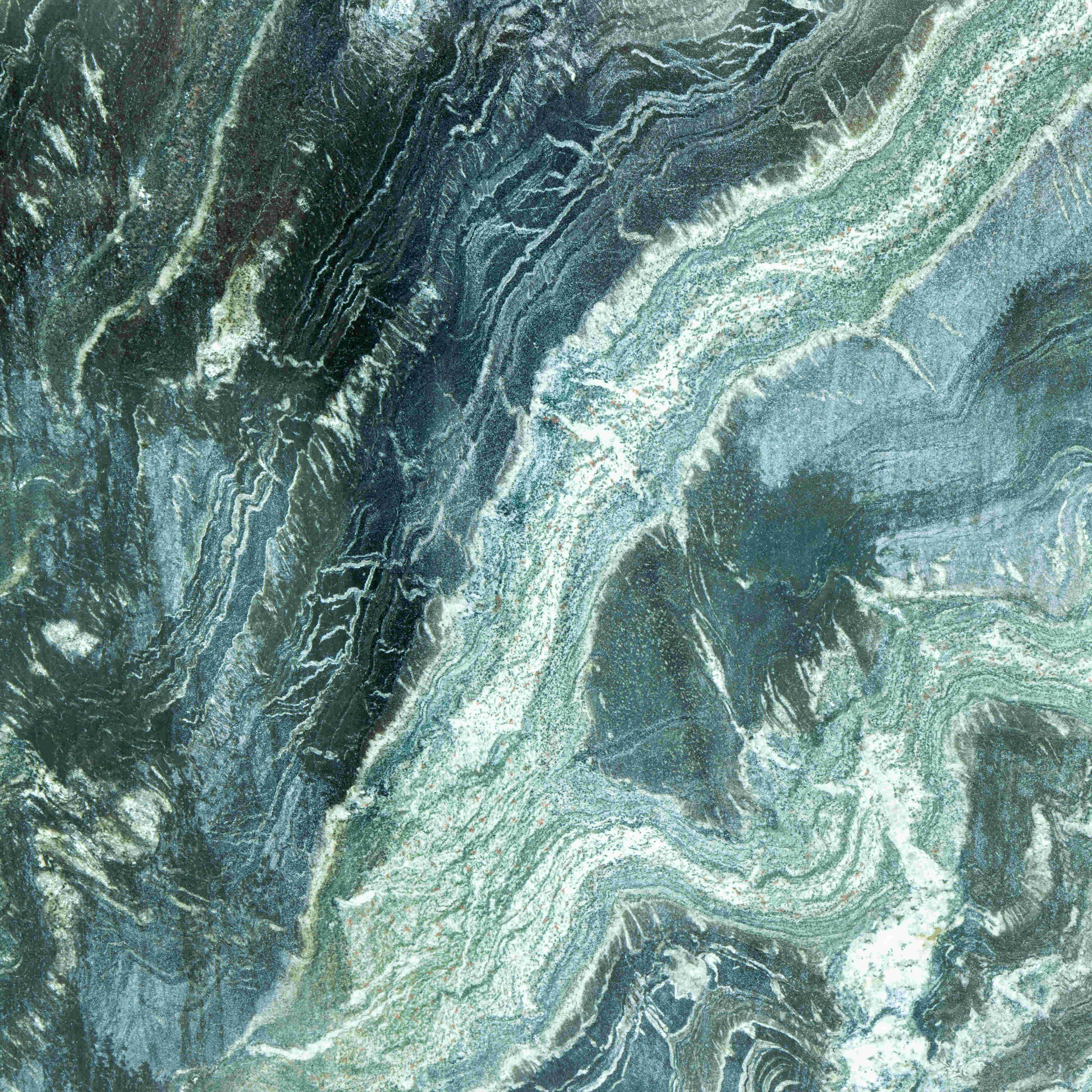
#9: Mezzanotte: Folded & Metamorphosed Carbonates and Mudstones, Metamorphic; Brazil
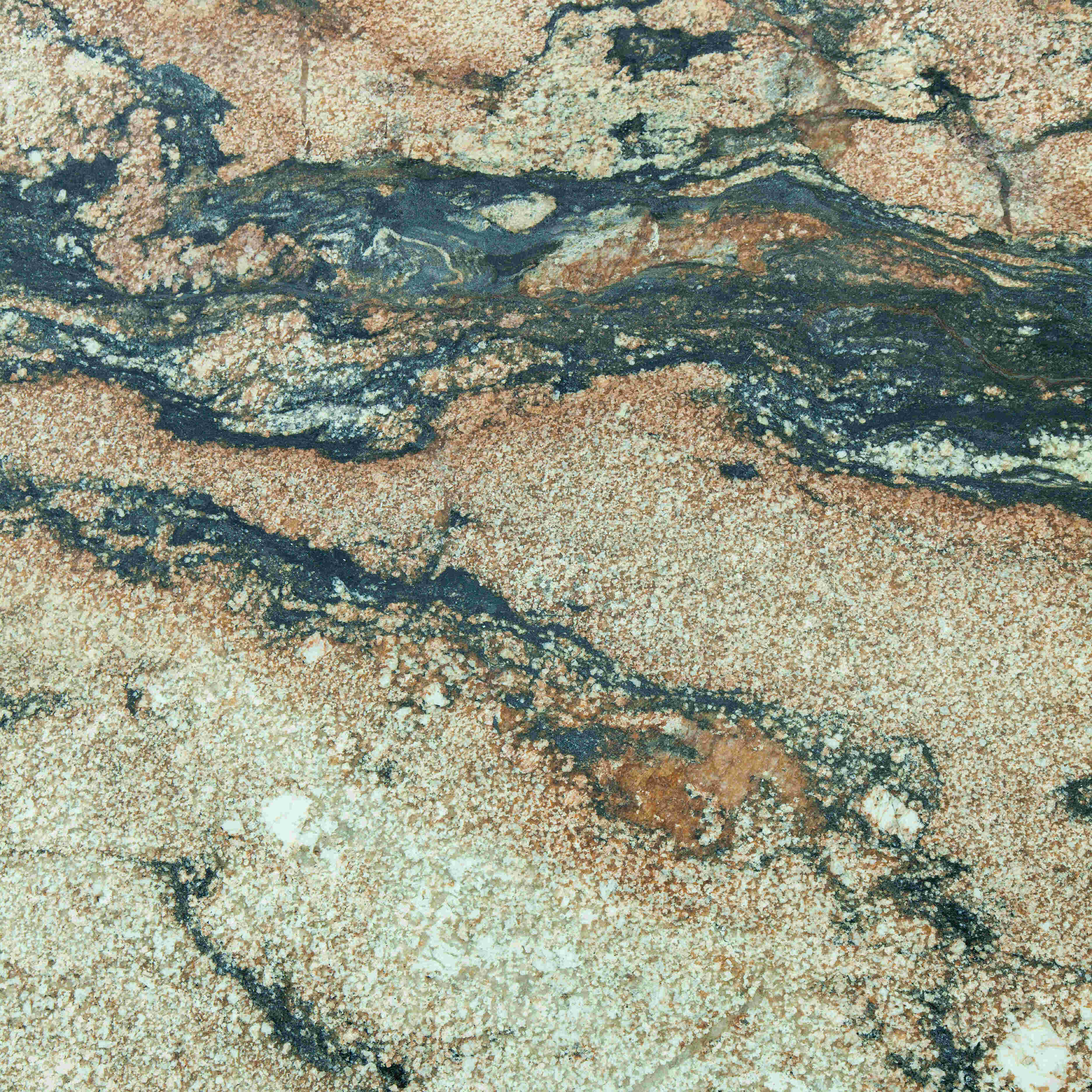
#10: Volcano Classic: Granitic Rock Intermingled with Partially Melted Metamorphic Rock, Contact Metamorphism; Brazil
SECOND FLOOR
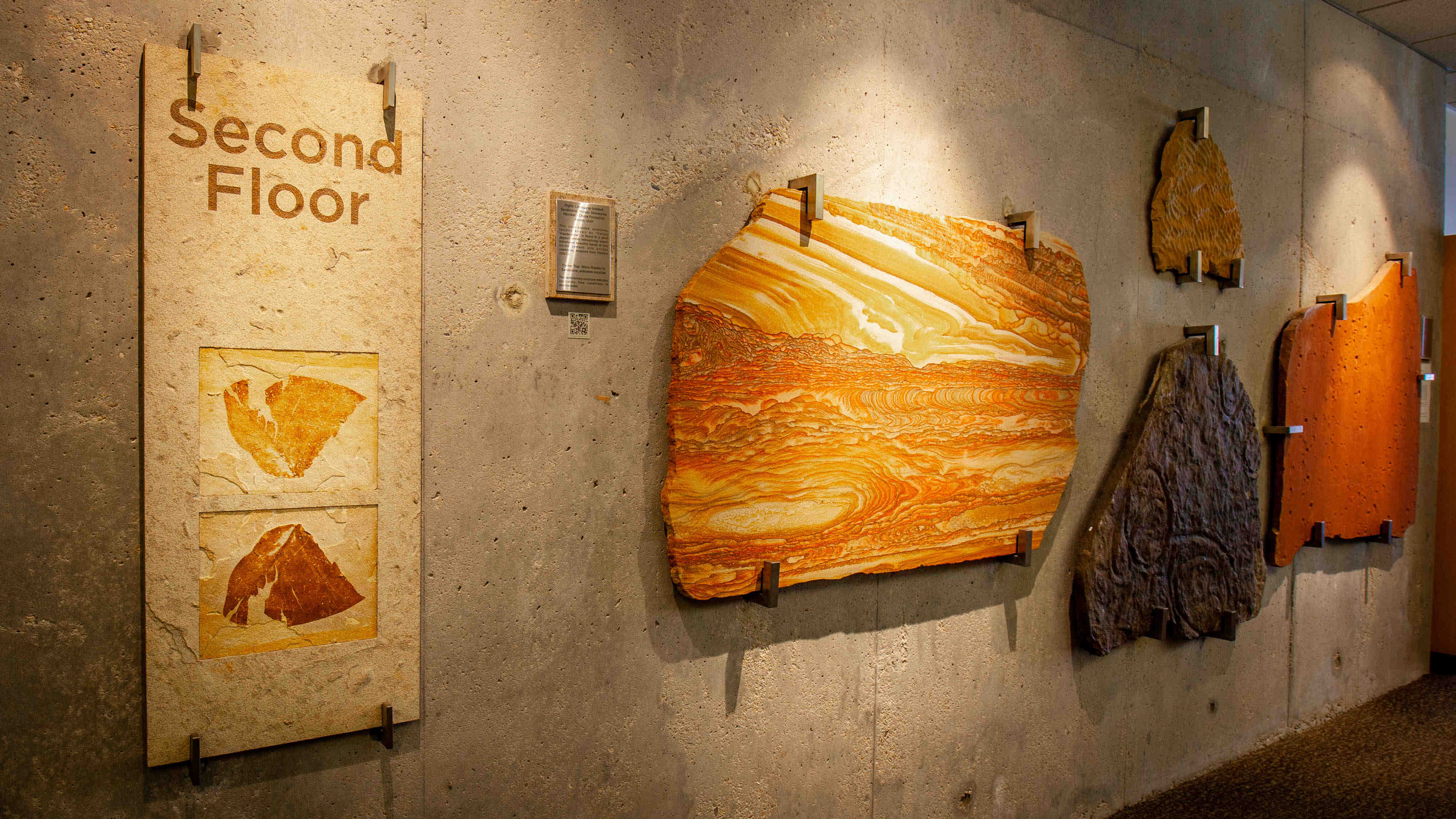
Exploring beyond the Confluence, the second floor features a collection of seismology and geology cartoons by long-time cartoonist for The Salt Lake Tribune, Pat Bagley, and many named spaces honoring various generous donors. Within each of these space there is a short write-up about its namesake.
Virtual Tour of Second Floor Elevator Displays
- David A. & Hanne Duke Gathering Area: West-end informal meeting space.
- Francis H. Brown Classroom: For instruction in Earth science courses.
- Gerald W. Hohmann Electromagnetic Laboratory: Dedicated to fundamental and applied studies in electromagnetic geophysics.
- Grant Parsons Computer Lab: Used for instruction and provides access to high performance computing to students of geology and geophysics.
- Jerry Knaus Gathering Area: North-end informal meeting space.
- Michael & Margaret Kerr Seismic Imaging/Tomography Laboratory: For research into applied seismic techniques.
- Reverend Marta Sutton Weeks-Wulf Lecture Hall: 80-seat lecture hall.
- Vivien Jameson Conference Room: Conference room within the Geology and Geophysics, and Mining Engineering administrative office.
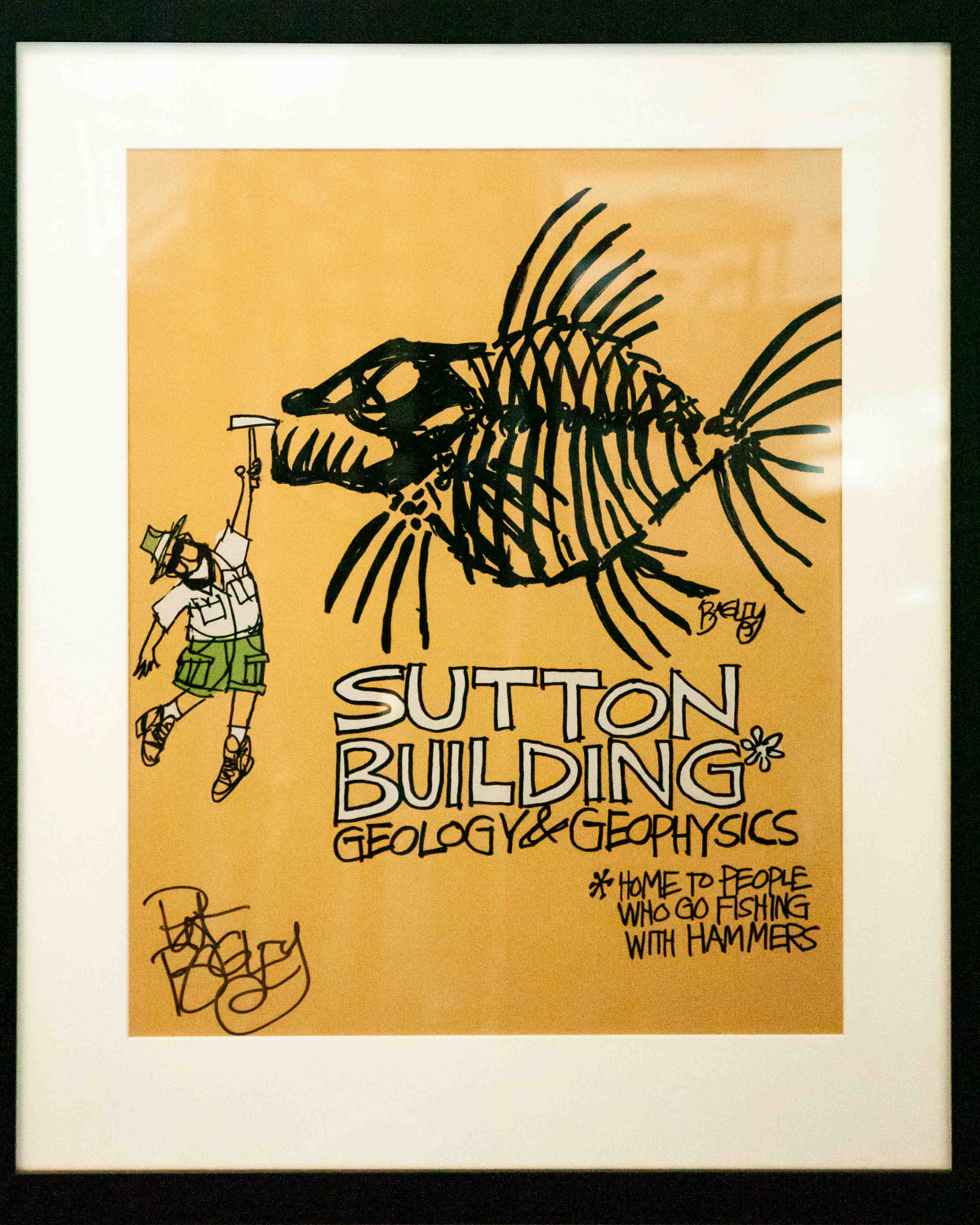

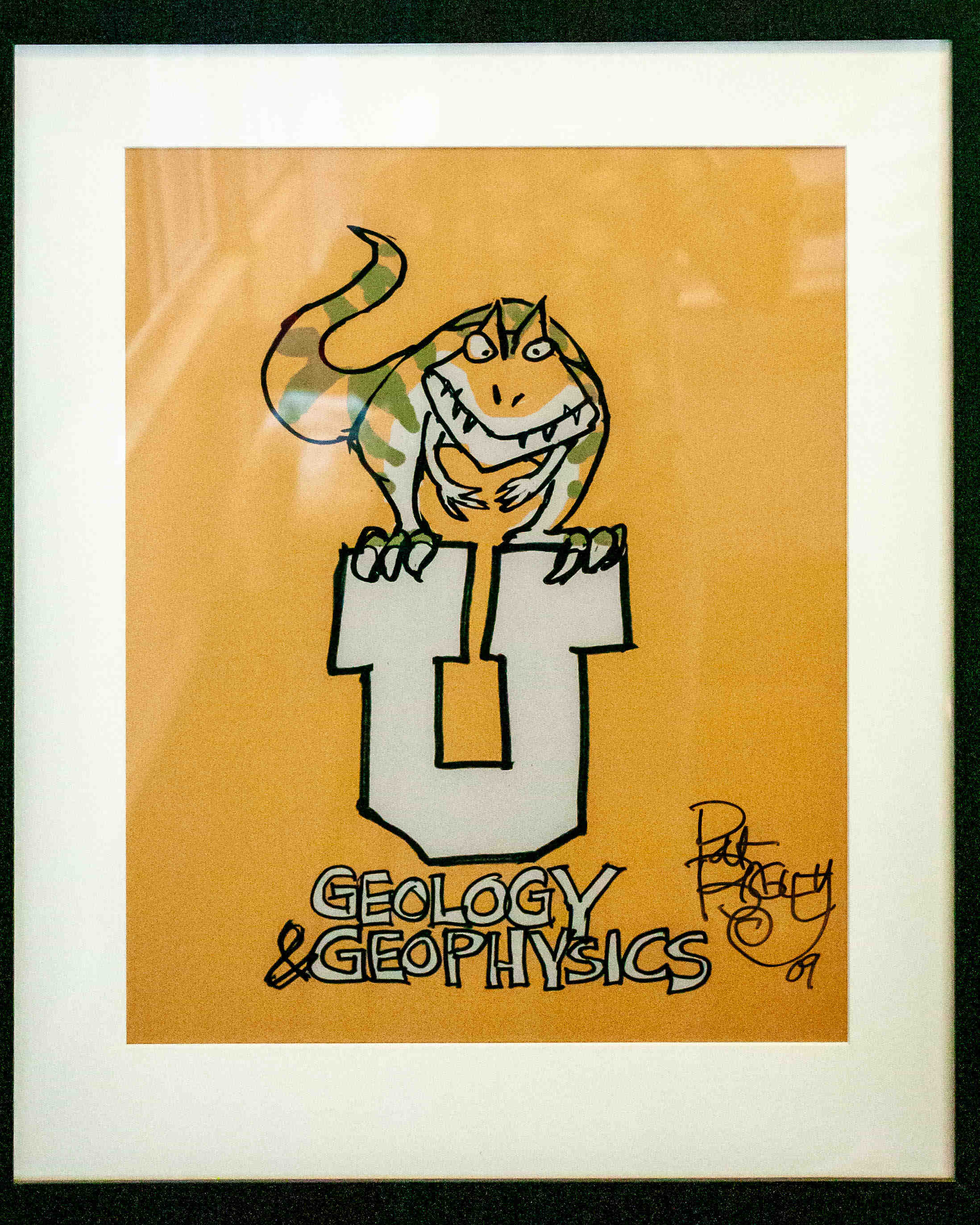
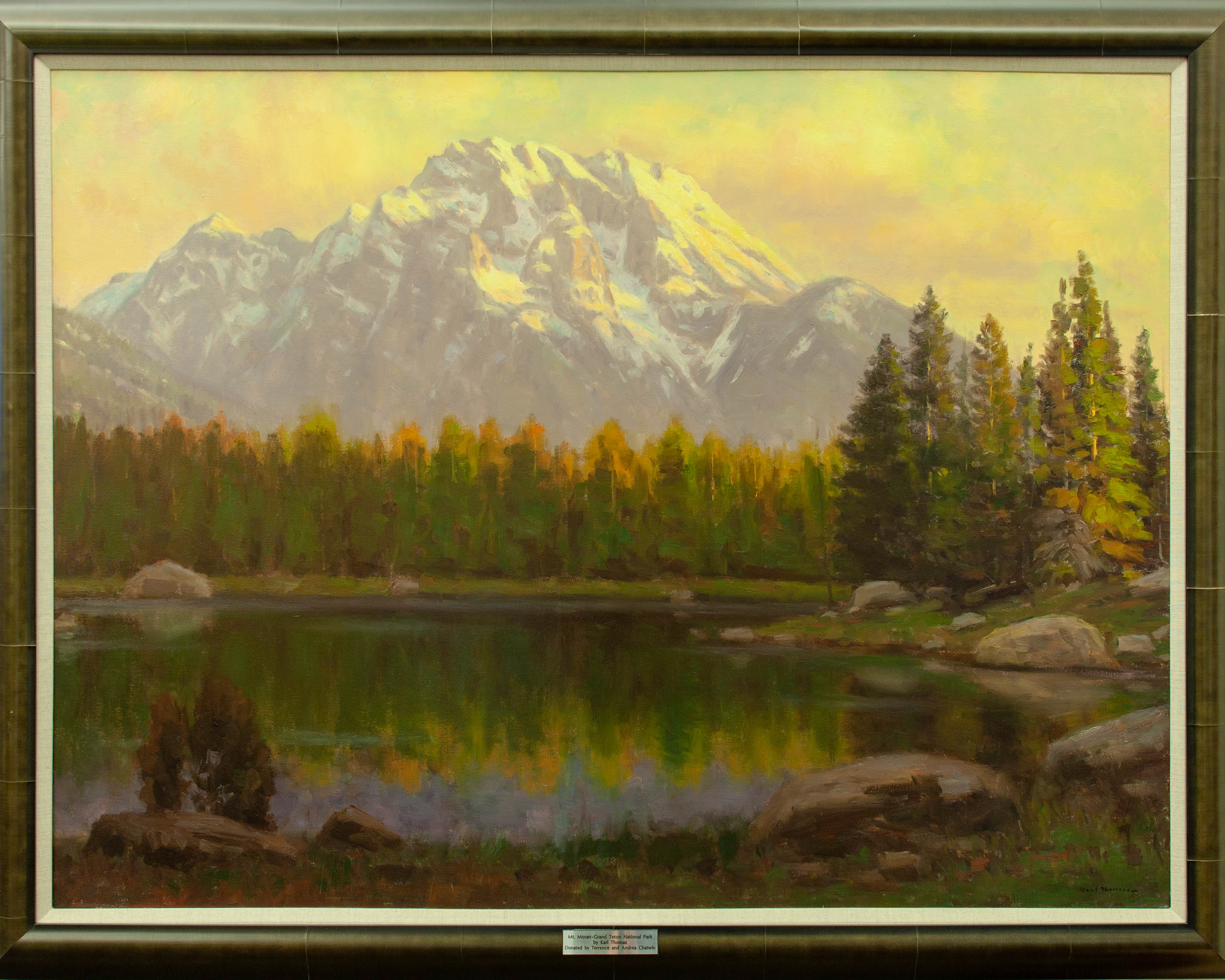
Painting of Mt. Moran, Grand Teton National Park, by Karl Thompson. This painting hangs in the Dean’s Office reception area. It was donated by Terrence and Andrea Chatwin.

A large, unusual collage of fossils also hangs in the Dean’s Office reception area. It was donated by Dr. Lonnie and Shannon Paulos.
The map of second floor displays and rock slabs is second floor displays & slabs.
DEPARTMENT OF GEOLOGY & GEOPHYSICS, AND MINING ENGINEERING ADMINISTRATIVE OFFICE
The Department’s administrative office is located in room 205.
The coffee table is made of a colorful karst breccia from Europe.

METEORITE DISPLAY
Virtual Tour of Palm Frond and Meteorite Display
“Out-of-this-world” meteorites are on display in the Department of Geology and Geophysics
administrative office, including the Beaver-Harrison Meteorite, found by John E. Welsh
in Beaver County, Utah. It is an olivine-hypersthene chondrite stony meteorite, weighing
925 grams. It was gifted by Janet Welsh.

SECOND FLOOR ROCK SLABS
Many of the second floor’s perimeter hallway rock slabs exhibit a variety of igneous to metamorphic compositions and structures that represent the solid Earth. The following slabs are located on the second floor; refer to second floor displays & slabs.
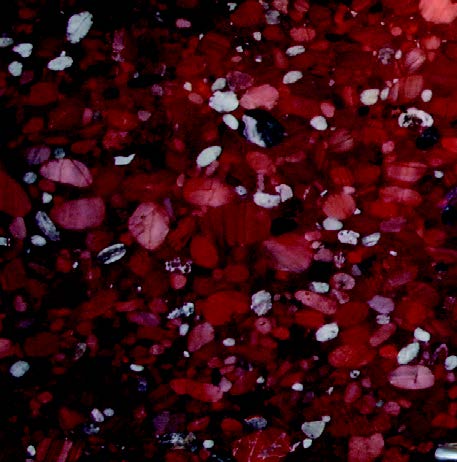
#16a: Marinace Slabs: Red Conglomerate, Sedimentary; Brazil

#16c: Marinace Slabs: Green Conglomerate, Sedimentary; Brazil
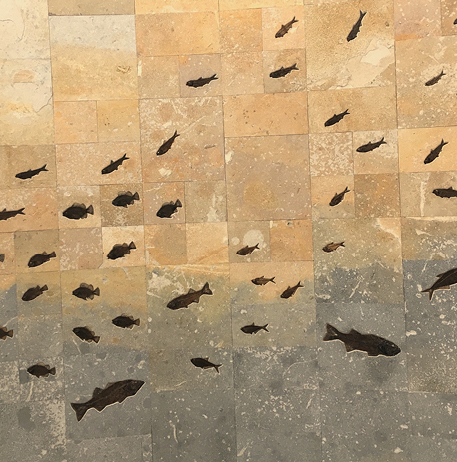
#18: Fish Wall: Green River Formation, Terrestial Sedimentary; Utah
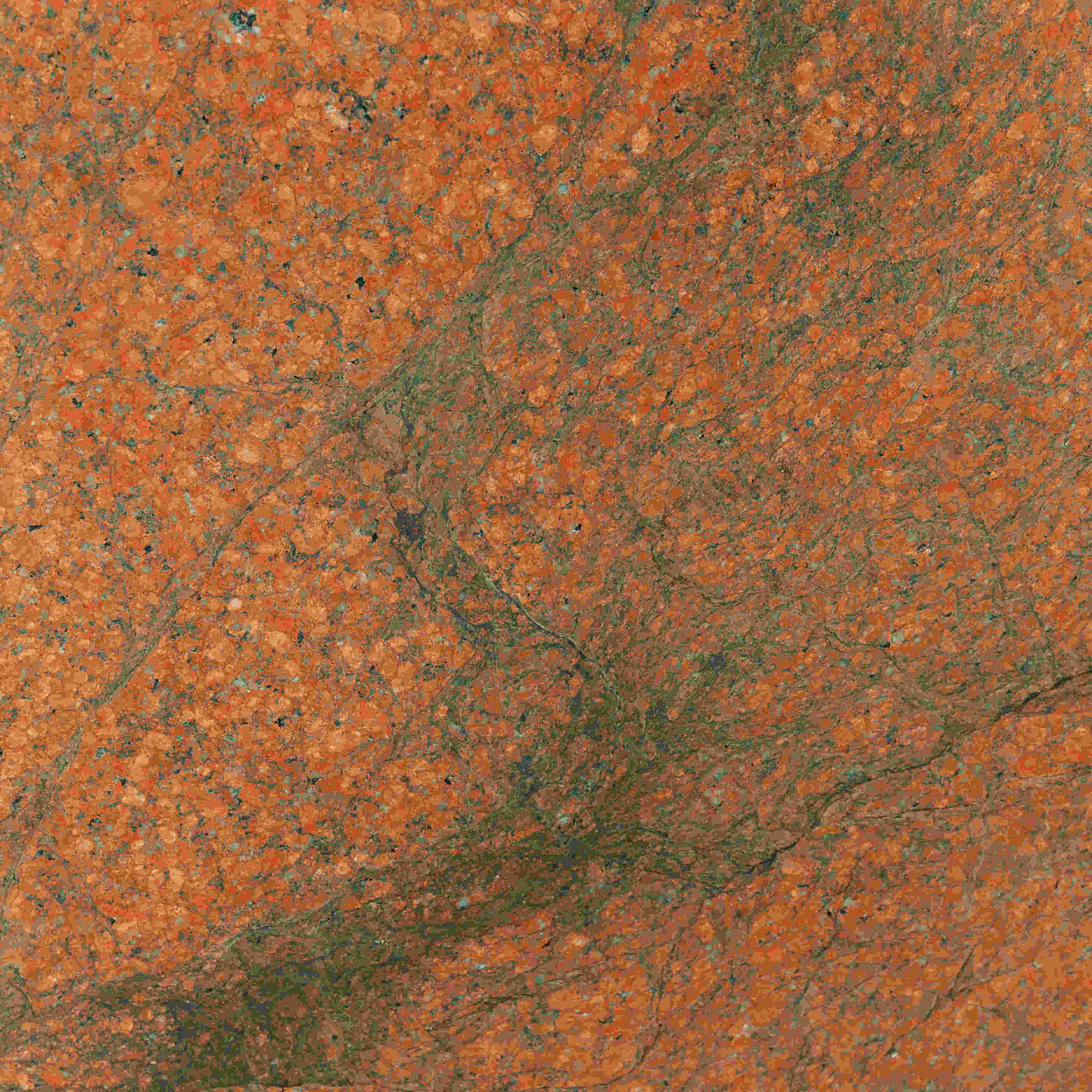
#21: Red Dragon: Fluid-Altered Granite, Intrusive Igneous; Brazil
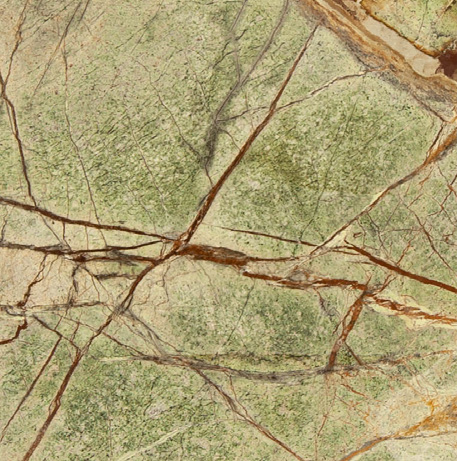
#22a: Green/Brown Rainforest: Details of Fracturing and Fluid Alteration of Pillow Lava, Extrusive Igneous; India
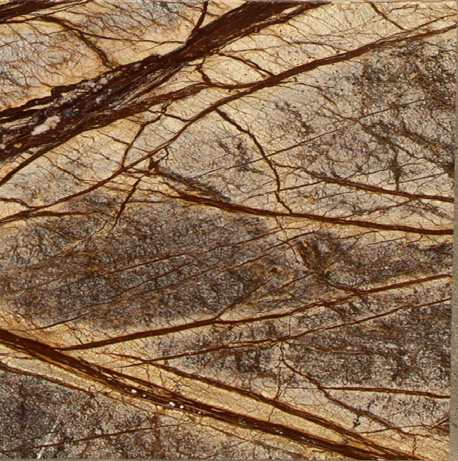
#22b: Green/Brown Rainforest: Details of Fracturing and Fluid Alteration of Pillow Lava, Extrusive Igneous; India
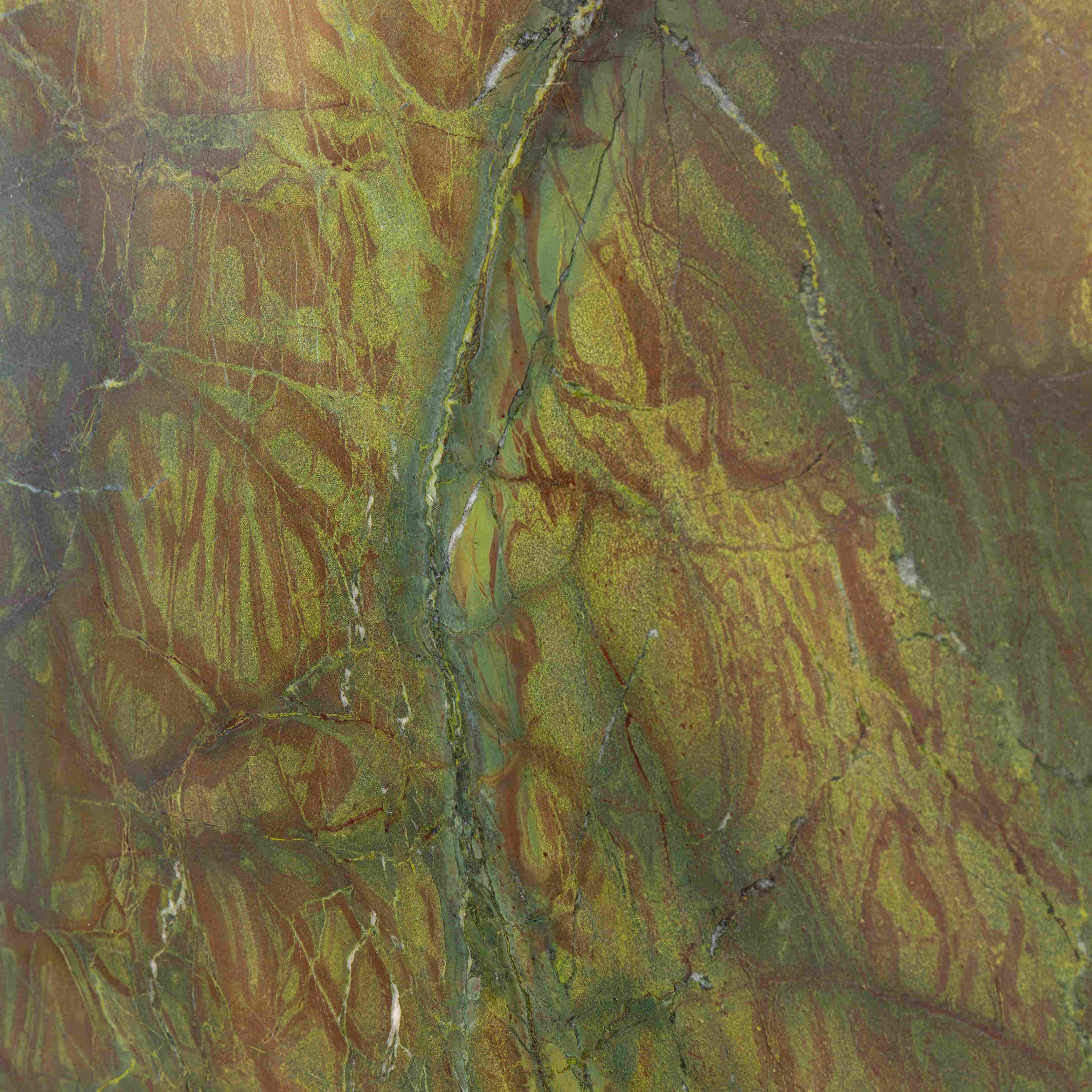
#23: Victoria Regia: Fluid Altered “Serpentinized” Pillow Lava, Extrusive Igneous: Brazil
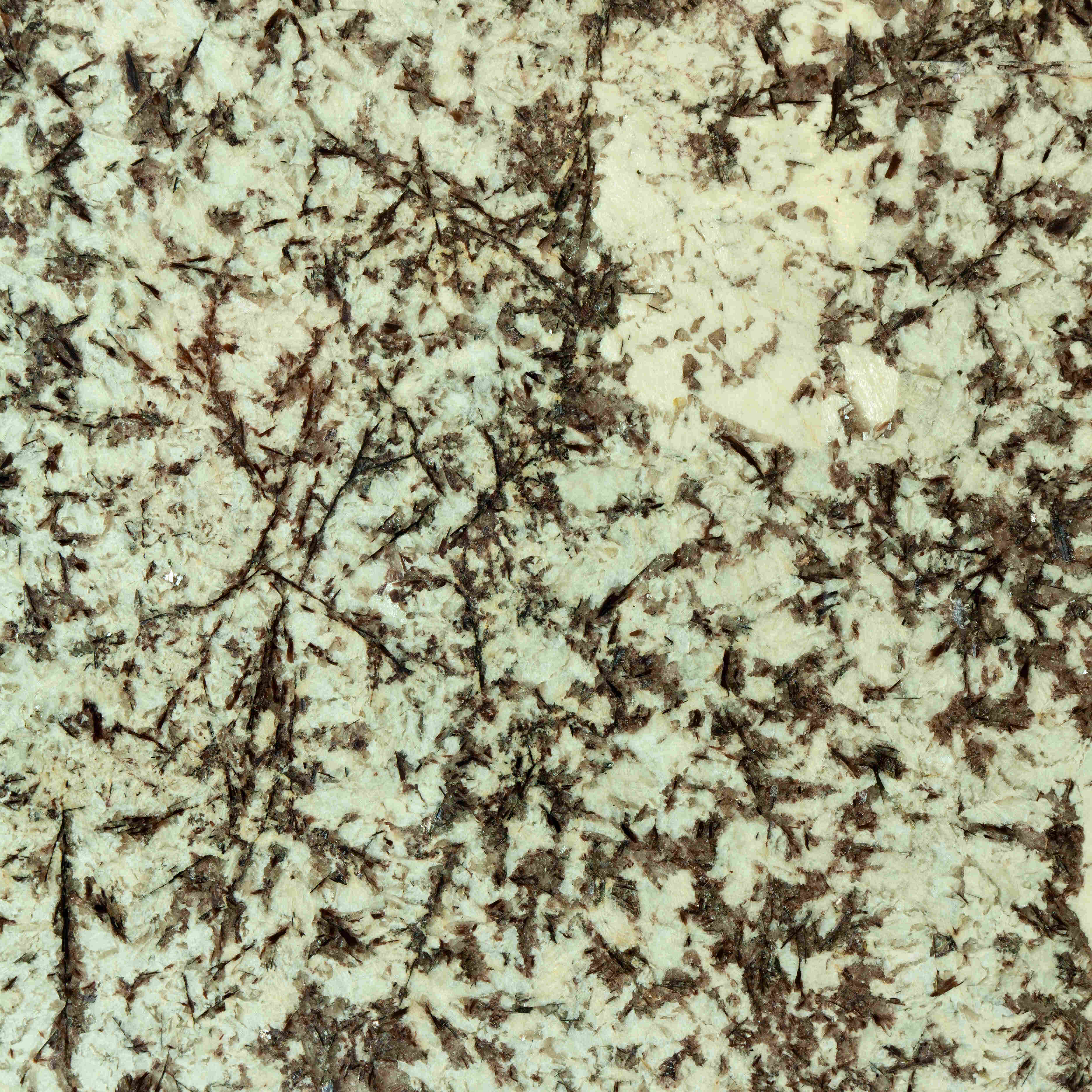
#24: White Pegmatite: Very Coarsely Crystalline Igneous Rock; Unknown Origin
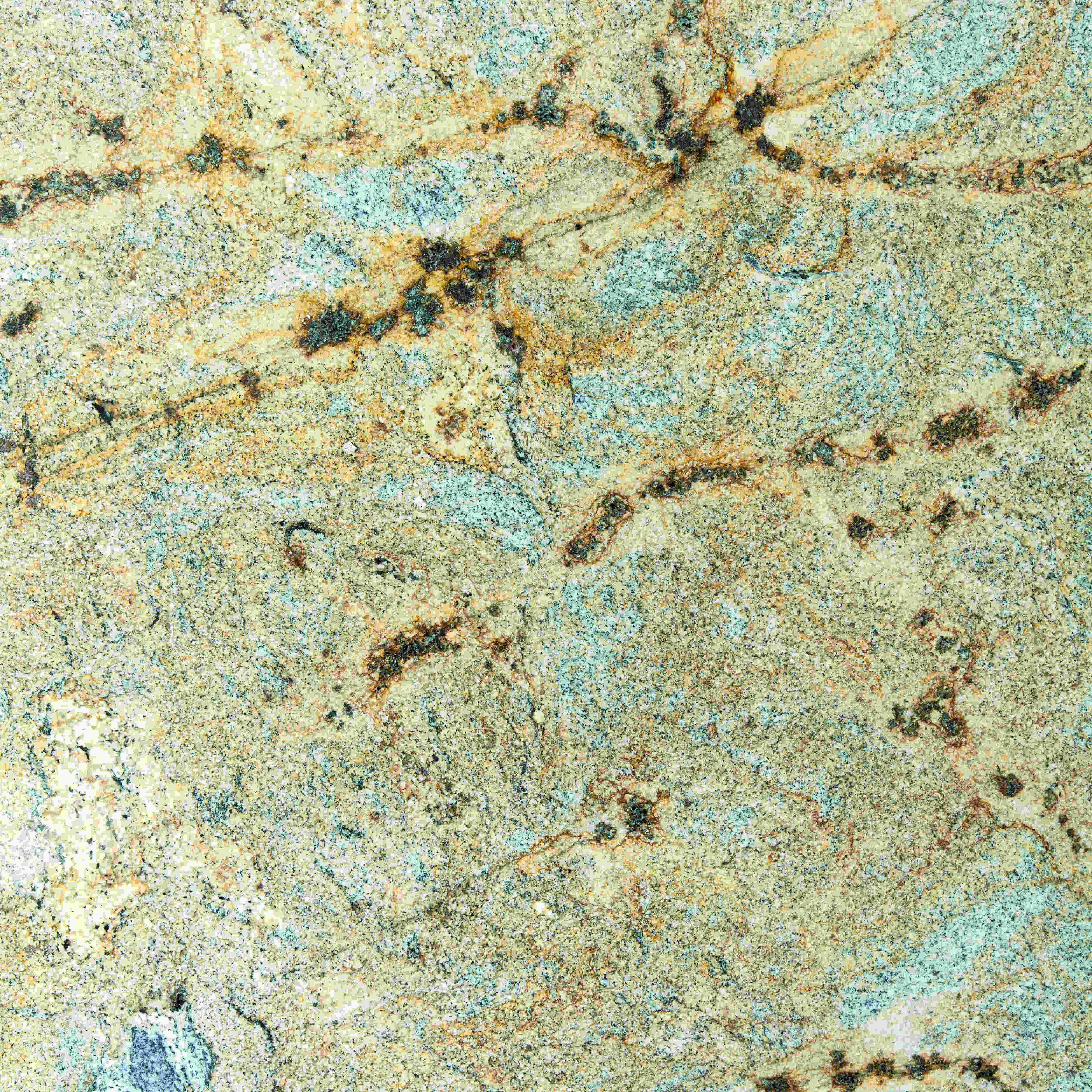
#25: Juparana: Granite, Fractured Igneous Intrusion; Brazil
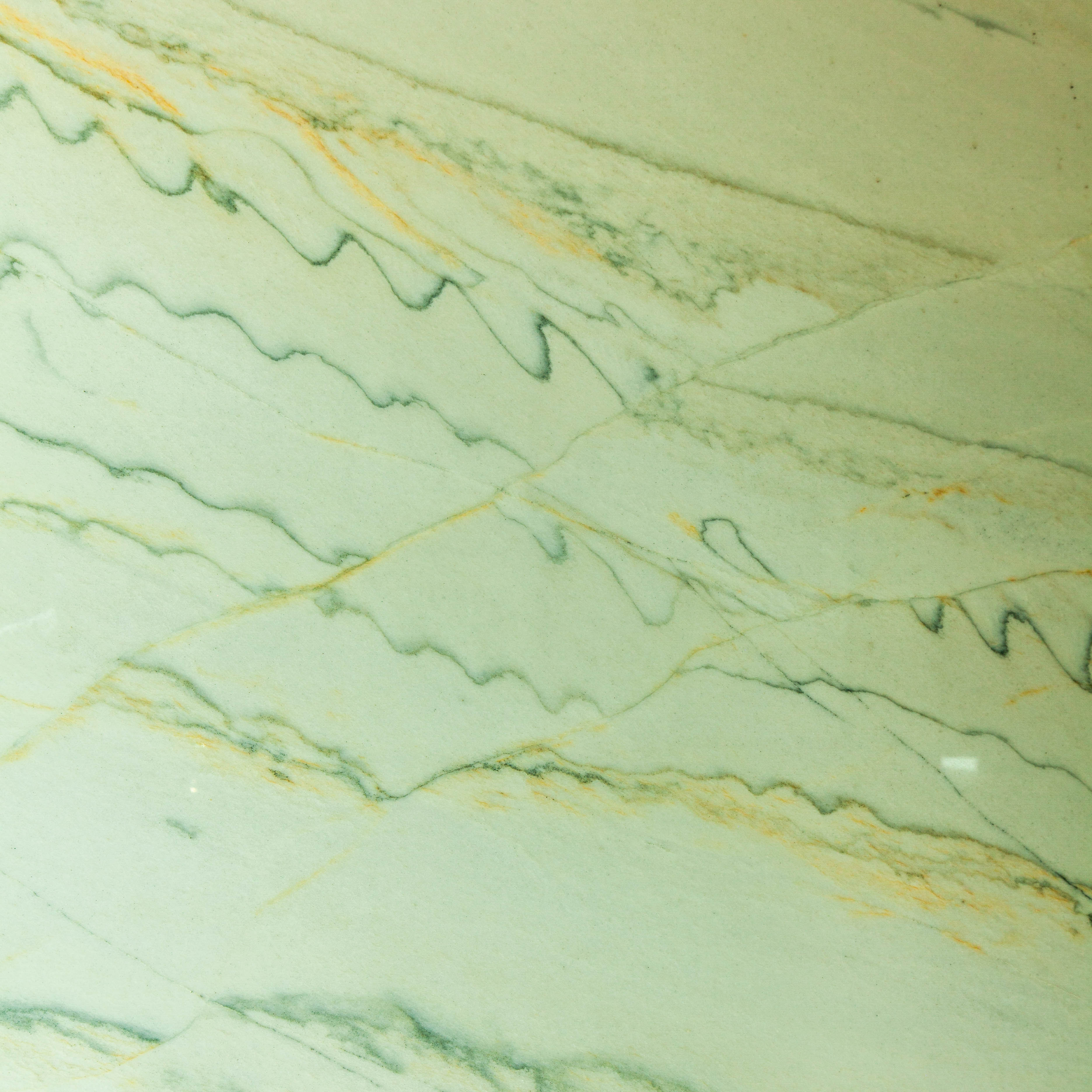
#23: Victoria Regia: Fluid Altered “Serpentinized” Pillow Lava, Extrusive Igneous: Brazil
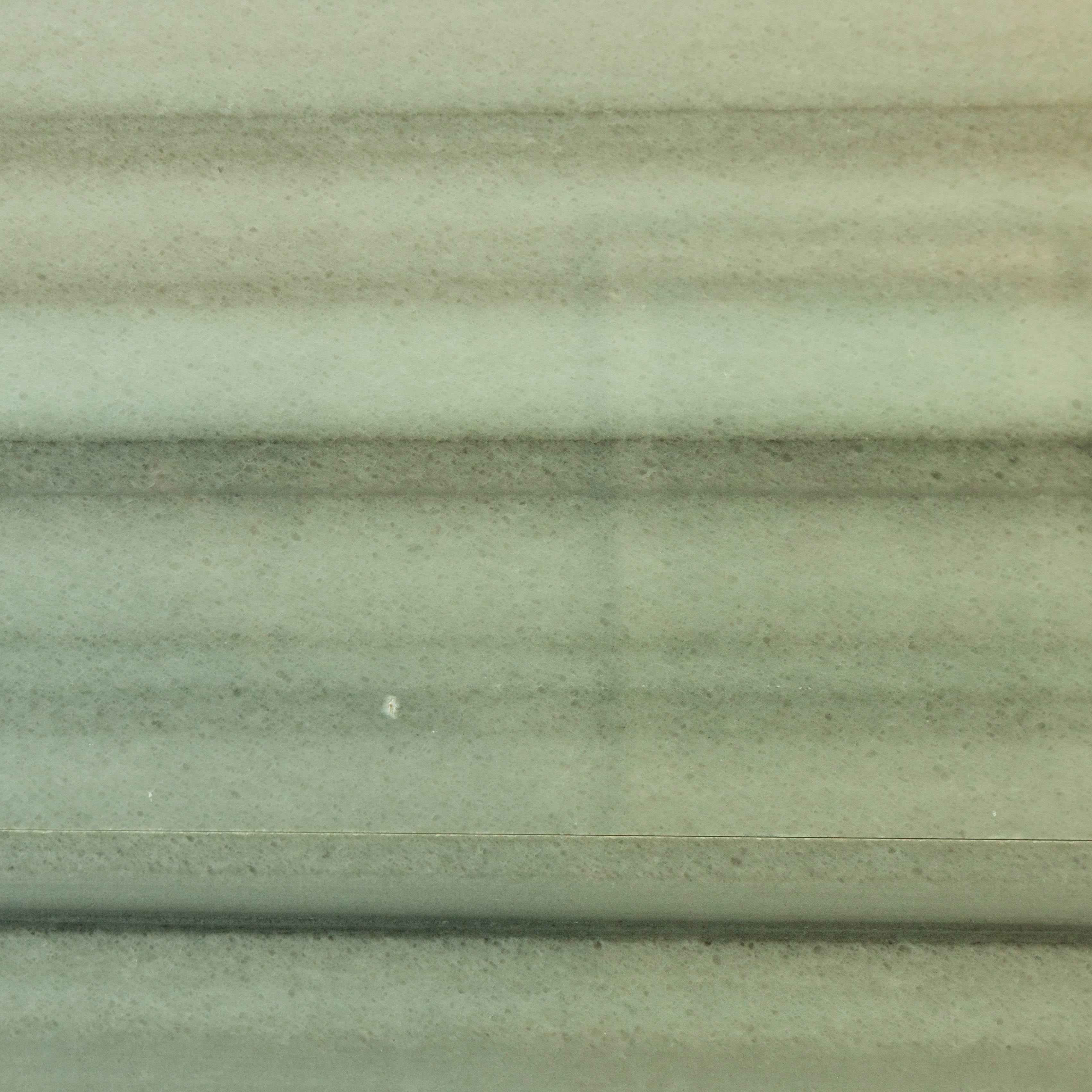
#27: Underformed Marble Tiles: Layered Marble, Metamorphic; Unknown Origin

#29: Sandstones (clockwise from top): Mud Ripples, Animal Tracks, Trace Fossils, and Kanab Wonderstone; Terrestrial Sedimentary; Utah
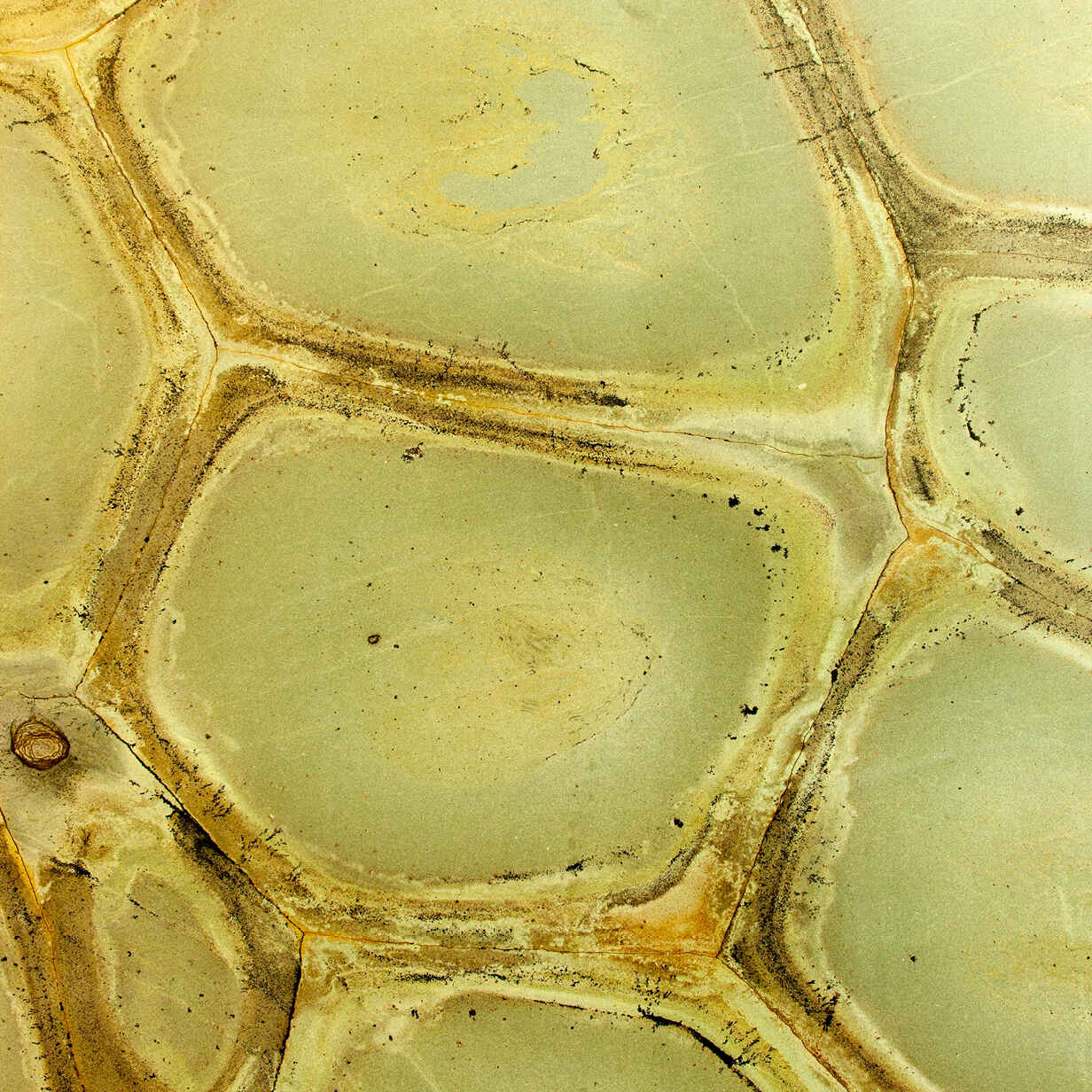
#30: Wasabi: Columnar Joints and Fluid Alteration, Extrusive Igneous; Brazil
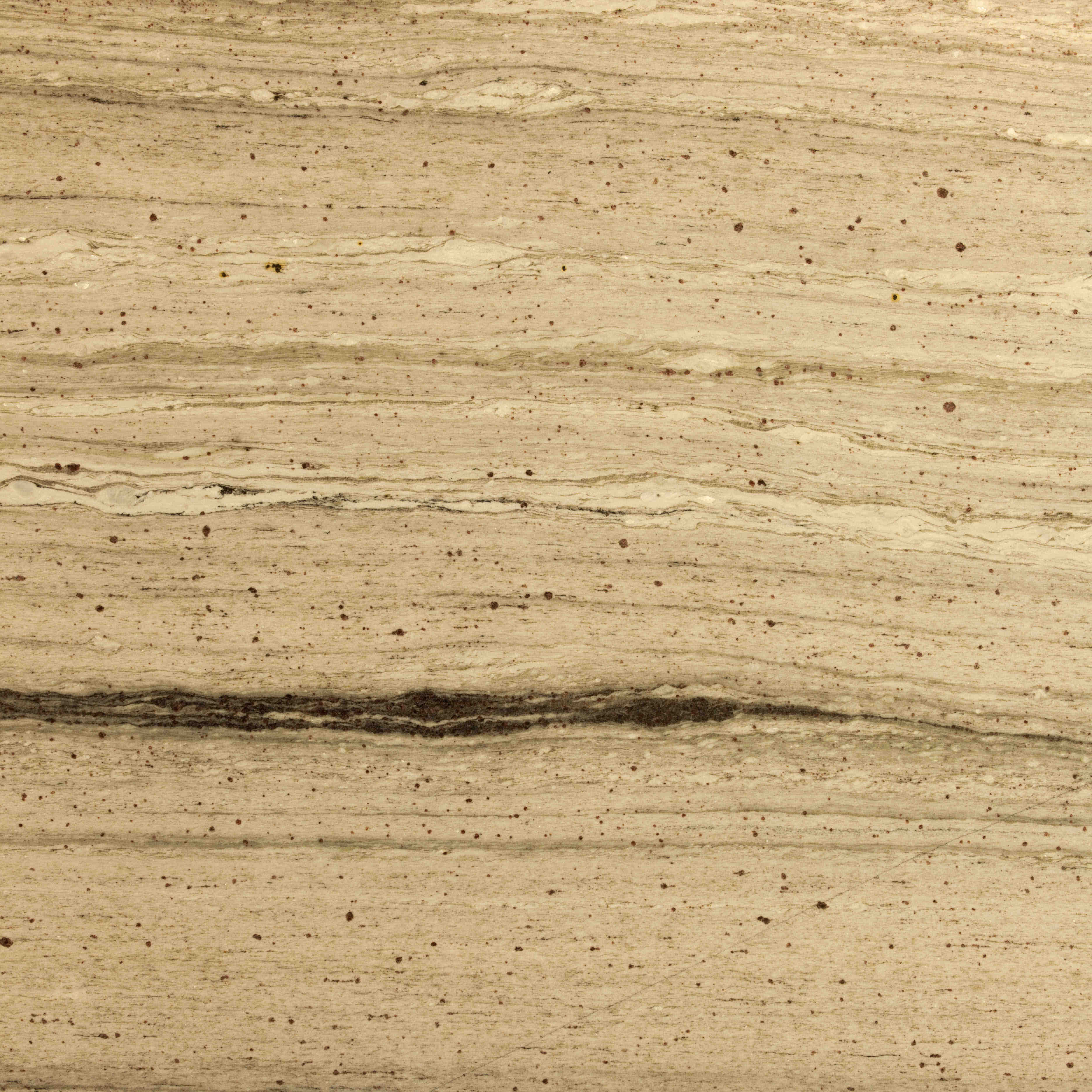
#31: River White: Feldspar and Quartz- Rich Mylonitized Granite with Garnet, Metamorphic; India
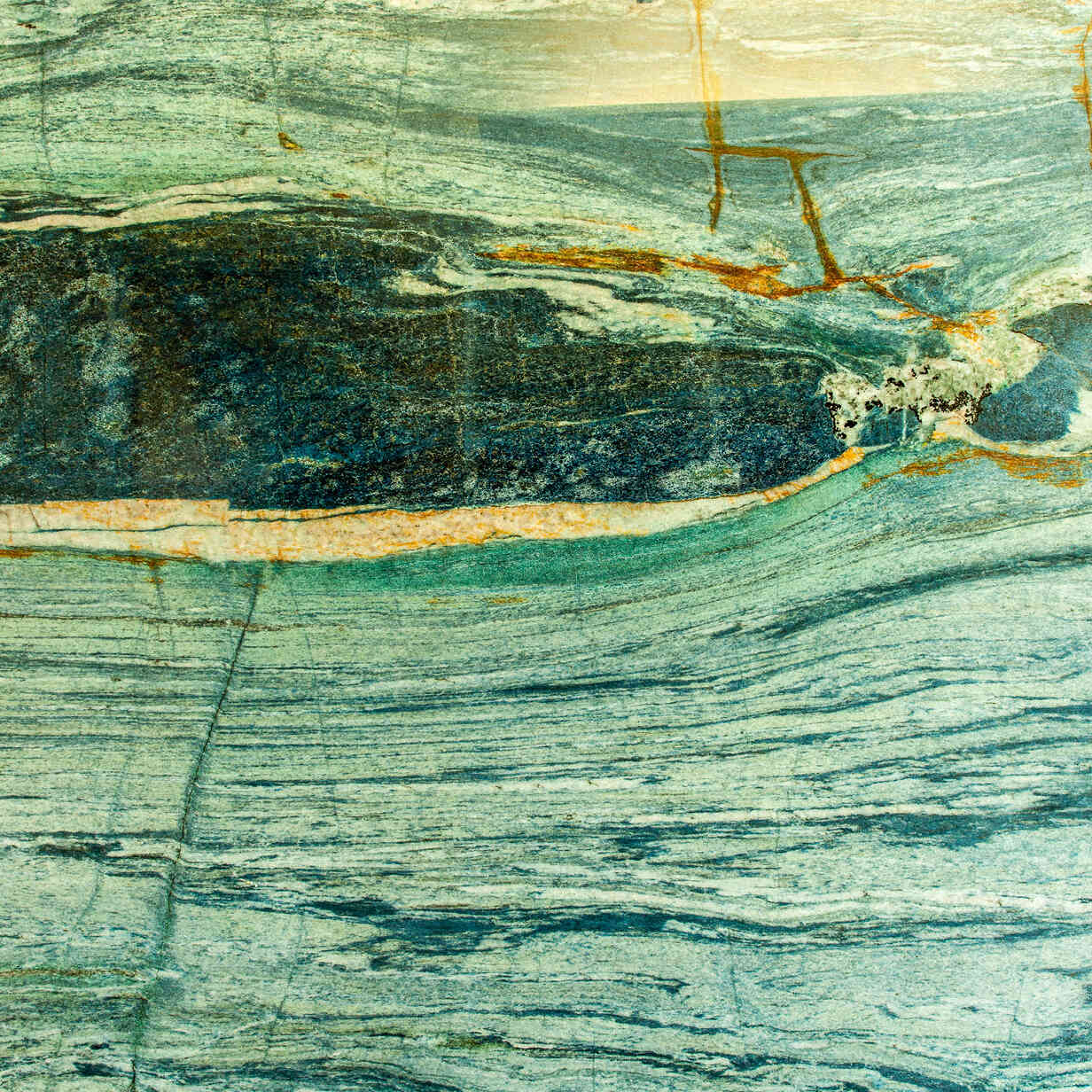
#32: Azul del Mar: Boudinage: Stetching of Strong Layers and Flow of Weaker Layers, Metamorphic; Brazil
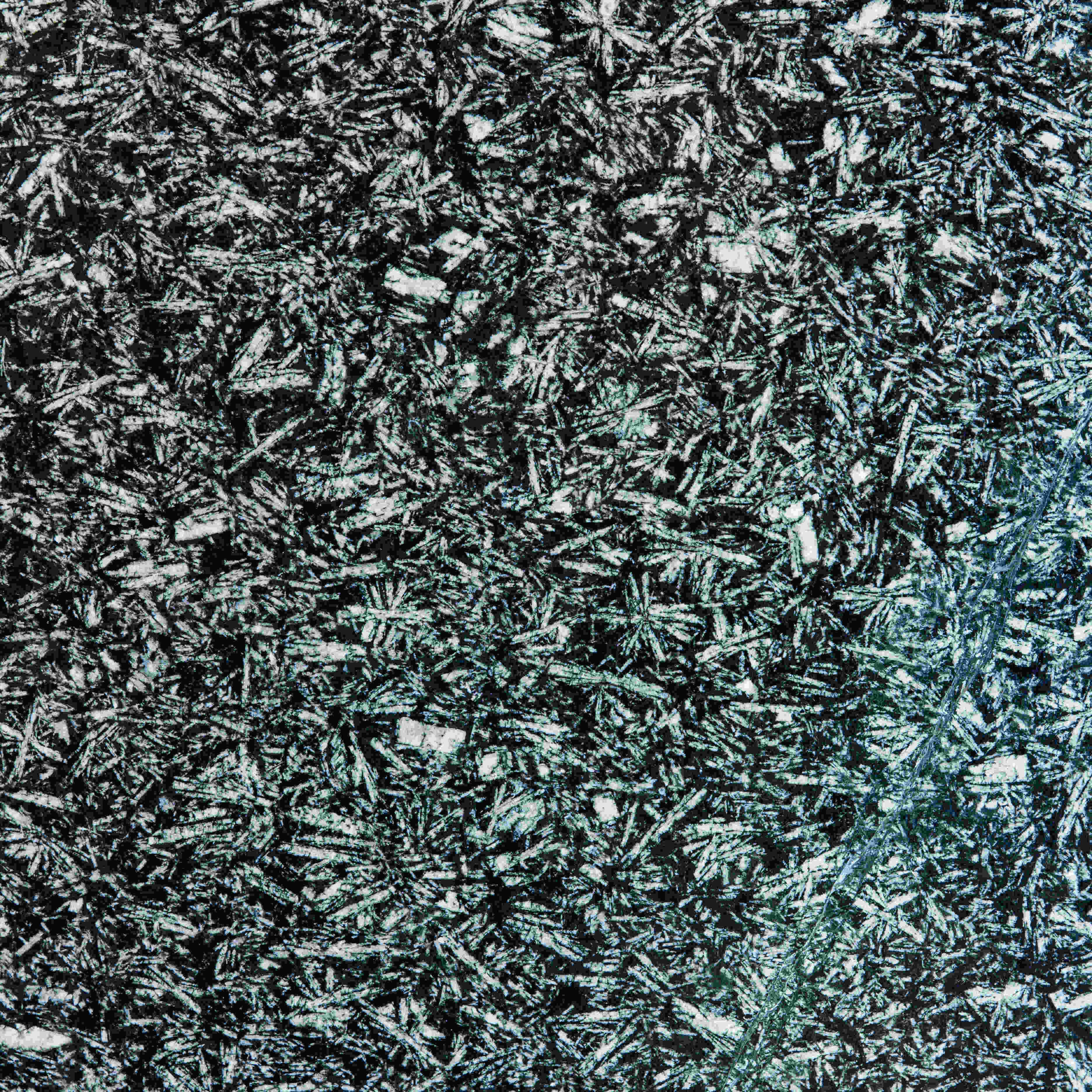
#33: Snowflake Porphyry: Large Crystal Clusters of Plagioclase Feldspar in an Andesite Groundmass, Extrusive Igneous; Brazil

#34: Smeralda: Fractured and Fluid- Altered Granite in a Fault Damage Zone; Nicaragua

#36: Bahia Blue: Sodium and Potassium-Rich, Quartz-Poor ‘Granite’ (Sodalite Syenite), Intrusive Igneous; Brazil
THIRD FLOOR
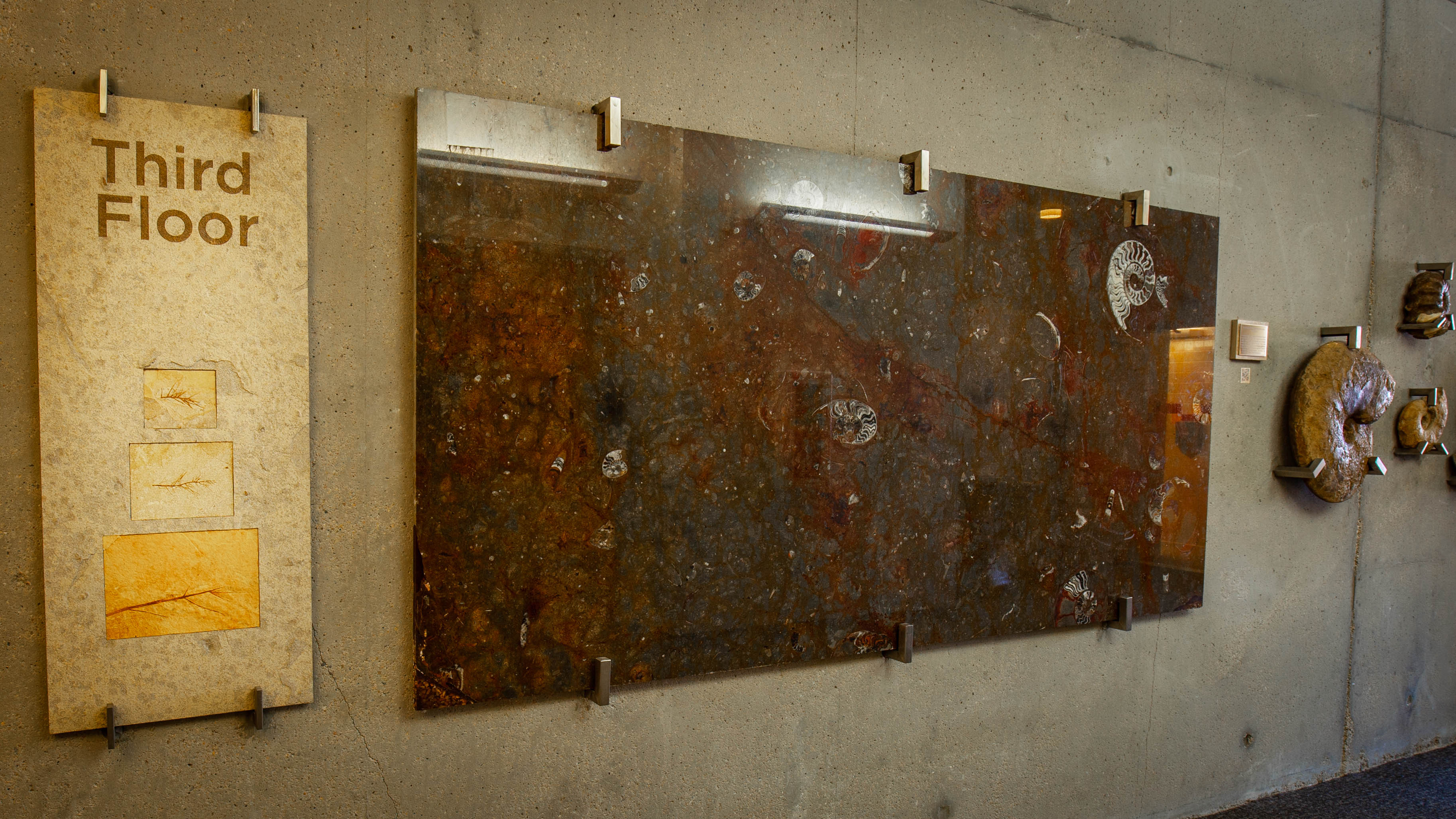
The third floor houses classrooms, faculty offices, and analytical laboratories.
Virtual Tour of Third Floor Elevator Displays
Named spaces include:
- Charles R. & Cathy Williamson Sedimentary Laboratory: Dedicated to the study of sedimentary rocks and basin analysis.
- Ferdinand F. & Henrietta J. Hintze Paleontology & Sedimentology Teaching Laboratory: For instruction about rocks, fossils, and geologic history.
- Grant Parsons Classroom: For instruction in Earth science courses.
- Hellmut H. & Gerda S. Doelling Gathering Area: North-end informal meeting space.
- Matthew P. Nackowski Ore Petrology Laboratory: To investigate ore minerals and their genesis.
- Robert & Jan Smith Computational Lab: Used for instruction and provides access to high performance computing to students of geology and geophysics.
- William Lee & Betty Curtis Stokes Paleontology Laboratory: For study of fossils of all kinds.
- Waldemar E. & Harriet R. Rasmussen Conference Room: For faculty meetings and other conferences.
- Electron Microprobe Laboratory: Quantitative chemical analysis of minerals and other solid materials using electron microprobe, X-ray spectrometry.
- QEMSCAN/X-Ray Powder Diffraction Laboratory: Mineral identification using X-ray diffraction and electron miscroscopy.
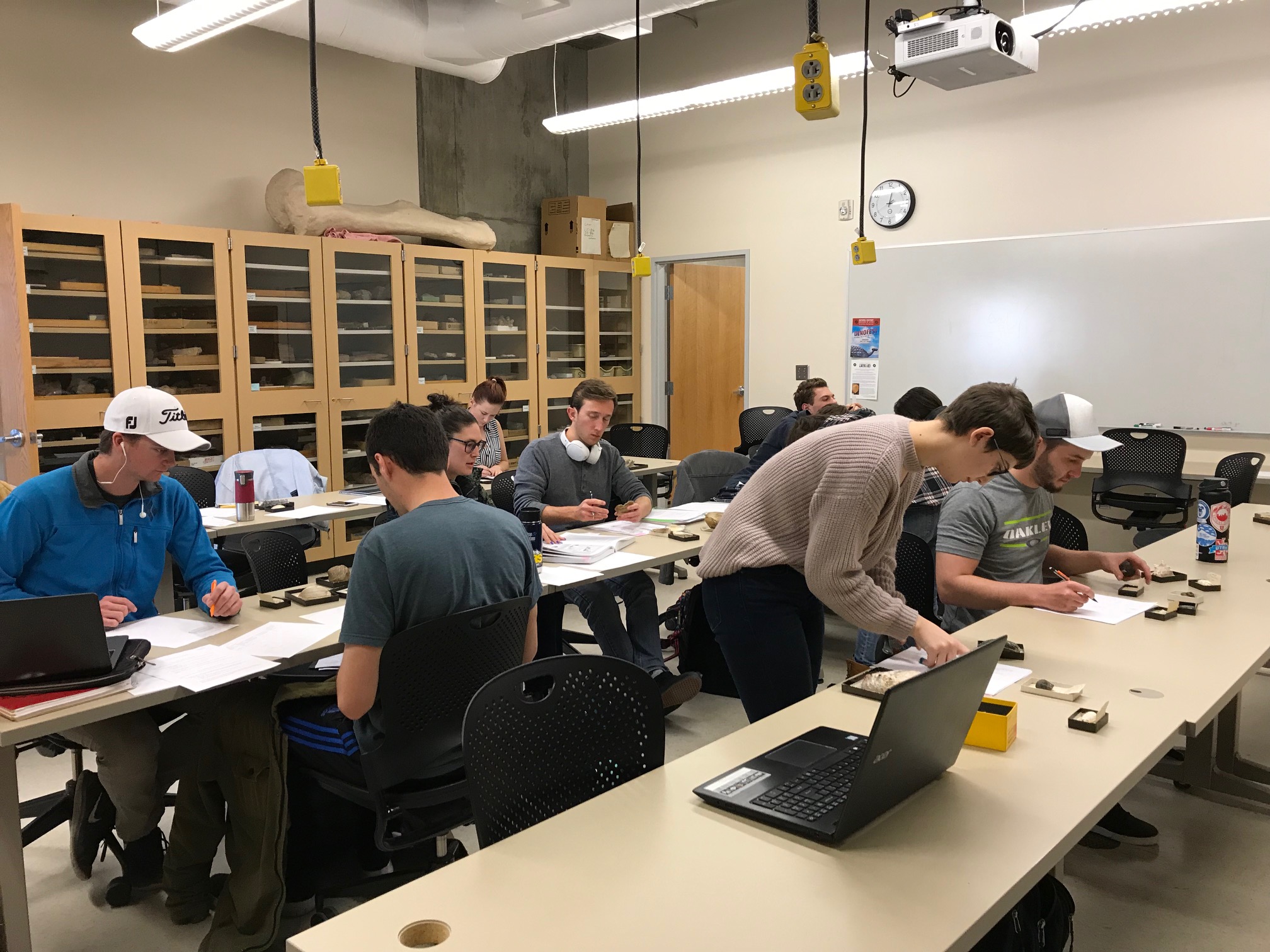
THIRD FLOOR DISPLAYS & SLABS
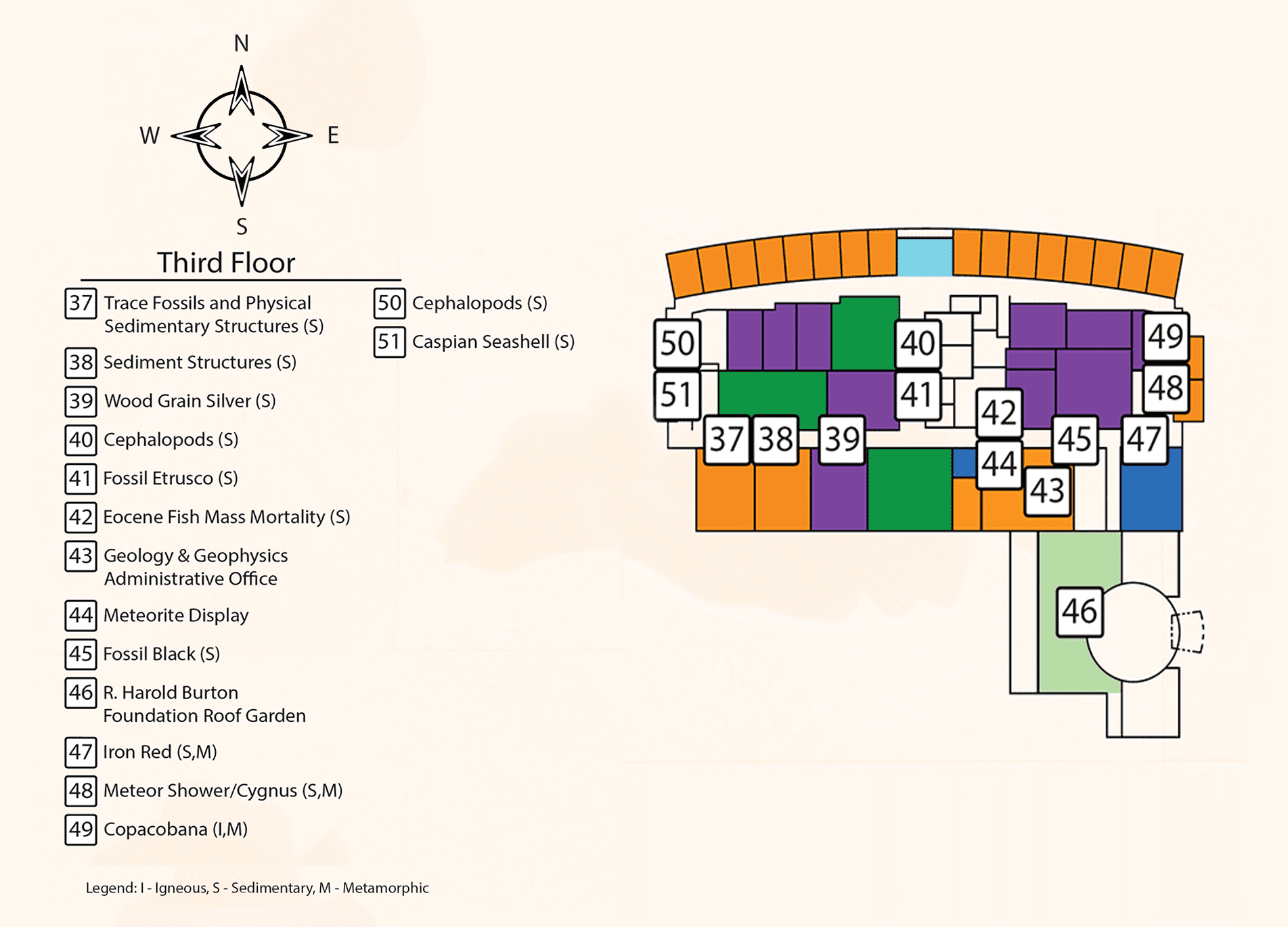
THE HAROLD R. BURTON FOUNDATION ROOF GARDEN
This green roof showcases the benefits of alternative roof design including:
Increased energy efficiency: Reduces energy required to maintain indoor temperature by regulating roof surface temperatures and reflecting light from green landscapes.
Reduction of the urban heat island effect: In Utah’s hot summer season, the green roof will help remove heat from the air through evapotranspiration, reducing the temperature of the roof surface and the surrounding air.

THIRD FLOOR ROCK SLABS
Earth history (e.g., sedimentary geology, structural geology, and resources) is exemplified in the many sedimentary rock slabs of Proterozoic to Cenozoic in age. The following slabs are located on the third floor; refer to third floor displays & slabs.
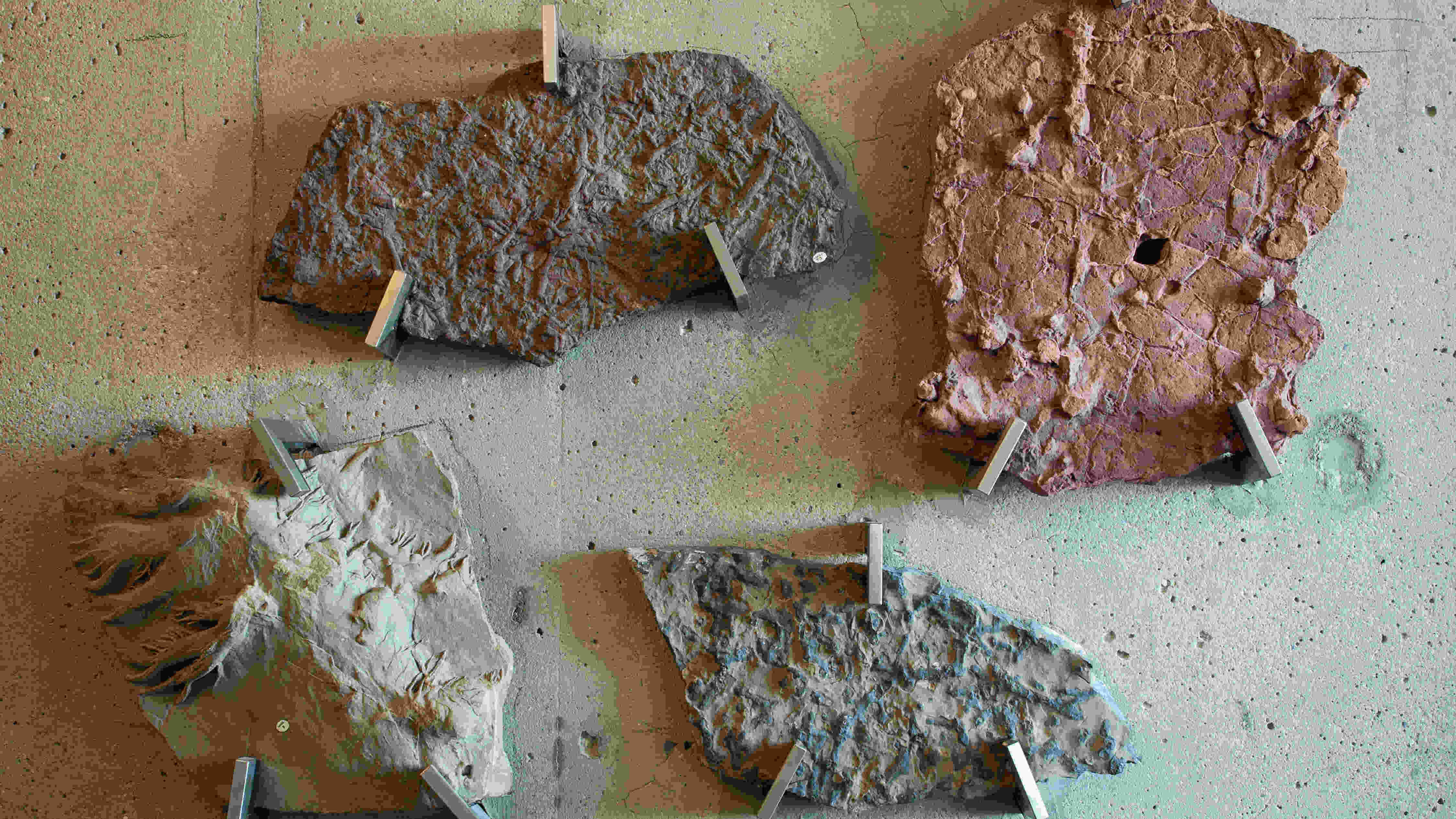
#37: Trace Fossils and Physical Sedimentary Structures: Marine Sedimentary; Idaho and Utah
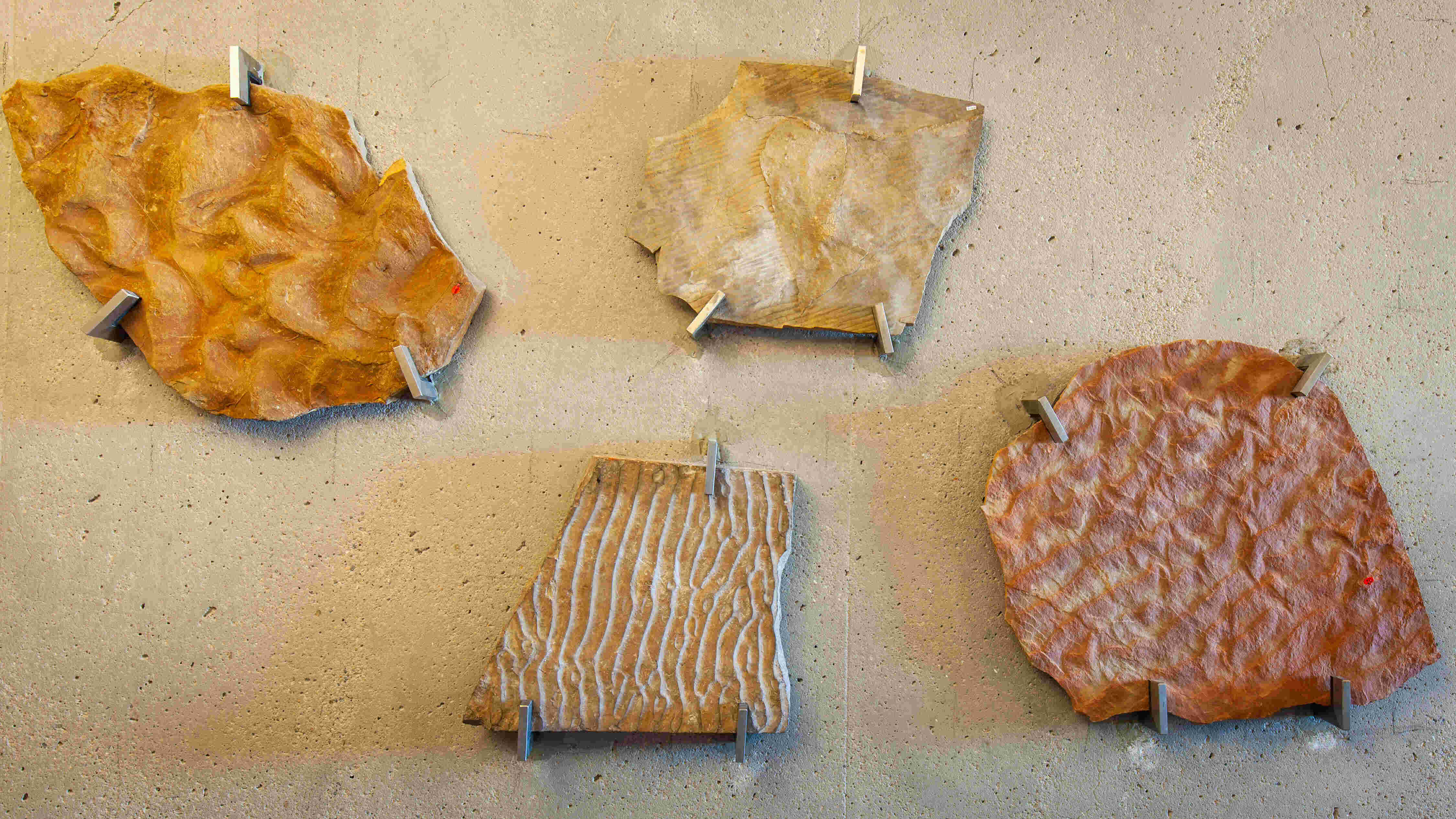
#38: Sedimentary Structures: Ripples and Mud Cracks, Terrestrial Sedimentary; Utah

#40: Cephalopods: Ammonites, Marine Sedimentary; Utah
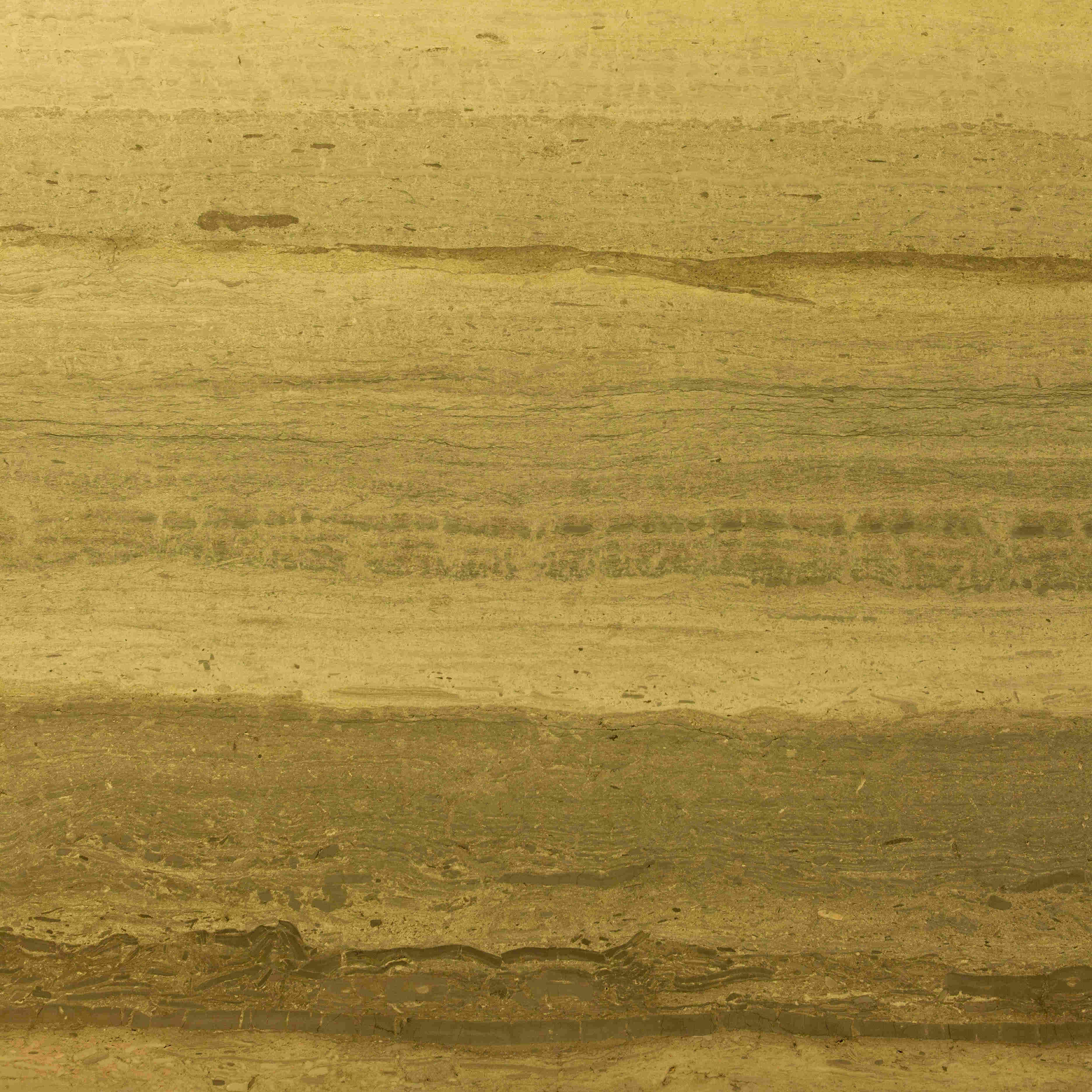
#39: Wood Grain Silver: Muddy Laminated Limestone, Calcareous Lake/Inland Sea Sediments, Terrestrial Sedimentary; China
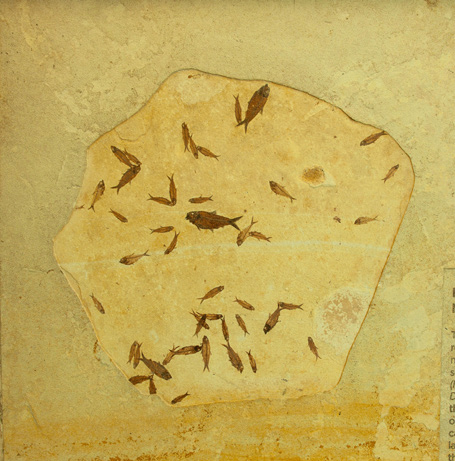
#41: Eocene Fish Mass Mortality: Green River Formation, Terrestrial Sedimentary; Utah
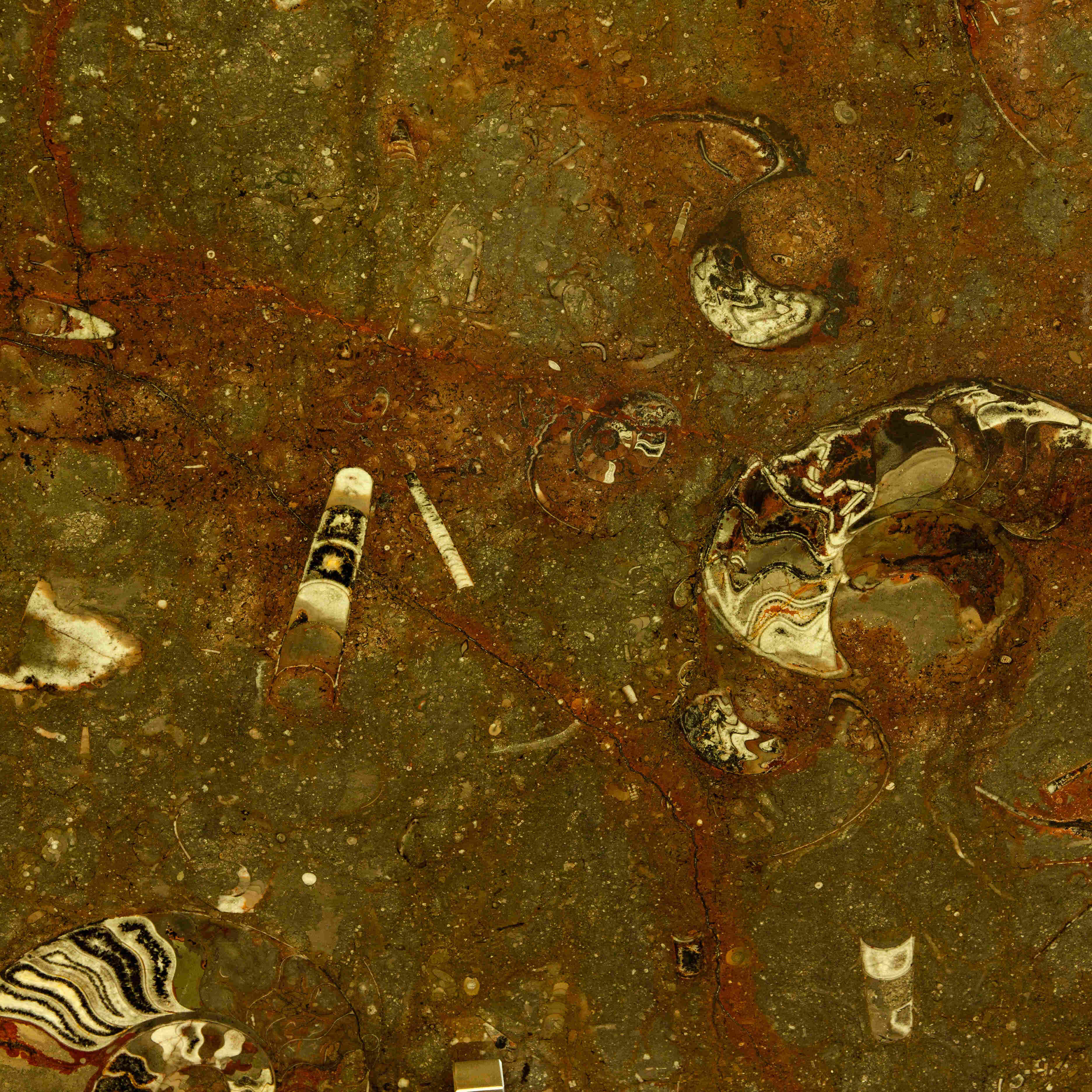
#42: Fossil Etrusco: Cephalopod Limestone, Ammonites, Marine Sedimentary; Morocco
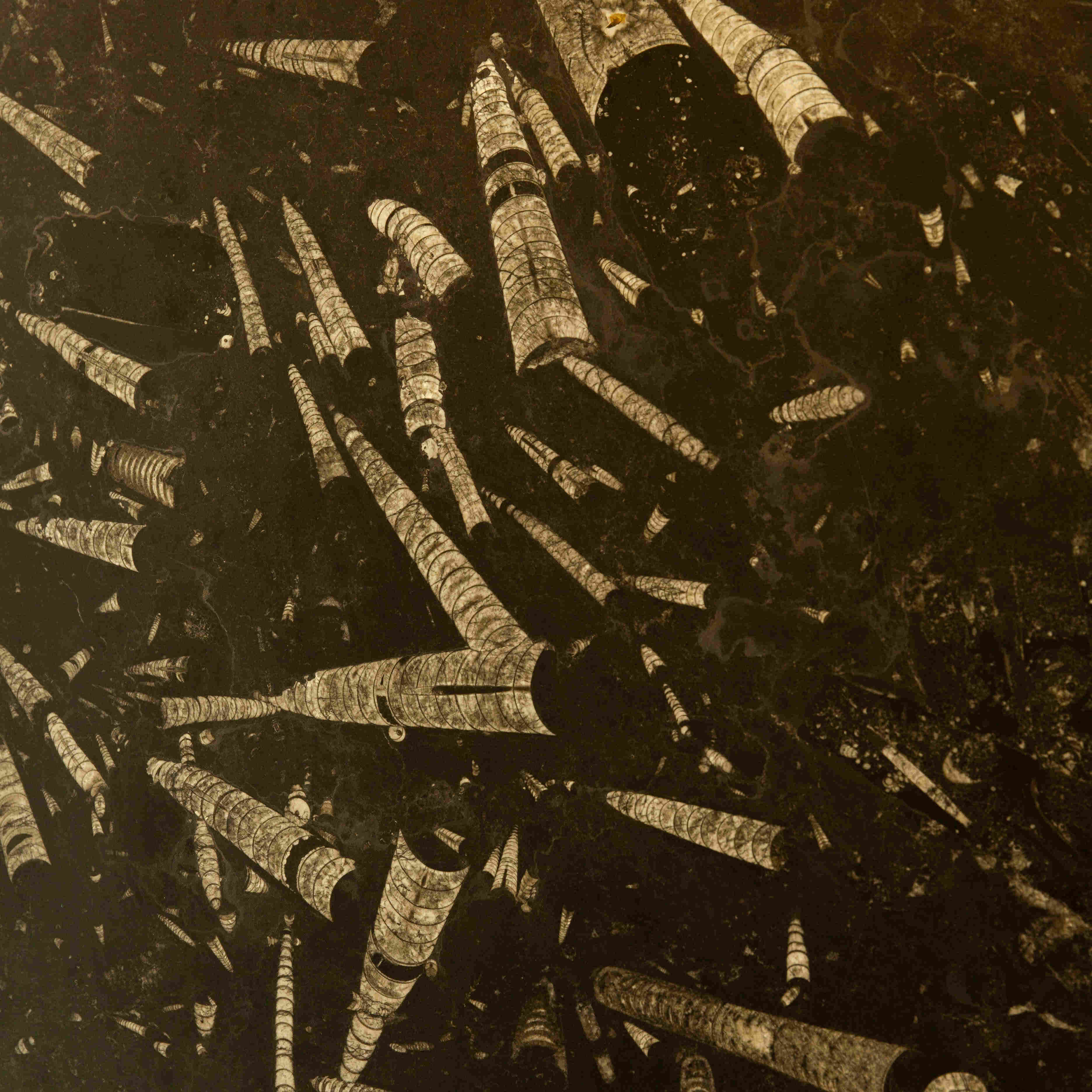
#45: Fossil Black: Cephalopod Limestone, Belemnite Graveyard, Marine Sedimentary; Morocco
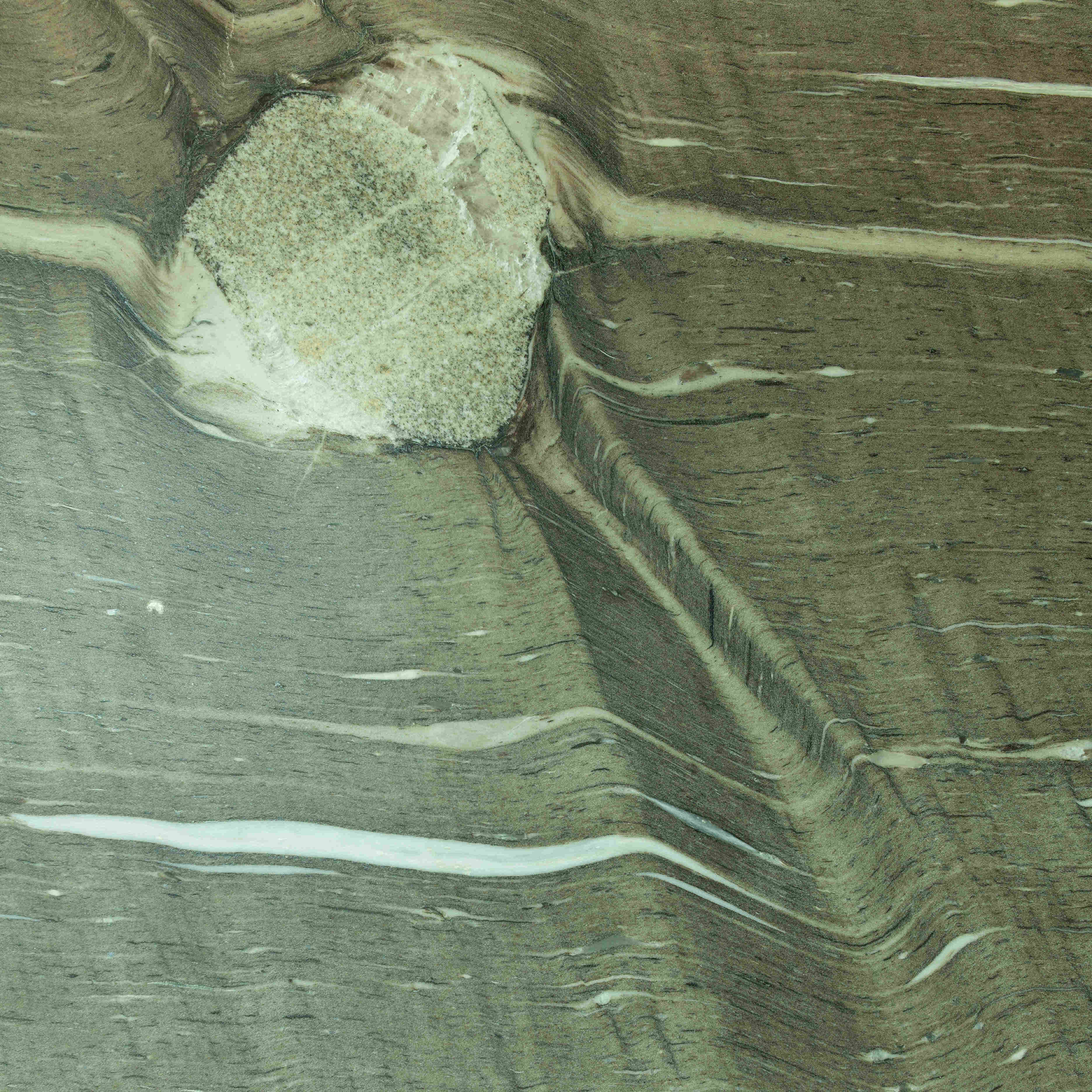
#48: Meteor Shower/ Cygnus: Deformed Diamictite, Meta- Sedimentary; Brazil
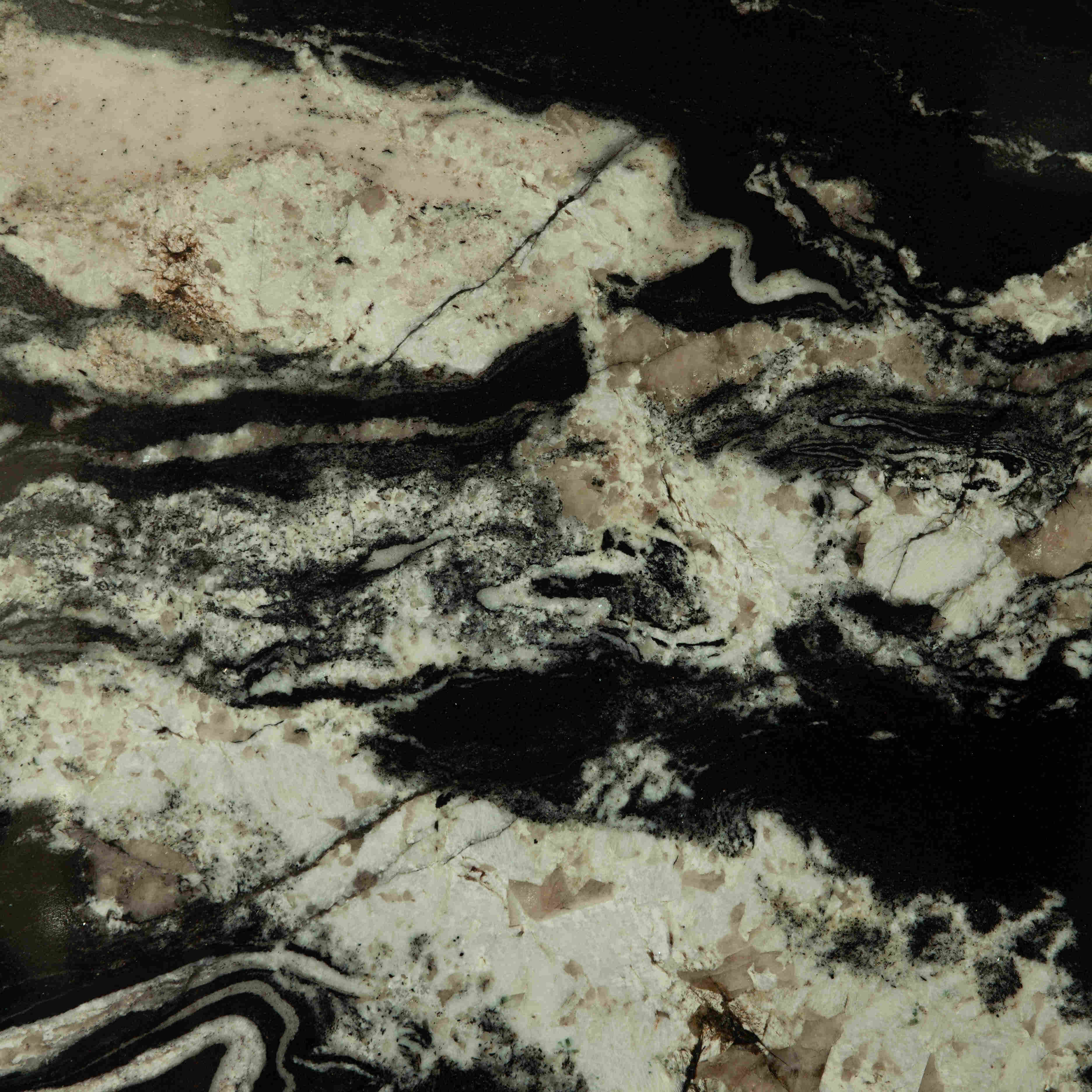
#49: Copacobana: Granitic Dikes Intermingled with Partially Melted Metamorphic Rock, Contact Metamorphism; Brazil
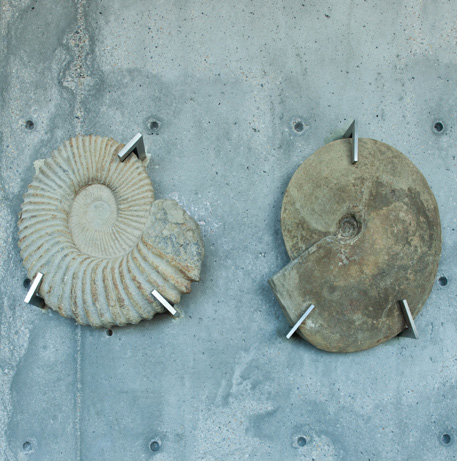
#50: Cephalopods: Ammonites, Marine Sedimentary; Utah
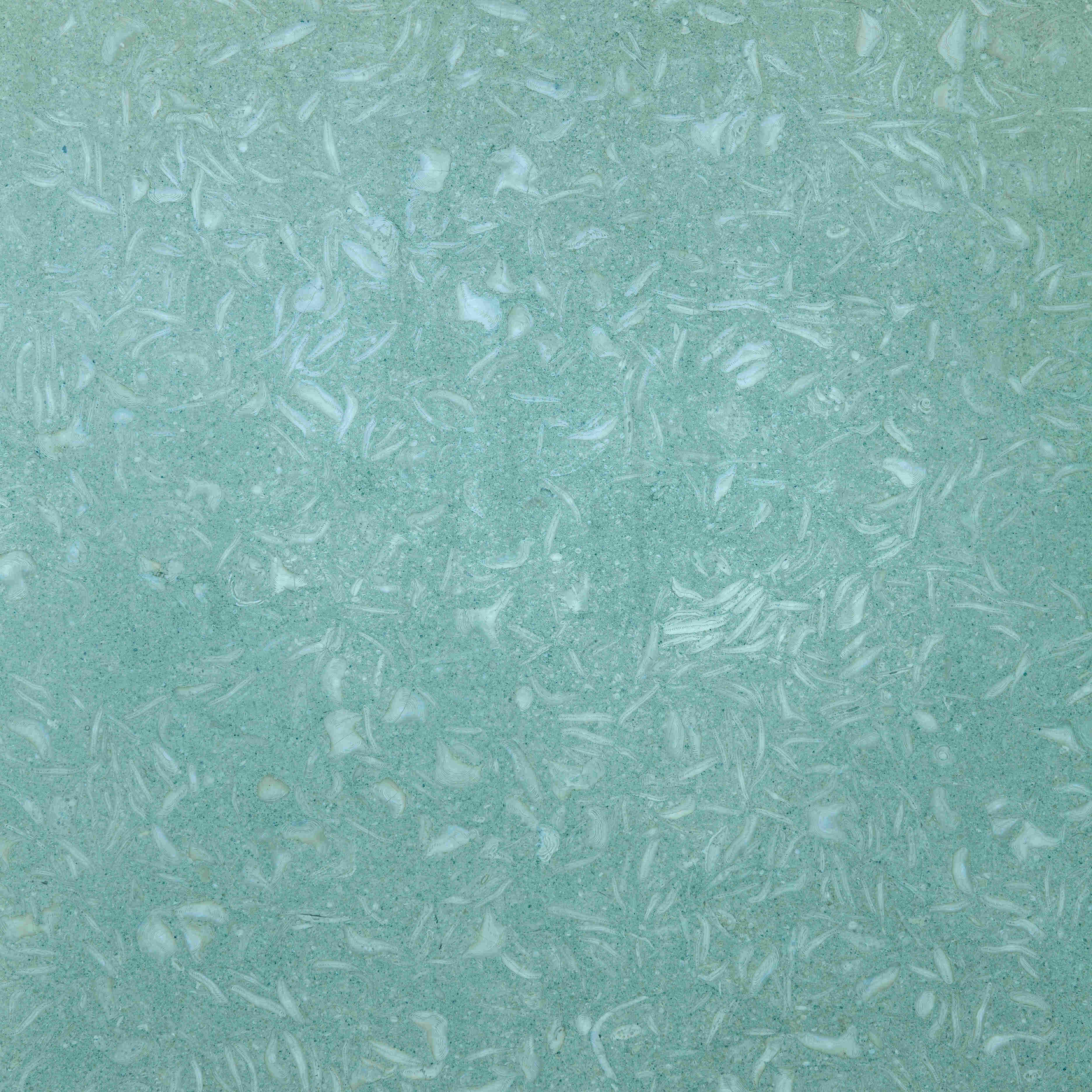
#51: Caspian Seashell: Nummulitic Limestone (Giant Amoeboid Protists called Foraminifera), Marine Sedimentary; Turkey
FOURTH FLOOR
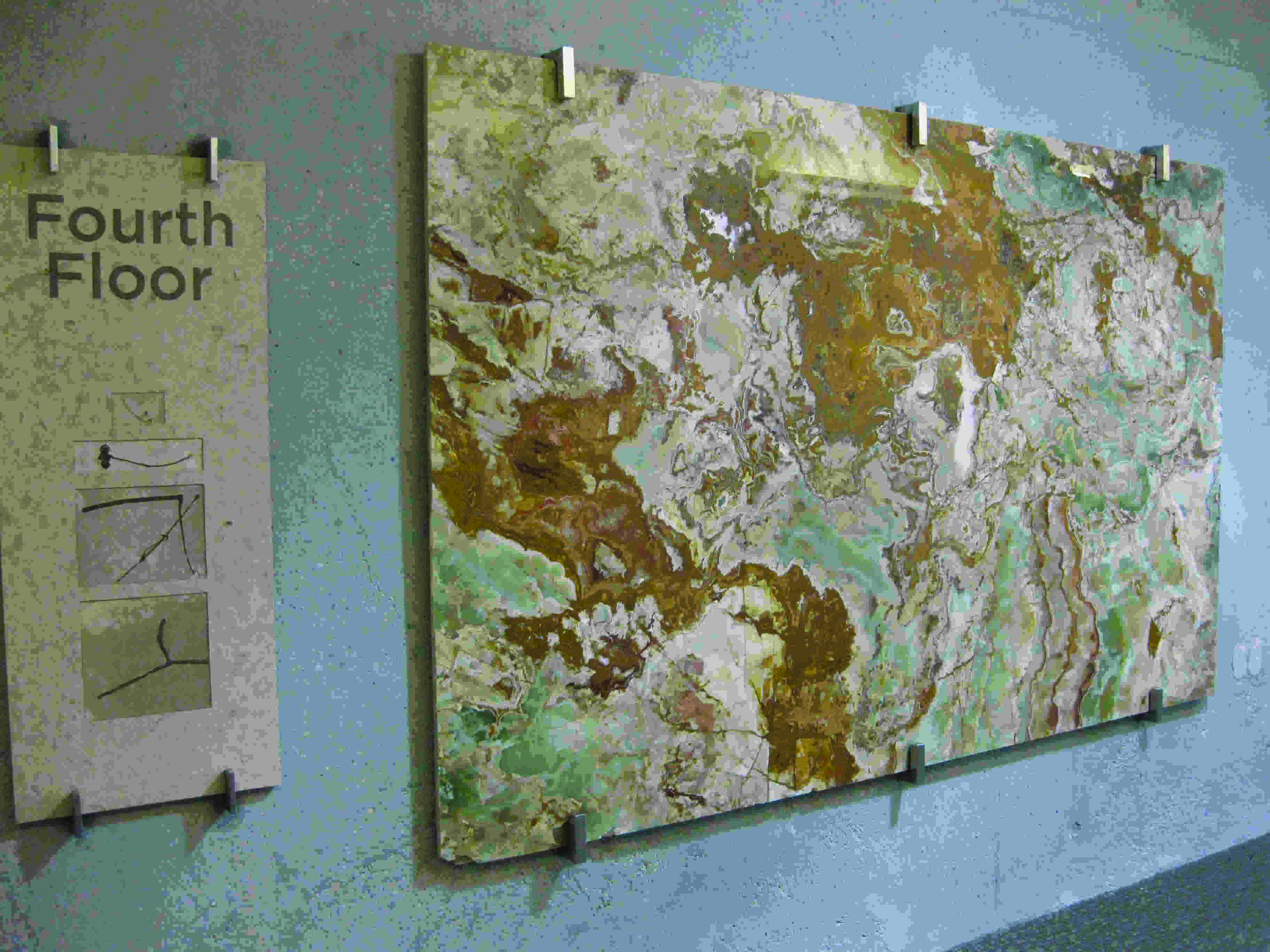
Faculty offices and geochemical and geological engineering laboratories are located on the fourth floor.
Virtual Tour of Fourth Floor Elevator Displays
Virtual Tour of Fourth Floor Views
Named spaces include:
- Donald D. & Erika A. Runnells Aquatic Chemistry Laboratory: For the study of aqueous geochemistry.
- Donald D. & Erika A. Runnels Gathering Area: West-end informal meeting space.
- G.W. Anderson Structural Modeling/Deformation Laboratory: For study of rock deformation and the formation of geologic structures.
- James A. Whelan Gathering Area: (A gift from Mike and Andrea Manship) north-end informal meeting space.
- MagMaX Lab (Magma & Mantle Experimental Laboratory): For the study of magma genesis and of the transport and differentiation from the mantle to the crust.
- Dissolved & Noble Gas Lab: Analytical mass spectrometry for the purpose of dating young groundwaters using noble gas thermometry and age dating.
- ICP MS Metals Lab: Analytical mass spectrometry of trace metals and heavy isotopes minerals, water, and tissue.
- Particle Light Scattering Size & Surface Charge Lab: Analysis of particle size distribution in fluids.
- Strontium Isotope Geochemistry Lab: Analysis of strontium isotopes using analytical mass spectrometry.
- Stable Isotope Lab: Analysis of stable oxygen and hydrogen isotopes.

FASB is full of beautiful geologically-themed maps, photos, and works of art.
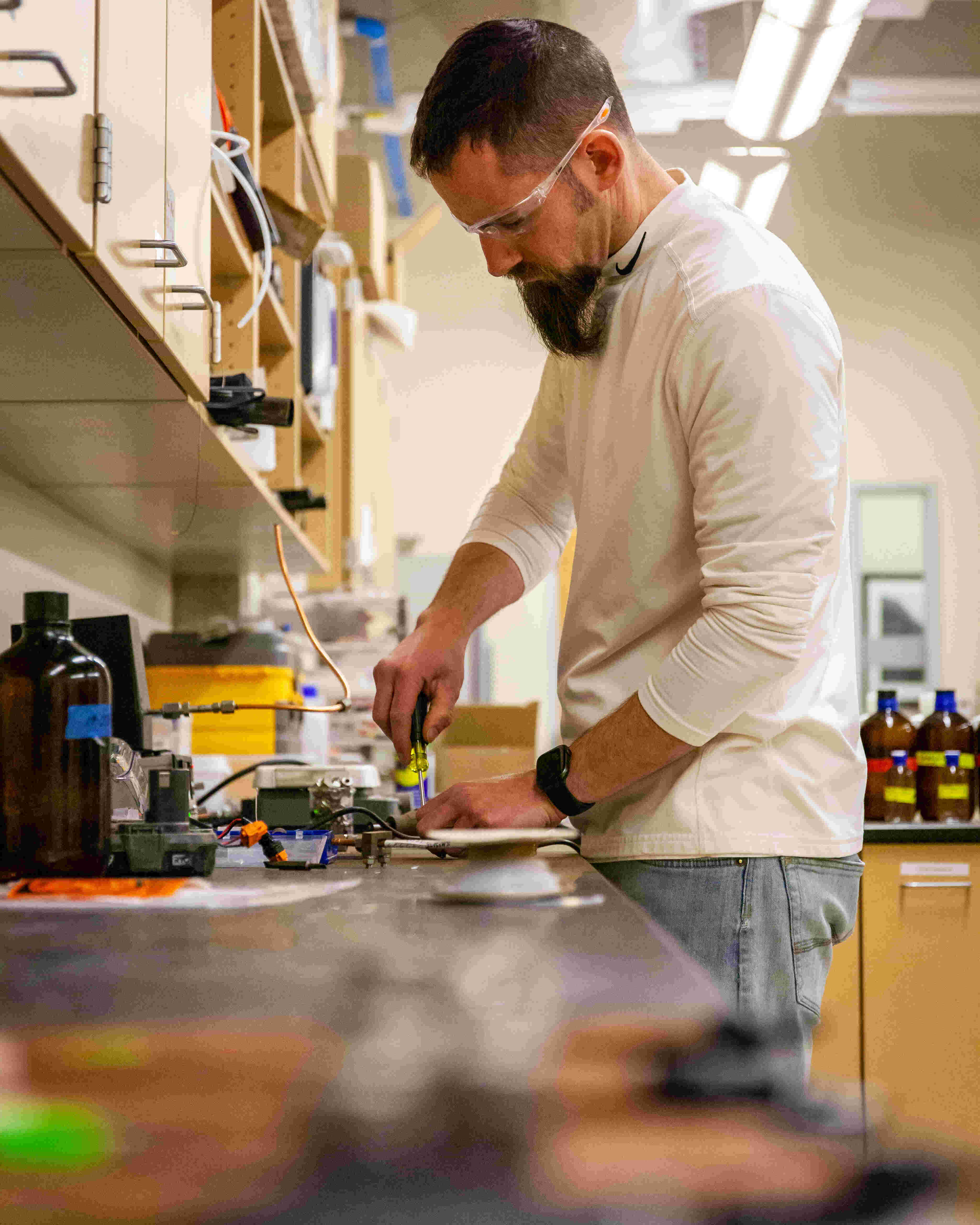
Many labs are located on the fourth floor, including the Dissolved and Noble Gas Laboratory
FOURTH FLOOR DISPLAYS & SLABS
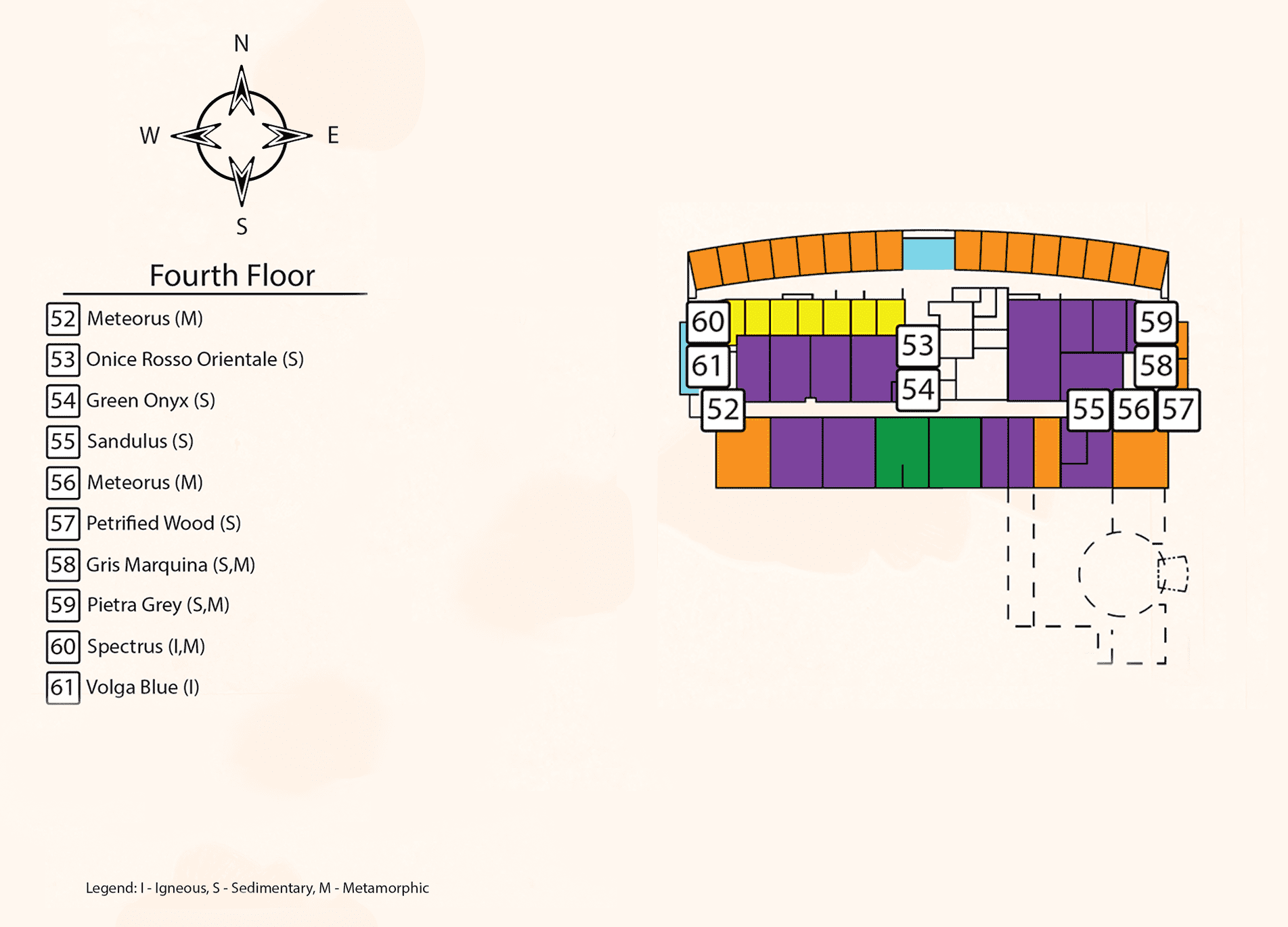
PAT & JUDY BEATIE PETRIFIED WOOD COLLECTION
Parts of this collection are displayed on the first and fourth floors. The Beaties spent decades collecting these specimens; some may represent new species.
Virtual Tour of Petrified Wood
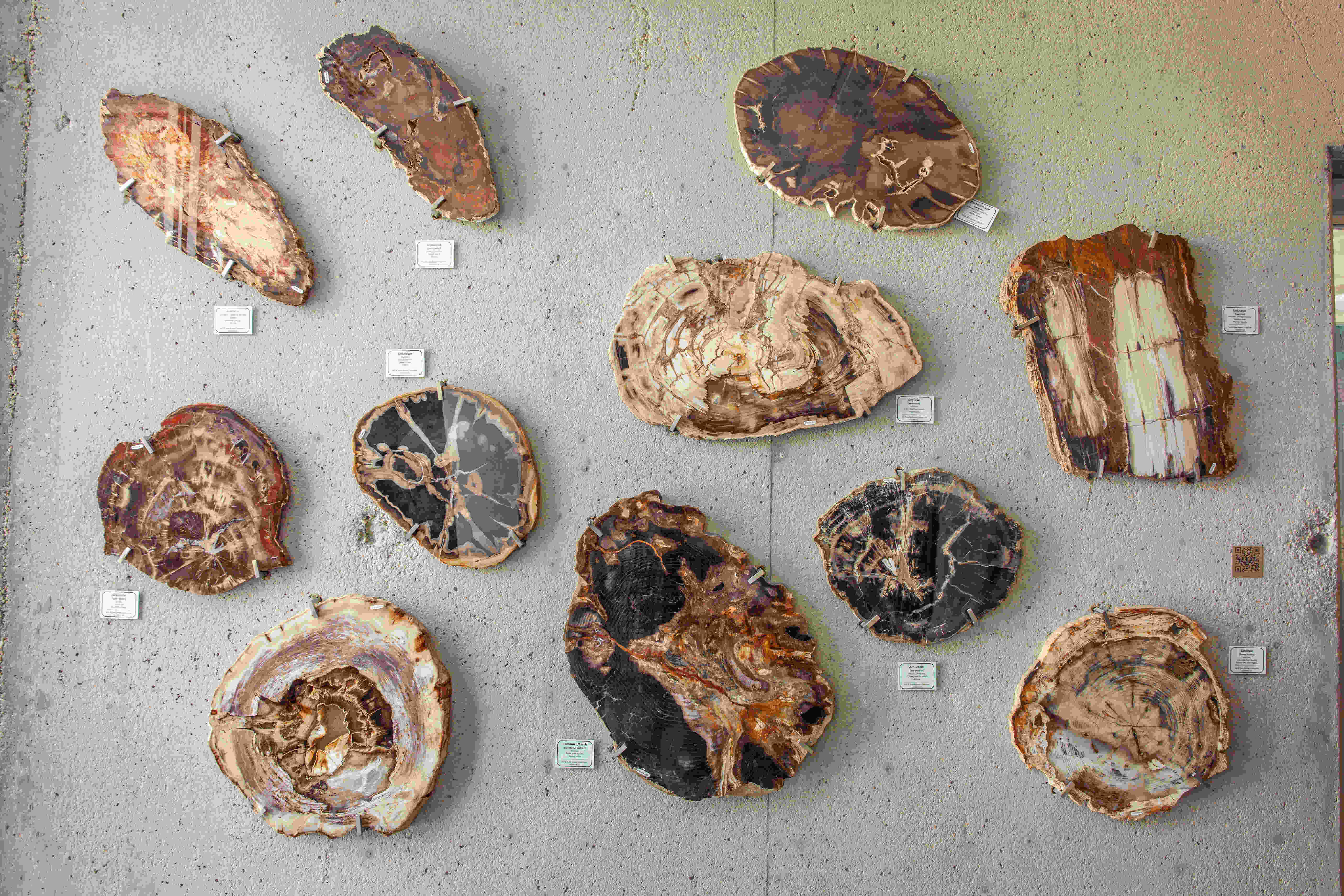
FOURTH FLOOR ROCK SLABS
Earth surface studies include hydrology, geochemistry, volcanology, and geological engineering, housed on the fourth floor. Rock slabs reflect water processes, their precipitates, and complex geochemical conditions. The following slabs are located on the fourth floor; refer to fourth floor displays & slabs.
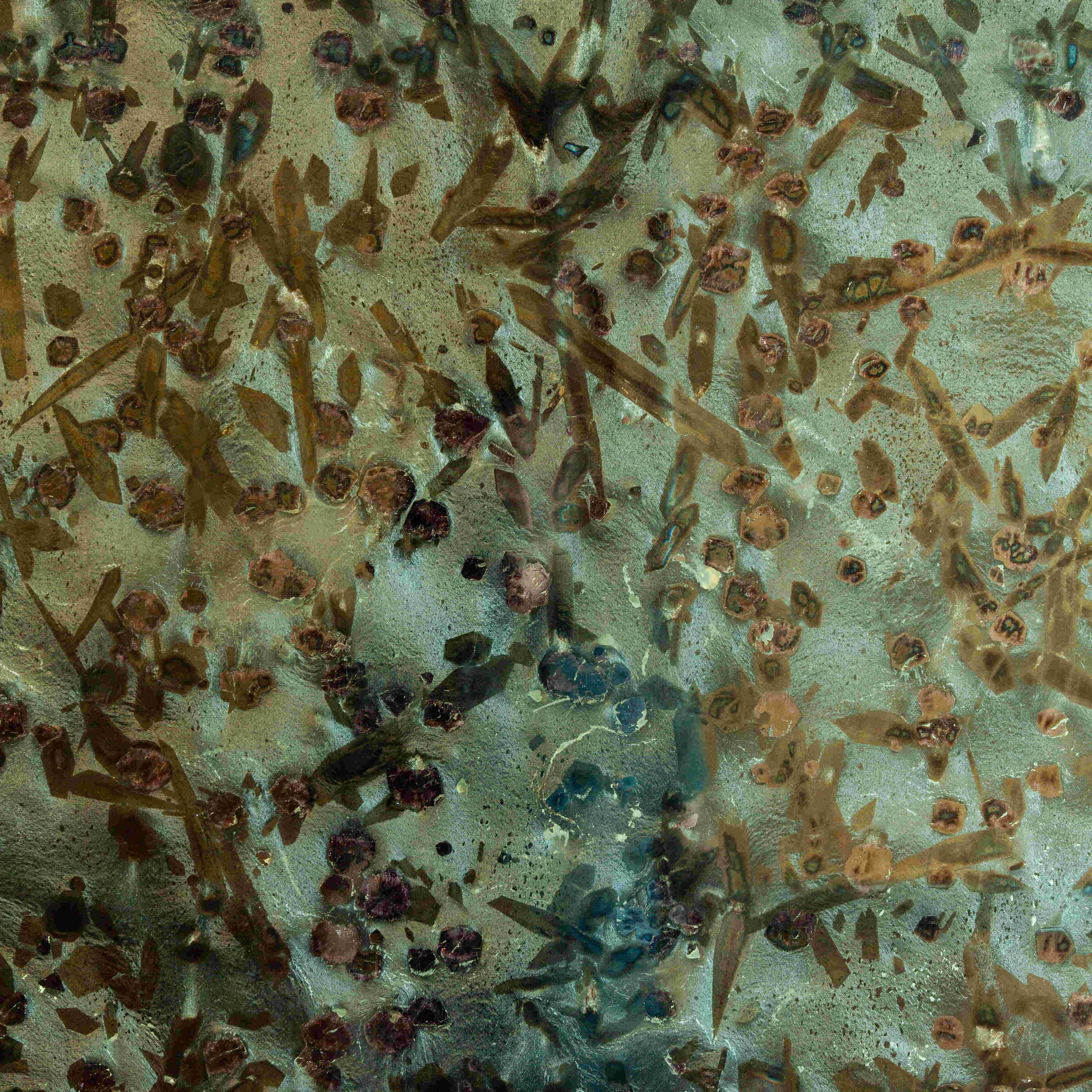
#52: Meteorus: Garnet Staurolite Schist, Metamorphic; Brazil

#53: Red Travertine: Brecciated Limestone Karst, Terrestrial Sedimentary; Italy

#54: Green Onyx: Undeformed Green Travertine Limestone, Terrestrial Sedimentary; Pakistan
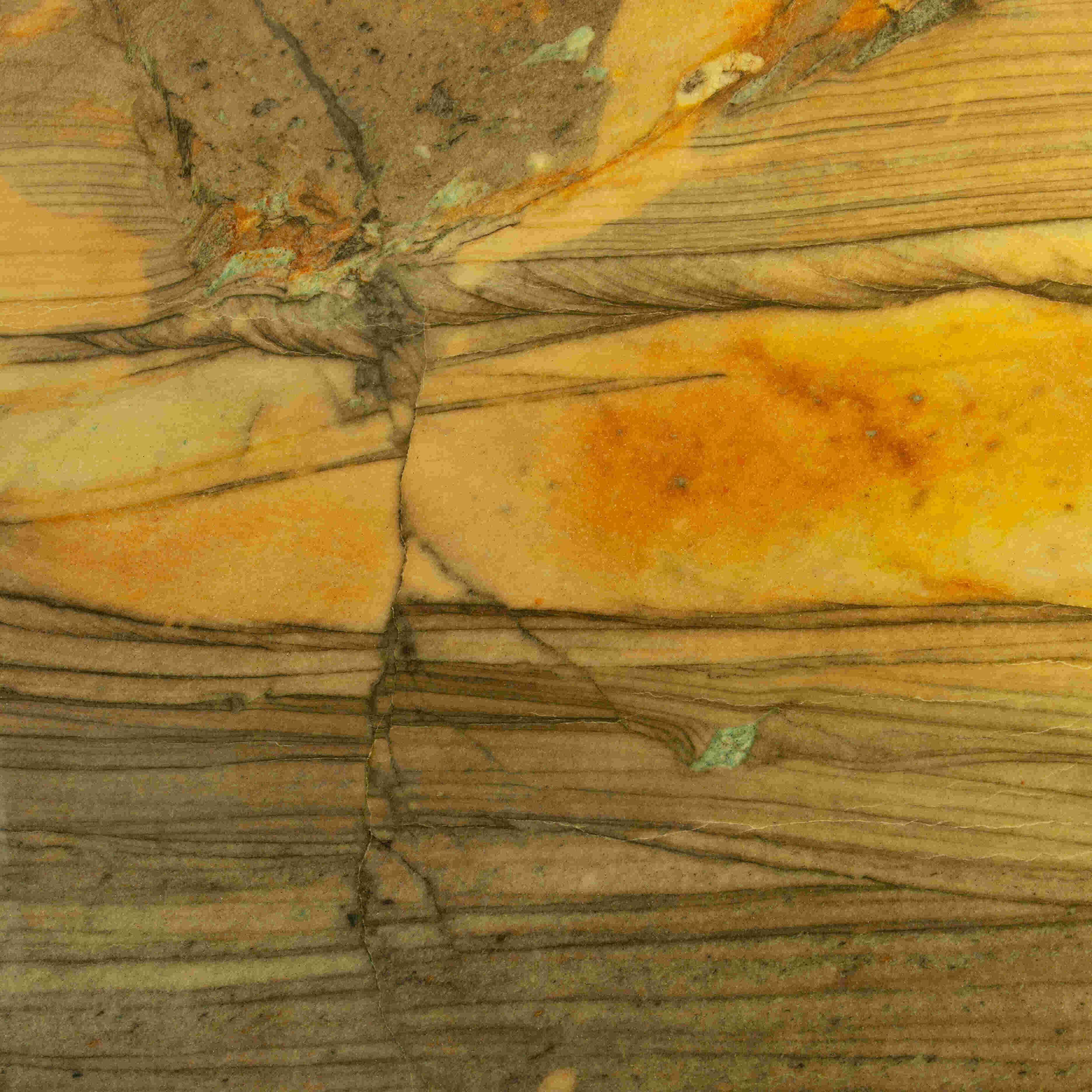
#55: Sandulus: Sorted and Layered Sandstone, Diamictite, Sedimentary; Brazil

#54: Green Onyx: Undeformed Green Travertine Limestone, Terrestrial Sedimentary; Pakistan
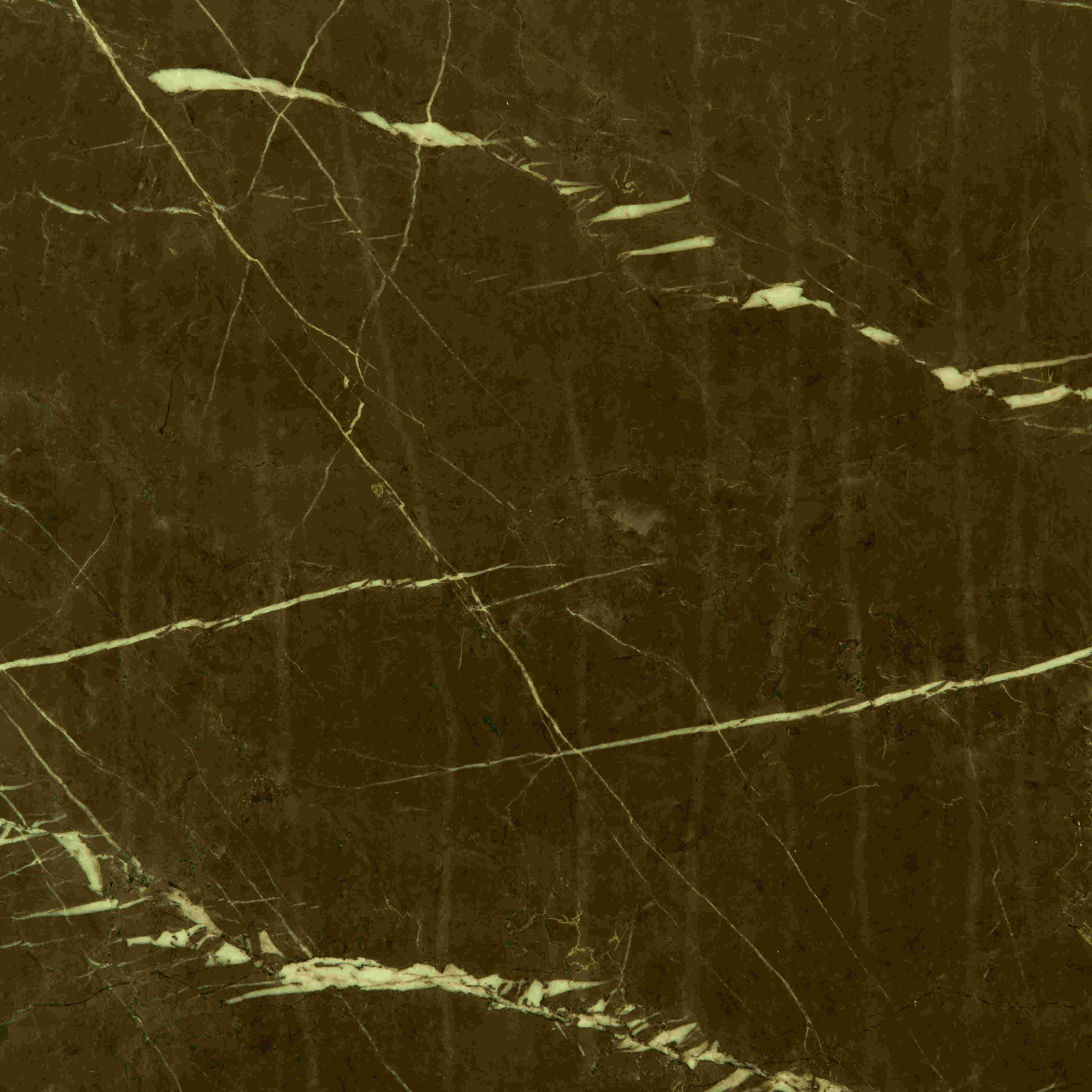
#59: Pietra Grey: Fractured Grey Marble, Metamorphosed Carbonate Breccia; Iran

#60: Migmatite: Coarsely-Crystalline Igneous Rock with Large Iron & Magnesium-Rich Aluminium Silicate Minerals (Cordierite: Blue), Intrusive Igneous; Brazil
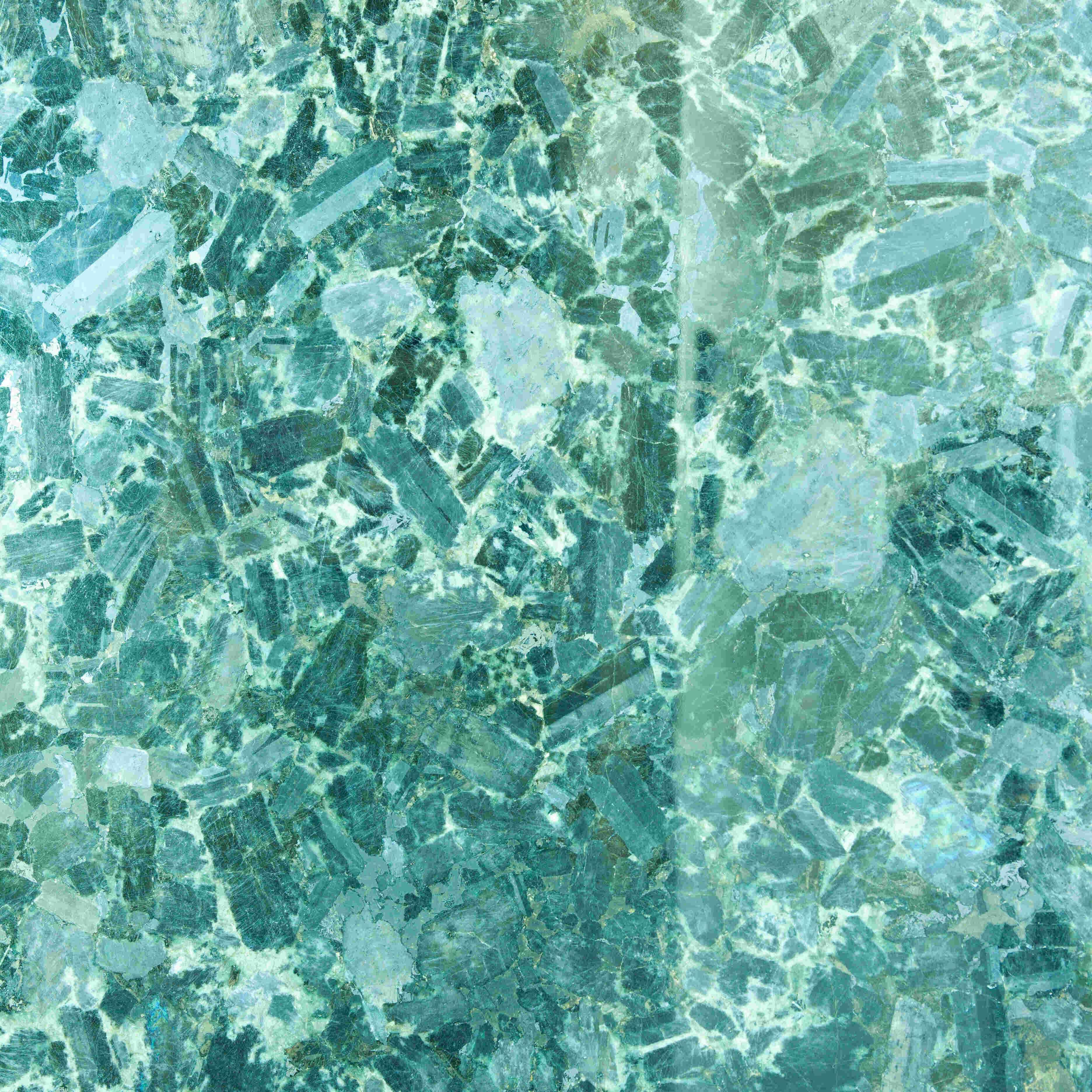
#61: Volga Blue: Labradorite Anorthosite, Calcium-Rich Intrusive Igneous Rock; Ukraine
ACKNOWLEDGMENTS
We are grateful to our major benefactor, Reverend Marta Sutton Weeks-Wulf, and the many other individuals and organizations whose gifts made this building possible. We thank the many companies who provided in-kind gifts that greatly enhance the furnishings, displays, and special projects incorporated into this facility. We give special recognition to Department of Geology and Geophysics faculty members, including former dean, Frank Brown, who dedicated tremendous time and thought into making this building a special place for future generations of students, teachers, and researchers to learn about Earth science. Thank you all!
We also wish to acknowledge the role of Dr. Marjorie A. Chan who was department chair at the time the building was designed and built. She headed the display committee and design team, overseeing details of the experiential displays, and gathering in-kind donations, including polished rock slabs that now grace the walls.
If we neglected to mention any major donor, we sincerely apologize.
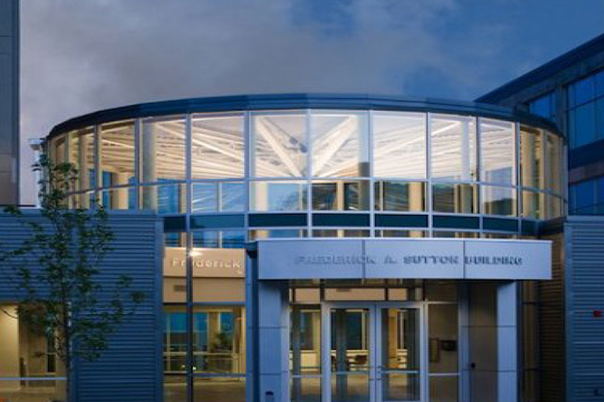


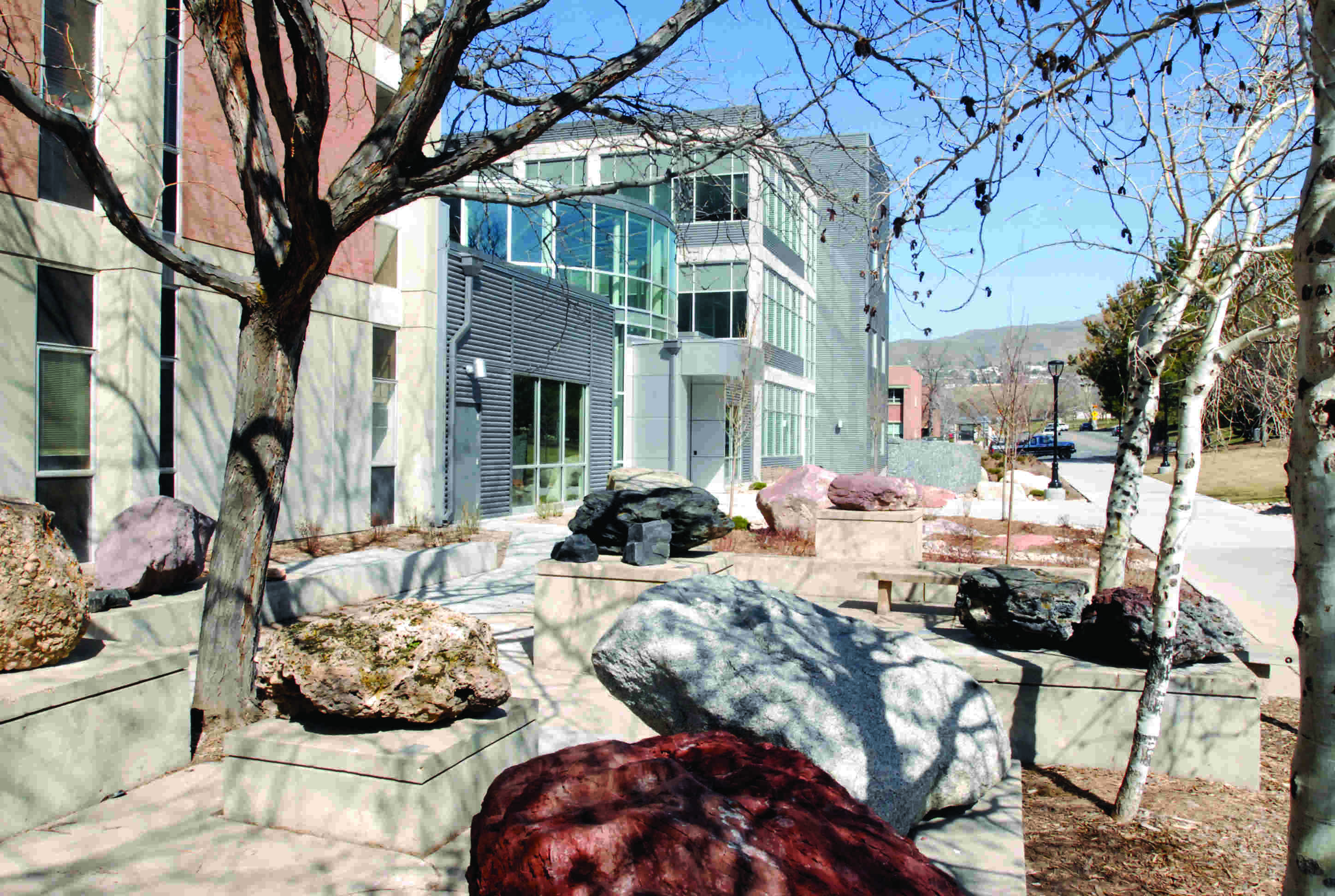 Rock monoliths from Butterfield Gardens merge with
Rock monoliths from Butterfield Gardens merge with